autism spectrum disorder
description: range of neurodevelopmental disorders
116 results
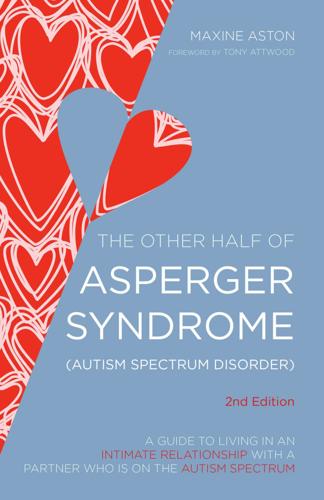
The Other Half of Asperger Syndrome (Autism Spectrum Disorder): A Guide to Living in an Intimate Relationship With a Partner Who Is on the Autism Spectrum Second Edition
by
Maxine Aston
Published 21 Feb 2014
RC553.A88A799 2014 616.85’8832--dc23 2013048195 British Library Cataloguing in Publication Data A CIP catalogue record for this book is available from the British Library ISBN 978 1 84905 498 0 eISBN 978 0 85700 920 3 For all who love a partner who has Asperger syndrome (Autism Spectrum Disorder) CONTENTS Foreword by Tony Attwood ACKNOWLEDGEMENTS PREFACE Introduction Part I 1Some Facts about Asperger Syndrome (Autism Spectrum Disorder) 2Is Asperger Syndrome (Autism Spectrum Disorder) Predominantly a Male Condition? 3Suspected, Undiagnosed Asperger Syndrome (Autism Spectrum Disorder) 4Obsessive Behaviour or Special Interests? 5Socialising, Friends, Present and Past 6Trying to Communicate 7Seeking a Diagnosis 8After the Diagnosis, What Next?
…
9Initial Attraction 10Getting Help Part II 11Living and Coping with Asperger Syndrome (Autism Spectrum Disorder) 12Improving Communication 13Getting the Message Across 14Anger 15Sex 16Parenting 17Money Matters 18Special Interests 19Routines 20Socialising Solutions 21Empathy and Reciprocity 22Asperger Syndrome (Autism Spectrum Disorder) Cannot Be Blamed For Everything 23Staying Together USEFUL SOURCES OF HELP AND INFORMATION REFERENCES FURTHER READING INDEX FOREWORD In my clinical practice, I see many couples for advice on their relationship. They are often the parents of a child with an Autism Spectrum Disorder, recognising that one, or sometimes both, have the profile of abilities associated with Autism Spectrum Disorder, although expressed in a much more subtle way than in their child.
…
Since I wrote the first edition of this book, changes have been made to the most recent version of the Diagnostic and Statistical Manual of Mental Disorders (5th edition, APA 2013) and it has been decided by them no longer to use the term Asperger syndrome and to refer to individuals who come under this bracket as simply having an Autism Spectrum Disorder. This book maintains the use of the term Asperger syndrome to describe those at the higher-functioning end of this spectrum but it also acknowledges that those with Asperger syndrome fall under the broader term of Autism Spectrum Disorder. Whether your partner refers to themselves as having Asperger syndrome or an Autism Spectrum Disorder, the information in this book will be for you. INTRODUCTION It is over 13 years since The National Autistic Society contacted me and asked if I would write an information leaflet for partners who were in a relationship with an adult with Asperger syndrome.
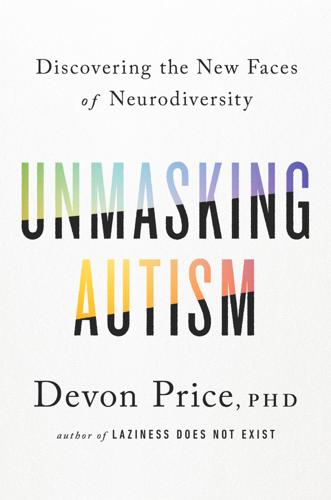
Unmasking Autism: Discovering the New Faces of Neurodiversity
by
Devon Price
Published 4 Apr 2022
The relationship between autism quotient, anxiety, and internet addiction. Research in Autism Spectrum Disorders, 8(11), 1521–1526. BACK TO NOTE REFERENCE 40 Mazurek, M. O., Engelhardt, C. R., & Clark, K. E. (2015). Video games from the perspective of adults with autism spectrum disorder. Computers in Human Behavior, 51, 122–130. BACK TO NOTE REFERENCE 41 Mazurek, M. O., & Engelhardt, C. R. (2013). Video game use and problem behaviors in boys with autism spectrum disorders. Research in Autism Spectrum Disorders, 7(2), 316–324. BACK TO NOTE REFERENCE 42 Griffiths, S., Allison, C., Kenny, R., Holt, R., Smith, P., & Baron-Cohen, S. (2019).
…
Brief report: Intuitive and reflective reasoning in autism spectrum disorder. Journal of Autism and Developmental Disorders, 47(8), 2595–2601. BACK TO NOTE REFERENCE 27 Seltzer, M. M., Krauss, M. W., Shattuck, P. T., Orsmond, G., Swe, A., & Lord, C. (2003). The symptoms of autism spectrum disorders in adolescence and adulthood. Journal of Autism and Developmental Disorders, 33(6), 565–581. BACK TO NOTE REFERENCE 28 Hazen, E. P., Stornelli, J. L., O’Rourke, J. A., Koesterer, K., & McDougle, C. J. (2014). Sensory symptoms in autism spectrum disorders. Harvard Review of Psychiatry, 22(2), 112–124.
…
BACK TO NOTE REFERENCE 2 “Interview with Temple Grandin.” January 2, 2006. Retrieved April 14, 2019. BACK TO NOTE REFERENCE 3 Petrou, A. M., Parr, J. R., & McConachie, H. (2018). Gender differences in parent-reported age at diagnosis of children with autism spectrum disorder. Research in Autism Spectrum Disorders, 50, 32–42. BACK TO NOTE REFERENCE 4 Livingston, L. A., Shah, P., & Happé, F. (2019). Compensatory strategies below the behavioural surface in autism: A qualitative study. The Lancet Psychiatry, 6(9), 766–777. BACK TO NOTE REFERENCE 5 https://www.cdc.gov/mmwr/volumes/69/ss/ss6904a1.htm?
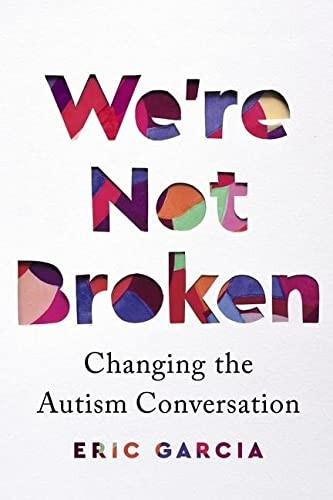
We're Not Broken: Changing the Autism Conversation
by
Eric Garcia
Published 2 Aug 2021
autism alone is never the cause: Deanna Pan, “The Media’s Post-Newtown Autism Fail,” Mother Jones, December 22, 2012, www.motherjones.com/politics/2012/12/journalism-newtown-autistics/. 75 percent of all research: Office of Autism Research Coordination, National Institute of Mental Health, Autistica, Canadian Institutes of Health Research, and Macquarie University, “2016 International Autism Spectrum Disorder Research Portfolio Analysis Report,” October 2019, 42, https://iacc.hhs.gov/publications/international-portfolio-analysis/2016/portfolio_analysis_2016.pdf. But autism likely can’t be cured: Mayo Clinic Staff, “Autism Spectrum Disorder—Diagnosis and Treatment—Mayo Clinic,” Mayo Clinic, January 6, 2018, www.mayoclinic.org/diseases-conditions/autism-spectrum-disorder/diagnosis-treatment/drc-20352934. An estimated one in fifty-four children: “Data & Statistics on Autism Spectrum Disorder,” Centers for Disease Control and Prevention, November 15, 2018, www.cdc.gov/ncbddd/autism/data.html.
…
estimated that 2.2 percent of adults were autistic: Fox, “First US Study of Autism.” that 20 to 30 percent of all autistic individuals: “Autism Spectrum Disorder Fact Sheet,” National Institute of Neurological Disorders and Stroke, 3–13, 2020, https://www.ninds.nih.gov/Disorders/Patient-Caregiver-Education/Fact-Sheets/Autism-Spectrum-Disorder-Fact-Sheet. sudden unexpected death in people with epilepsy: “SUDEP,” Epilepsy Foundation, 2020, https://www.epilepsy.com/learn/early-death-and-sudep/sudep. surveyed more than 27,000 autistic adults: Tatja Hirvikoski et al., “Premature Mortality in Autism Spectrum Disorder,” British Journal of Psychiatry 208, no. 3 (March 2016), https://www.cambridge.org/core/journals/the-british-journal-of-psychiatry/article/premature-mortality-in-autism-spectrum-disorder/4C9260DB64DFC29AF945D32D1C15E8F2.
…
Assimilation is capital, and those without the ability to assimilate often can’t give their autistic children the chance to be accepted as autistic and therefore have their humanity accepted. A study published in 2013 in Pediatrics found that in a sample of 267 primary care pediatricians in California, 30.4 percent offered general developmental screenings and 42.9 percent offered screenings for autism spectrum disorders, but only 17.7 percent offered general developmental screenings in Spanish and only 28.7 percent offered screenings for autism spectrum disorders in Spanish. Katharine Zuckerman, an associate professor at Oregon Health and Science University who coauthored the study, said the irony is that people are often assessed for autism because they have trouble communicating with others.
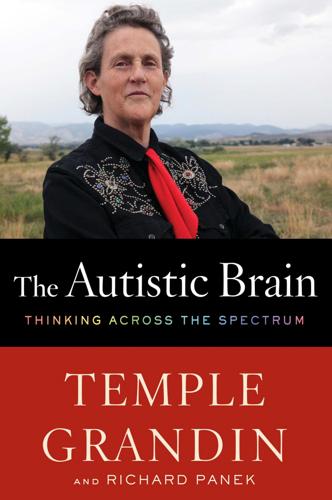
The Autistic Brain: Thinking Across the Spectrum
by
Temple Grandin
and
Richard Panek
Published 15 Feb 2013
Hiding and Seeking [>] a 2011 review article: Elysa Jill Marco et al., “Sensory Processing in Autism: A Review of Neurophysiologic Findings,” Pediatric Research 69, no. 5, pt. 2 (May 2011): 48R–54R. [>] one 2009 study: Laura Crane et al., “Sensory Processing in Adults with Autism Spectrum Disorders,” Autism 13, no. 3 (May 2009): 215–28. [>] another study that same year: Lisa D. Wiggins et al., “Brief Report: Sensory Abnormalities as Distinguishing Symptoms in Autism Spectrum Disorders in Young Children,” Journal of Autism and Developmental Disorders 39 (2009): 1087–91. [>] big scholarly book: David Amaral et al., eds., Autism Spectrum Disorders (New York: Oxford University Press, 2011). [>] “like someone is drilling”: http://www.autismsouthafrica.org/virtuallibrary.htm.
…
Buie et al., “Evaluation, Diagnosis, and Treatment of Gastrointestinal Disorders in Individuals with ASDs: A Consensus Report, ” Pediatrics 125, supplement 1 (January 2010): S1–18. [>] “One of the curses”: David R. Simmons et al., “Vision in Autism Spectrum Disorders,” Vision Research 49 (2009): 2705–39. [>] In a 2010 presentation: http://iacc.hhs.gov/events/2010/slides_susan_swedo_043010.pdf. [>] researchers have shown: See, for example, K. K. Chadman, “Fluoxetine but Not Risperidone Increases Sociability in the BTBR Mouse Model of Autism,” Pharmacology, Biochemistry, and Behavior 97, no. 3 (January 2011): 586–94. [>] A 2011 paper: Laura Pina-Camacho et al., “Autism Spectrum Disorder: Does Neuroimaging Support the DSM-5 Proposal for a Symptom Dyad? A Systematic Review of Functional Magnetic Resonance Imaging and Diffusion Tensor Imaging Studies,” Journal of Autism and Developmental Disorders 42, no. 7 (July 2012): 1326–41. [>] intermittent explosive disorder: See, for example, Emil F.
…
Coccaro, “Intermittent Explosive Disorder as a Disorder of Impulsive Aggression for DSM-5,” American Journal of Psychiatry 169 (June 2012): 577–88. [>] A later study: M. Huerta et al., “Application of DSM-5 Criteria for Autism Spectrum Disorder to Three Samples of Children with DSM-IV Diagnoses of Pervasive Developmental Disorders,” American Journal of Psychiatry 10 (October 2012): 1056–64. [>] A 2010 article: Judith S. Verhoeven et al., “Neuroimaging of Autism,” Neuroradiology 52, no. 1 (2010): 3–14. [>] In a 2012 article: Matthew W. State and Nenad Šestan, “The Emerging Biology of Autism Spectrum Disorders,” 6. Knowing Your Own Strengths [>] According to Laurent Mottron: Laurent Mottron, “Changing Perceptions: The Power of Autism,” Nature 479 (November 2011): 33–35. [>] A 2009 report: Grant K.
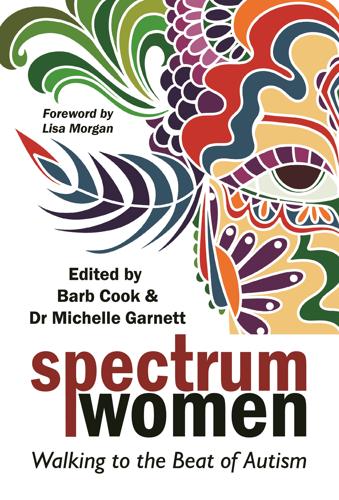
Spectrum Women: Walking to the Beat of Autism
by
Barb Cook
and
Samantha Craft
Published 20 Aug 2018
Hirvikoski, T. and Blomqvist, M. (2015) “High self-perceived stress and poor coping in intellectually able adults with autism spectrum disorder.” Autism 19, 6, 752–757. Hirvikoski, T., Mittendorfer-Rutz, E., Boman, M., Larsson, H., Lichtenstein, P. and Bölte, S. (2016) “Premature mortality in autism spectrum disorder.” The British Journal of Psychiatry 208, 3, 232–238. Holliday Willey, L. (1999) Pretending to be Normal: Living with Asperger’s Syndrome (Autism Spectrum Disorder). London: Jessica Kingsley Publishers. Jones, L., Goddard, L., Hill, E.L., Henry, L.A. and Crane, L. (2014) “Experiences of receiving a diagnosis of autism spectrum disorder: A survey of adults in the United Kingdom.”
…
Retrieved 13 April 2018, from https://my.clevelandclinic.org/health/diseases/17237-mitochondrial-disease Lesko, A. (2017) The Complete Guide to Autism and Healthcare. Arlington, TX: Future Horizons. Lum, M., Garnett. M.S. and O’Connor, E. (2014) “Health Communication: A pilot study comparing perceptions of women with and without high functioning autism spectrum disorder.” Research in Autism Spectrum Disorders 8, 1713–1721. Szakacs, G. and Davi, A. (2017) “Risk of Anesthesia Regression in Children with Autism Spectrum Disorder and Mitochondrial Dysfunction.” Mitoaction.org. Retrieved 28 November 2017, from www.mitoaction.org/files/Risk%20of%20Anesthesia%20Regression%20(2).pdf Chapter 16 American Psychological Association (2006) “Stress Weakens the Immune System.”
…
Person/woman/girl/those on the spectrum. “With autism” has been used in context academically and historically. • Autism spectrum disorder (ASD). ASD has been used instead of autism spectrum condition (ASC) for academic purposes. This is not a reflection of our personal choice in identification. • Asperger syndrome, Asperger’s, and the personal identifying term of aspie. We recognize that Asperger syndrome was removed from the current Diagnostic and Statistical Manual of Mental Disorders (DSM-5) and was brought together under the Autism Spectrum Disorder classification. At time of printing of this book, the International Classification of Diseases (ICD-10) still formally recognizes Asperger syndrome as a diagnosis.
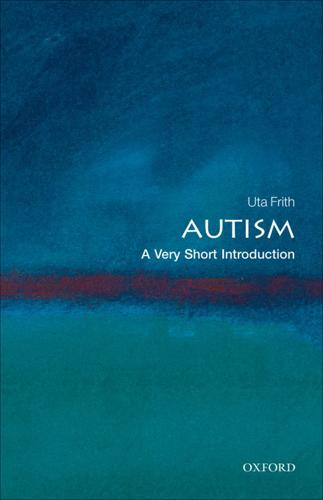
Autism: A Very Short Introduction
by
Uta Frith
Published 22 Oct 2008
G., eds. (2006) Imitation and the Social Mind: Typical Development and Autism. New York: Guilford Press. On non-social features Bird, G., Catmur, C., Silani, G., Frith, C., Frith, U. (2006) Attention does not modulate neural responses to social stimuli in autism spectrum disorders. Neuroimage, 31(4): 1614–24. Gilbert S. J., Bird G., Brindley R., Frith C. D. and Burgess P. W. (2008) Atypical recruitment of medial prefrontal cortex in autism spectrum disorders: An fMRI study of two executive function tasks, Neuropsychologia, 46(9): 2281–91. Happé, F., and Frith, U. (2006) The weak central coherence account: detail focused cognitive style in autistic spectrum disorders.
…
I will therefore frequently use the familiar terms autism and autistic, as a reminder that there is central idea behind the spectrum. Three cases Now we shall look at three cases closely based on real cases from different parts of the autism spectrum. David has classic autism. Gary has an autism spectrum disorder (ASD) with a diffuse and atypical picture, but such complex cases are actually quite common. Edward has classic Asperger syndrome. David David was 3 when he was diagnosed as autistic. At that time he hardly looked at people, was not talking, and seemed lost in his own world. He loved to bounce on a trampoline for hours and was extremely adept at doing jigsaw puzzles.
…
Young children as well as adults can now be identified, as can individuals of all levels of intelligence. Further, there are mild cases and severe cases. All this adds up to more cases. What are the numbers now? The most reliable information to date comes from a British study of 57,000 children aged 9 to 10 years. In this group the total prevalence of cases of autism spectrum disorder was just over 1 per cent. If you only looked at autism cases, then the estimate was 0.4 per cent, with 0.2 per cent fulfilling the narrow criteria of classic autism. Other forms of autistic disorder, including Asperger syndrome, make up around 0.7 per cent. If we take the 1 per cent estimate seriously, then in the USA, with a population of 280 million, there are a staggering two to three million individuals who have some form of autism; in the UK, with a population of about 60 million, there are at least half a million.
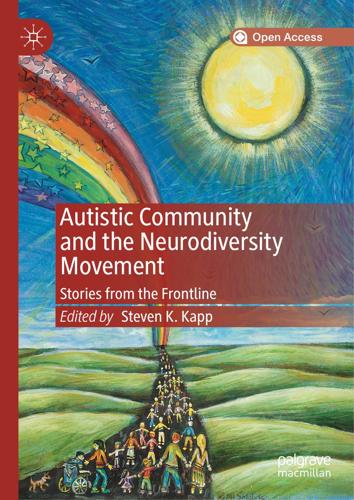
Autistic Community and the Neurodiversity Movement: Stories From the Frontline
by
Steven K. Kapp
Published 19 Nov 2019
What the DSM-5 portends for research, diagnosis, and treatment of autism spectrum disorders. Current Psychiatry Reports, 14 (6), 739–747. 192 S. K. Kapp and A. Ne’eman 24. Wilson, C. E., Gillan, N., Spain, D., Robertson, D., Roberts, G., Murphy, C. M., et al. (2013). Comparison of ICD-10R, DSM-IV-TR and DSM-5 in an adult autism spectrum disorder diagnostic clinic. Journal of Autism and Developmental Disorders, 43(11), 2515–2525. 25. Swedo (S. E.) (and members of the DSM-5 Neurodevelopmental Disorders Workgroup). (2012, May 18). An update on the DSM-5 recommendations for autism spectrum disorder and other neurodevelopmental disorders.
…
O., Lu, F., Macklin, E. A., & Handen, B. L. (2018). Factors associated with DSM-5 severity level ratings for autism spectrum disorder. Autism. https://doi.org/10.1177/1362361318755318. 32. Mehling, M. H., & Tassé, M. J. (2016). Severity of autism spectrum disorders: Current conceptualization, and transition to DSM-5. Journal of Autism and Developmental Disorders, 46 (6), 2000–2016. 33. Gardner, L. M., Campbell, J. M., Keisling, B., & Murphy, L. (2018). Correlates of DSM-5 autism spectrum disorder levels of support ratings in a clinical sample. Journal of Autism and Developmental Disorders, 48(10), 3513–3523. 13 Lobbying Autism’s Diagnostic Revision in the DSM-5 193 34.
…
‘DSM-V is taking away our identity’: The reaction of the online community to the proposed changes in the diagnosis of Asperger’s disorder. Health, 18(2), 179–195. 10. Lord, C., Petkova, E., Hus, V., Gan, W., Lu, F., Martin, D. M., & et al. (2012). A multisite study of the clinical diagnosis of different autism spectrum disorders. Archives of General Psychiatry, 69 (3), 306–313. 11. American Psychiatric Association. (2011). Proposed revision: Autism Spectrum Disorder. Retrieved January 25, 2011 from http://www.dsm5.org/ ProposedRevision/Pages/proposedrevision.aspx?rid=94#. Retrieved from http://www.thinkingautismguide.com/2012/01/dsm-5-autism-criteriaclarifying-impact.html. 13 Lobbying Autism’s Diagnostic Revision in the DSM-5 191 12.
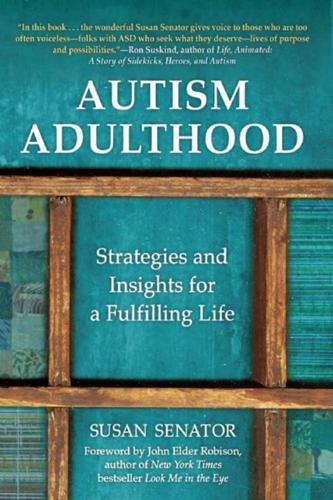
Autism Adulthood: Strategies and Insights for a Fulfilling Life
by
Susan Senator
Published 4 Apr 2016
• The Hidden Curriculum of Getting and Keeping a Job: Navigating the Social Landscape of Employment: A Guide for Individuals With Autism Spectrum and Other Social-Cognitive Challenges, Brenda Smith Myles, Judy Endow, and Malcolm Mayfield (Autism Asperger Publishing Company, 2012). • Intimate Relationships and Sexual Health: A Curriculum for Teaching Adolescents/Adults with High-Functioning Autism Spectrum Disorders and Other Social Challenges, Catherine Davies and Melissa Dubie, MS (Autism Asperger Publishing Company, 2011). • Learning the Hidden Curriculum, Judy Endow (Autism Asperger Publishing Company, 2012). • A Freshman Survival Guide for College Students with Autism Spectrum Disorders, Haley Moss (Jessica Kingsley, 2014). • Sexuality and Safety with Tom and Ellie book series, Kate E. Reynolds, Jonathon Powell (Jessica Kingsley, 2014).
…
Lorna Wing was one of the first to bring the issue of catatonia to the attention of the medical world [in her article “A Systematic Examination of Catatonia-like Clinical Pictures in Autism Spectrum Disorders,” in International Review of Neurobiology]. Unfortunately, I don’t think much has changed with regard to our understanding of the ‘disorder’ since that time. We may be hearing more about it because health care professionals are more aware of its existence.” I did some digging that night. On the National Institute of Health website, I came across a 2014 Frontiers in Psychiatry article called “Decalogue of Catatonia in Autism Spectrum Disorders” by Dirk M. Dhossche that began with a serious, if not downright dramatic, plea for more attention to catatonia from the scientific community: “This article is an unabashed drum roll for increased recognition and treatment of catatonia in autism spectrum disorders.”
…
Jessica Hellings, MD, and Andrea Witwer (www.autismspeaks.org) • “Bipolar disorder, schizophrenia, and other psychotic disorders in adults with childhood onset AD/HD and/or autism spectrum disorders,” O. Stahlberg, H. Soderstrom, M. Rastam, and C. Gillberg (Journal of Neural Transmission, 2004) • Organization for Autism Research’s downloadable Guide to Safety: www.researchautism.org • “Leaving the pediatrician: charting the medical transition of youth with autism,” Marina Sarris (Interactive Autism Network at Kennedy-Krieger, www.ian.org, 2014) • “Overweight and Obesity: Prevalence and Correlates in a Large Clinical Sample of Children with Autism Spectrum Disorder.” Katharine E. Zuckerman, Alison P. Hill, Kimberly Guion, Lisa Voltolina, and Eric Fombonne (www.ncbi.nlm.nih.gov/pmc/articles/PMC4058357) • “Accessible health care for autistic adults,” Cynthia Kim (autismwomensnetwork.org/accessible-health-care-for-autistic-adults/) • “Transition to adult health care for youth with autism spectrum disorders,” Karen Kuhlthau and Marji Erickson Warfield (Association of University Centers on Disabilities, aucd.org) • Exceptional Minds Studio (mentioned by Dr.

Marriage and Lasting Relationships With Asperger's Syndrome: Successful Strategies for Couples or Counselors
by
Eva A. Mendes
Published 1 Sep 2015
Individuals who used to receive one of these diagnoses now receive a singular diagnosis of Autism Spectrum Disorder, Level 1, 2 or 3, based on their level of functioning. Asperger’s Syndrome is now considered to be Autism Spectrum Disorder Level 1. Although the use of Asperger’s Syndrome may be waning in the clinical setting, my hope is that its use as a neurodiversity term will continue. Autism Spectrum Disorder or Difference (ASD) For the purpose of the book, I have used the letters “ASD” to indicate Autism Spectrum Disorder Level 1, as mentioned in the DSM-5. However, I am replacing the word “Disorder,” with the word “Difference,” because I view individuals on the autism spectrum as being neurologically different rather than having a disorder.
…
What makes this book so helpful—what makes it stand apart—is her ability to elucidate the realities of both partners in a neurodiverse relationship, with helpful insights and genuine compassion for everyone involved.” —David Finch, New York Times best-selling author of The Journal of Best Practices: A Memoir of Marriage, Asperger Syndrome, and One Man’s Quest to Be a Better Husband Marriage and Lasting Relationships with Asperger’s Syndrome (Autism Spectrum Disorder) of related interest The Other Half of Asperger Syndrome (Autism Spectrum Disorder) A Guide to Living in an Intimate Relationship with a Partner who is on the Autism Spectrum 2nd Edition Maxine Aston Foreword by Tony Attwood ISBN 978 1 84905 498 0 eISBN 978 0 85700 920 3 The Asperger Couple’s Workbook Practical Advice and Activities for Couples and Counsellors Maxine Aston ISBN 978 1 84310 253 3 eISBN 978 1 84642 851 7 Alone Together Making an Asperger Marriage Work Katrin Bentley Foreword by Tony Attwood ISBN 978 1 84310 537 4 eISBN 978 1 84642 623 0 Troubleshooting Relationships on the Autism Spectrum A User’s Guide to Resolving Relationship Problems Ashley Stanford ISBN 978 1 84905 951 0 eISBN 978 0 85700 808 4 Sex, Sexuality and the Autism Spectrum Wendy Lawson Foreword by Glenys Jones ISBN 978 1 84310 284 7 eISBN 978 1 84642 112 9 Been There.
…
“Wow! Marriage and Lasting Relationships with Asperger’s Syndrome (Autism Spectrum Disorder) is a thorough, finely written, insightful, real-world analysis of neurodiverse interpersonal relationships. Author Eva Mendes knows, really knows, what ASD is all about, how it can bewilder, irritate or even collapse a relationship. Partners trying to communicate through the curves of Asperger syndrome and autism will be able to use Mendes’ guidance to great advantage. Couples’ lives will be touched and changed for the better, thanks to this book!” —Liane Holliday Willey, author of Safety Skills for Asperger Women and Pretending to be Normal “Eva Mendes has precisely addressed ‘emotional-disconnect’ in Asperger/HFA relationships, something that I learned through life...the hard way.
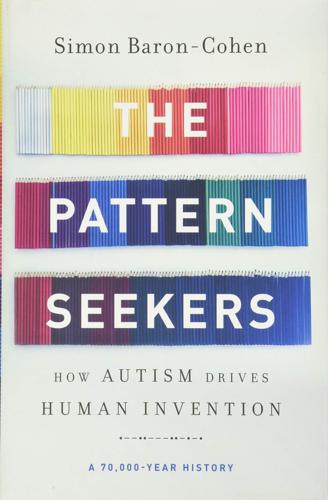
The Pattern Seekers: How Autism Drives Human Invention
by
Simon Baron-Cohen
Published 14 Aug 2020
See Simons Foundation, “SFARI gene,” www.sfari.org/resource/sfari-gene/; Warrier and Baron-Cohen, “The genetics of autism”; and Huguet et al., “The genetics of autism spectrum disorders.” 20. On autism and prematurity, see N. Padilla et al. (2015), “Poor brain growth in extremely preterm neonates long before the onset of autism spectrum disorder symptoms,” Cerebral Cortex 27, 1245–1252. On autism and birth complications, see S. Jacobsen et al. (2017), “Association of perinatal risk factors with autism spectrum disorder,” American Journal of Perinatology 34(3), 295–304. 21. See G. Owens et al. (2008), “LEGO® therapy and the social use of language programme: An evaluation of two social-skills interventions for children with high functioning autism and Asperger syndrome,” Journal of Autism and Developmental Disorders 38, 1944–1957; and D.
…
On the rate of rare genetic mutations in autism, and for a review of twin studies of autism, see G. Huguet et al. (2016), “The genetics of autism spectrum disorders,” in P. Sassone-Corsi and Y. Christen, eds., A time for metabolism and hormones: Research and perspectives in endocrine interactions (Springer). On the role of common genetic variants in autism, see J. Grove et al. (2019), “Identification of common genetic risk variants for autism spectrum disorder,” Nature Genetics 51, 431–444. 30. On the genetic association between autism and mathematical ability, see S. Baron-Cohen et al. (2007), “Mathematical talent is linked to autism,” Human Nature 18, 125–131. 31.
…
Zilhao (2010), “Symbolic use of marine shells and mineral pigments by Iberian Neandertals,” Proceedings of the National Academy of Sciences 107(3), 1023–1028. See J. Baio et al. (2018), “Prevalence of autism spectrum disorder among children aged 8 years—Autism and Developmental Disabilities Monitoring Network, 11 sites, United States, 2014,” MMWR Surveillance Summary 67 (SS-6), 1–23. CHAPTER 8: SEX IN THE VALLEY 1. See J. Baio et al. (2018), “Prevalence of autism spectrum disorder among children aged 8 years—Autism and Developmental Disabilities Monitoring Network, 11 sites, United States, 2014,” MMWR Surveillance Summary 67 (SS-6), 1–23. 2.
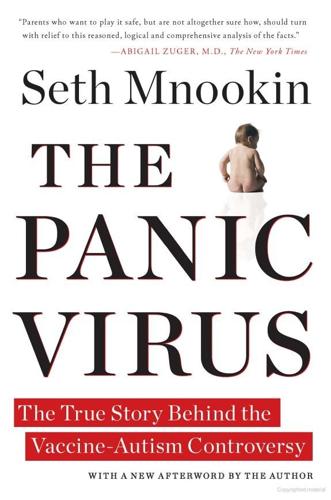
The Panic Virus: The True Story Behind the Vaccine-Autism Controversy
by
Seth Mnookin
Published 3 Jan 2012
Weekly Epidemiological Record 2005;80(4): 29–40. “Prevalence of Autism Spectrum Disorders—Autism and Developmental Disabilities Monitoring Network, 14 Sites, United States, 2002.” Centers for Disease Control and Prevention. Morbidity and Mortality Weekly Report 2007;56(SS01): 12–28. “Prevalence of Autism Spectrum Disorders—Autism and Developmental Disabilities Monitoring Network, Six Sites, United States, 2000.” Centers for Disease Control and Prevention. Morbidity and Mortality Weekly Report 2007;56(SS01): 1–11. “Prevalence of Autism Spectrum Disorders—Autism and Developmental Disabilities Monitoring Network, United States, 2006.”
…
pagename=asa_home. 82 The Autism Research Institute: “ARI Mission Statement,” Autism Research Institute, n.d., http://www.autism.com/gen_mission.asp. 83 Lobbying efforts in states: Saul Spigel, “Medicaid Autism Waivers and State Agencies Serving People with Autism,” Connecticut General Assembly, April 10, 2007, http://www.cga.ct.gov/2007/rpt/2007-R-0319.htm. 83 As the anthropologist Roy Richard Grinker explains: Grinker, Unstrange Minds, 130–31. 83 there are huge variations: Lynn Waterhouse et al., “Diagnosis and Classification in Autism,” Journal of Autism and Developmental Disorders 1996;26(1): 59–86. 83 The most remarkable example of the arbitrary nature: Grinker, Unstrange Minds, 141. 83 the rise in the number of children: Craig J. Newschaffer et al., “The Epidemiology of Autism Spectrum Disorders,” Annual Review of Public Health April 2007;28:240. 84 including advanced maternal age: Janie F. Shelton, Daniel J. Tancredi, and Irva Hertz-Picciotto, “Independent and Dependent Contributions of Advanced Maternal and Paternal Ages to Autism Risk,” Autism Research February 2010:3(2): 30–39. 84 paternal age as related to maternal age: Maureen Durkin et al., “Advanced Paternal Age and the Risk of Autism Spectrum Disorders,” American Journal of Epidemiology December 2008;168(11):1268–76; Shelton, Tancredi, and Hertz-Picciotto, “Independent and Dependent Contributions of Advanced Maternal and Paternal Ages to Autism Risk.” 84 proximity to families with autistic children: Ka-Yuet Liu, Marissa King, and Peter S.
…
HRSA—Health Resources and Services Administration (U.S.) MRC—Medical Research Council (U.K.) NIH—National Institutes of Health (U.S.) NIMH—National Institute of Mental Health (U.S.) IOM—Institute of Medicine (U.S.) SSI—Statens Serum Institut (Denmark) WHO—World Health Organization Medical Terms ASD—autism spectrum disorder IBD—inflammatory bowel disease PDD-NOS—pervasive developmental disorder, not otherwise specified Organizations ARI—Autism Research Institute CAN—Cure Autism Now DAN!—Defeat Autism Now! JABS—Justice, Awareness and Basic Support (U.K.) NAAR—National Alliance for Autism Research NVIC—National Vaccine Information Center TACA—Talk About Curing Autism Professional Associations AAP—American Academy of Pediatrics AAPS—Association of American Physicians and Surgeons AMA—American Medical Association APA—American Psychiatric Association Publications DSM—Diagnostic and Statistical Manual of Mental Disorders JAMA—Journal of the American Medical Association NEJM—The New England Journal of Medicine Vaccines DPT—diphtheria-pertussis-tetanus Hib—Haemophilus influenzae type b MMR—measles-mumps-rubella Other NCVIA—National Childhood Vaccine Injury Act PSC—Petitioners’ Steering Committee (Omnibus Autism Proceeding) VAERS—Vaccine Adverse Event Reporting System VSD—Vaccine Safety Datalink THE PANIC VIRUS INTRODUCTION On April 22, 2006, Kelly Lacek looked around her dinner table and smiled: Dan, her husband of thirteen years, was there, along with the couple’s three children, Ashley, Stephen, and Matthew.
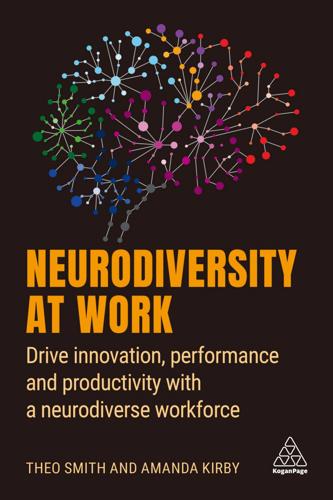
Neurodiversity at Work: Drive Innovation, Performance and Productivity With a Neurodiverse Workforce
by
Amanda Kirby
and
Theo Smith
Published 2 Aug 2021
Feelings of frustration because the person wants to be organized and is often aware of their challenges. Strengths associated with ADHD Creativity. Good initiator. Energy. Hyper-focused. Makes connections between things. Project oriented. An ideas person. What is Autism Spectrum Disorder or Condition? Definition Autism Spectrum Disorder (ASD)/or Autism Spectrum Condition (ASC) is a developmental condition that affects communication and social inter-relatedness. Some people may have a diagnosis of autism or Asperger’s syndrome depending when they were diagnosed. These were conditions that used to be diagnosed separately but are now considered to be part of ASD/ASC5,6 Different people will have different challenges and strengths and not one person is similar to another.
…
This includes Traumatic Brain Injury but also stroke, encephalitis, brain cancer, hypoxia, poisoning, substance abuse and other brain injuries. ADD: This stands for Attention Deficit Disorder. ADHD: This stands for Attention-Deficit/Hyperactivity Disorder. AS: This stands for Asperger’s Syndrome. ASD: This stands for Autism Spectrum Disorder also known as ASC. Asperger’s Syndrome: See Autism Spectrum Disorder. Asperger’s Syndrome is a milder ASD which was not typically associated with low IQ. In 2013, Asperger’s Syndrome was removed from DSM-5. It remains a diagnosis in ICD-10 but has been removed from ICD-11. Attention Deficit Disorder: Attention Deficit Disorder is an old term for ADHD.
…
These cannot be controlled by the person for very long and are severe enough to negatively affect the person’s life. OCD: This stands for Obsessive-Compulsive Disorder. PDD-NOS: This stands for Pervasive Developmental Disorder – Not Otherwise Specified. Pervasive Developmental Disorder – Not Otherwise Specified: See Autism Spectrum Disorder. PDD-NOS is an Autism Spectrum Disorder which is often, but not always, milder than typical Autism but more severe than Asperger’s Syndrome. PDD-NOS is sometimes referred to as Atypical Autism. In 2013, PDD-NOS was removed from DSM-5. It remains a diagnosis in ICD-10 but has been removed from ICD-11. Phoneme: The smallest unit of sound, eg ‘b’, ‘t’ or ‘ch’.
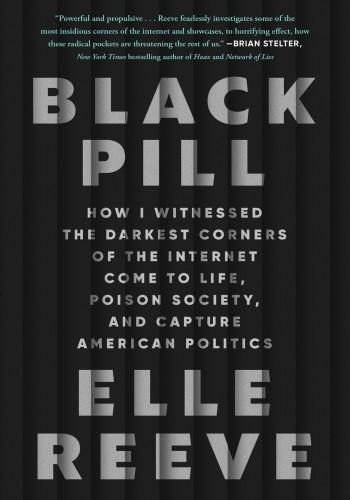
Black Pill: How I Witnessed the Darkest Corners of the Internet Come to Life, Poison Society, and Capture American Politics
by
Elle Reeve
Published 9 Jul 2024
(The American Psychiatric Association has since dropped Asperger’s as a diagnosis in favor of autism spectrum disorder.) He looked delighted as I slapped the arm of my chair and shouted, “I knew it!” Now we had a language to explain their lives. Autistic people are more than twice as likely to be left-handed as the general population. It’s one of many bits of autistic trivia I’d picked up while researching the anonymous extremist internet. From the very first days I started going on 4chan to figure out what the alt-right was, I noticed that a stunning number of posts on the website used the term “autist,” as in autistic, or someone with autism spectrum disorder. It was both a term of endearment and derision.
…
But for a long time, the only internet extremists for whom I could find documentation of their mental health were those who’d committed acts of political violence, because their psychiatric evaluations were evidence in court. In early 2017, Dylann Roof was sentenced to death in federal court for murdering nine people at a Black church in Charleston two years earlier. His defense team had hired Dr. Rachel Loftin, a clinical psychologist who specializes in autism spectrum disorder, and she’d diagnosed him with it in jail. But Roof did not want this evidence presented at his sentencing. “I didn’t want my act to be discredited,” he told the judge. “I don’t want anybody to think I did it because I have some kind of mental problem…. I wanted to increase racial tension.”
…
Two, the rigid worldview makes it easier to understand the way the world works. And three, the forums have archives, so they can go back in time and read to understand how users talked to each other and then mimic those interactions. With Parrott’s disclosure, I’d finally found people who had been diagnosed with autism spectrum disorder and been drawn to extremism through the internet—but had not killed anybody. I called Heimbach the next morning. “You’ve cracked the code,” he said. “The secret of the alt-right is that it’s actually a movement of autistic guys with internet access.” They all got their start on the internet, back when there were no rules.

Visual Thinking: The Hidden Gifts of People Who Think in Pictures, Patterns, and Abstractions
by
Temple Grandin, Ph.d.
Published 11 Oct 2022
“Nazi Euthanasia Program: Persecution of the Mentally and Physically Disabled.” https://www.jewishvirtuallibrary.org/nazi-persecution-of-the-mentally-and-physically-disabled. Keith, J. M., et al. “The Influence of Noise on Autonomic Arousal and Cognitive Performance in Adolescents with Autism Spectrum Disorder.” Journal of Autism and Developmental Disorders 49, no. 1 (2019): 113–26. Kercood, S., et al. “Working Memory and Autism: A Review of the Literature.” Research in Autism Spectrum Disorders 8 (2014): 1316–32. Klass, P. “Fending Off Math Anxiety.” New York Times, April 24, 2017. Koretz, D. “The Testing Charade.” Ed.: Harvard Ed. Magazine, Winter 2018. Kuss, D. J., et al.
…
“Genetic Influences on Creativity: An Exploration of Convergent and Divergent Thinking.” Peer Journal (2018). doi:10.7717/peerj.5403. Hashem, S., et al. “Genetics of Structural and Functional Brain Changes in Autism Spectrum Disorder.” Translational Psychiatry 10 (2020). Haskell, M. Steven Spielberg: A Life in Films. New Haven: Yale University Press, 2017. Hegarty, J. P., et al. “Genetic and Environmental Influences on Structural Brain Measures in Twins with Autism Spectrum Disorder.” Molecular Psychiatry 25 (2020): 2556–66. Helmrich, B. H. “Window of Opportunity? Adolescence, Music, and Algebra.” Journal of Adolescent Research 25, no. 4 (2010): 557–77.
…
Not Less, Fisher describes how she found “her people” in the tech industry. They all loved technology. Being social was not the centerpiece of their lives. After her father died, she became distraught, and her boss suggested she see a grief counselor, who subsequently gave her a diagnosis of autism spectrum disorder. She said she felt like a social outcast, even though her career was going well. Fisher’s senior manager at Intel told her, “I wonder just how much of you being here now is because you never received a diagnosis.” For some adults diagnosed later in life, knowing they are autistic provides long-overdue insight into problems with employment and relationships they have long struggled with.
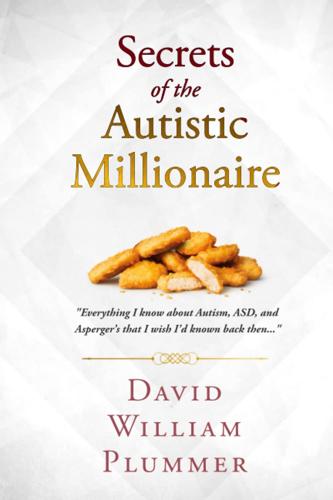
Secrets of the Autistic Millionaire: Everything I Know Now About Autism and Asperger's That I Wish I'd Known Then
by
David William Plummer
Published 14 Sep 2021
That much was obvious, and that was three decades ago. 3 And yet I just found out last week that I have autism! (I’m writing this part raw, in the aftermath of that diagnosis, to capture my early thoughts about it.) Ben and I had both long since moved on from Microsoft, and I had not seen him in several years. At some point along the way he had been surprised by a diagnosis of Autism Spectrum Disorder for his own adult daughter, and apparently, after better understanding the symptoms and seeing them in the context of his own family, one of his early thoughts was “Dave should get himself tested”. Soon after, he took me for lunch and told me about his daughter’s diagnosis, and without really being specific at all as to why, he encouraged me to investigate being tested for Autism myself.
…
I scored 1,550 (of 1,600) on the SAT but only if time wasn’t considered: had I been cut off at the official time limit, I would have only scored 1,150, a fairly average score. The reason? Apparently, I have serious Attention Deficit Disorder. Oh, and as noted: it also turns out that I have Autism. More accurately, I was officially diagnosed with autism spectrum disorder. As the doctor, my wife, and I flipped through the pages of the report in unison, terms like “significant social dysfunction” stared back at me. When we finally got to the autism-specific behaviors section, my wife was pleased to note: “Well, at least the numbers are good here, far above average!”
…
As we now turn our attention to the actual symptoms of autism, it is important to remember that an autism diagnosis is a complex piece of work performed by a trained neurologist or similarly qualified doctor. Simply 85 having a few (or even many) characteristics in common with people that do have autism does not mean you have a “dash” of autism, because autism spectrum disorder must meet a specific definition. Neurodiversity versus Disorder The “neurodiversity” school of thought holds that people with autism, regardless of its severity, are only different– –not less than––and that they do not have a disease or disorder that needs to be treated or cured. In this view, things that differentiate people with autism from the neurotypical give them distinct weaknesses and advantages, but they can succeed when they are properly accommodated and supported.
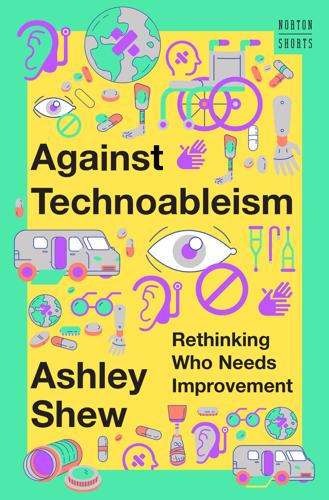
Against Technoableism: Rethinking Who Needs Improvement
by
Ashley Shew
Published 18 Sep 2023
INDEX ABA (applied behavioral analysis), 95–101, 103–5, 140n27 Ableism: The Causes and Consequences of Disability Prejudice (Nario-Redmond), 137n3 ableism anti-existence stigmatization/framing, 91–94 citizenship and, 18, 137n6 definition of, 7–8, 9, 17, 137n3 disability accommodation/benefit support and, 8–9, 38 disability community disassociation and, 81 discrimination encoding and, 18–19 internalized, 15, 69–70 language and, 4, 18, 26, 27–29 North American historical framework of, 24–25, 26–27 recognition of, 119 reinforces other biases, 17 accessible environments challenges/lack of, 5–7 disabled design and, 129 environmental design and, 119–20 inclusivity and, 115 supportive adaptations, 105, 139n21 technological intersections and, 8–9, 22–23, 43 universal design and, 8, 87, 88 accessible futures, 13, 114–15, 128–30 Accidents of Nature (Johnson), 31, 44–45 African American amputees, 58, 138n12 AI, 83, 107 All the Weight of Our Dreams: On Living Racialized Autism (Brown, Ashkenazy, Onaiwu), 19 Americans with Disabilities Act (ADA) (1990), 7, 27, 38 American Sign Language, 72 amputation, 64–66 Amputee Coalition of America, 14–15, 57, 74 amputees African American, 58, 138n12 arm, 15, 67–69 author’s experience and, 46–49, 121–23, 141nn41,43 community of, 3, 12–13, 14–15, 26, 58, 59, 74–75 leg, 16, 49, 64–67, 69–70 public images of, 56–60, 63, 64 See also prostheses Anxious Advocate, 103 applied behavioral analysis (ABA), 95–101, 103–5, 140n27 Arceneaux, Hayley, 128 arm amputees, 15, 67–69 ASAN (Autistic Self Advocacy Network), 80, 94, 106 Asasumasu, Kassianne, 81 Asbrock, Frank, 55 ASD (autism spectrum disorder). See autism spectrum disorder Ashkenazy, E., 19 Ashwell, Nicky, 53–54 Asperger, Hans, 80 Asperger’s syndrome. See autism spectrum disorder AstroAccess, 128 audism, 17 Autism Friendly Guide to Periods, The (Steward), 106 Autism Speaks, 37, 92–93, 94, 95 autism spectrum disorder (ASD) ABA therapies and, 96–101, 103–5, 140n27 accessible environments, 139n21 in adults, 105–6 community and, 77, 79–80, 105–6, 112 conversion therapy and, 102, 103 historical Nazi Germany and, 89–92 technological interventions and, 110–11 See also neurodivergence Autism Women’s and Nonbinary Network (AWN), 98 autistic scholars panel, 106–12 Autistic Self Advocacy Network (ASAN), 19, 80, 94, 106 Autistic Women and Nonbinary Network (AWN), 19, 106 autoimmune disabilities, 116 Autonomous Press, 106 aversives, 101, 104 AWN (Autistic Women and Nonbinary Network), 19, 106 Awni, Reem, 106–7, 109 Bad Cripple, The (Peace), 30 Baird, Davis, 139n16 Barnes, Elizabeth, 28, 52–53 Bascom, Julia, 96–97 behaviorism, 100, 103 Beratan, Gregg, 30 Berne, Patty, 124 Better Baby/Fitter Family contests, 91 bioethics, 119, 141n39 bionics, 55, 74, 75 biotechnology, 107 bitter cripple trope, 39–40 Black, Edwin, 89, 90 “Black American Amputation Epidemic, The” (Presser), 58 bodyminds, 85 Born Just Right (Reeves), 139n17 Brown, Lydia X.
…
So we still miss autism in a lot of children, especially girls and kids of color. Things are even worse for adults. Diagnosticians still want to interview or survey people’s parents and teachers—interviews that may not be appropriate or available for autistic adults. The current literature calls it autism spectrum disorder (ASD). This framing provides a way of making sense of the many spectrums of function and experience among autistic people; it is not one spectrum of function! Autistic people (and people with ADHD, who are also part of this history) have given a great gift to disability organizing, self-understanding, community, and activism with the ideas of neurodivergence and neurodiversity.
…
Bell (1927), 20 Çevik, Kerima, 104 Carter-Long, Lawrence, 27, 28 “Case for Conserving Disability” (Garland-Thomson), 52 Case for Disabled Astronauts, The (Wells-Jensen), 126 cerebral palsy, 91 chapter guide, 12–13 charity marketing campaigns, 36–37 Charles, Ray, 35 chattel slavery, 24 chemobrain, 11–12, 77, 78, 112 Chertock, Marlena, 126 “Choreography for One, Two, and Three Legs” (Sobchack), 138n15 citizenship, 18, 137n6 Claiming Crip (Hitselburger), 30 Clare, Eli, 124 climate change, 115–16, 117 “Clinically Significant Disturbance: On Theorists Who Theorize Theory of Mind” (Yergeau), 140n28 cochlear implants, 71–72 colonization effects, 24–25 concentration camps, 91 congenital amputees, 57 congenital disability, 89 Covid-19, 41, 52, 58, 115, 118, 138n13, 141n38 “crip,” 30 Crip Camp, 30 Crohn’s disease, 4 cross-disability community connections, 12, 77, 78–81, 85–86, 131 cultural technologies, 83, 107–8 Cyborg Jillian Weise, The, 2, 9–10 cyborgs (technologized disabled people), 55 Dancing with the Stars, 49, 60, 61, 63, 64 Deaf community, 71–72, 73 Deaf Gain, 73–74 Deaf Poets Society, The, 125–26 Decolonizing Mars Unconference, 117, 127–28 dehumanization, 88–89, 100, 101–2, 140n28 de Leve, Sam, 126, 130 “Descent” (Kinetic Light Project), 62–63 diabetes, 59, 138nn12–13 Diagnostic and Statistical Manual (DSM), 19, 102 disability conscious acts of empowerment, 28–30 economic categorization of, 24–25 historical framework of, 24–25, 26–27 pathologized approach vs. experiential/relational approach to, 85–86 political/relational contexts within, 88 as predictable human experience, 114–15 as social construct, 21 uncertainty and, 120–24 disability activism, 12, 79 campus accessibility campaigns, 138n7 celebrating disability embodiment and, 62–63 centering disabled people in disabled technology, 17, 110–11 charities garnering activist critique, 92 cross-community coalitions and, 79–80 disability rights, 44, 92, 105 disability rights movement, 27, 28, 31, 56, 92, 109 disability communities amputee community, 3, 12–13, 14–15, 26, 58, 59, 74–75 autistic community, 77, 79–80, 105–6, 112 claiming identity, 28–29 Deaf community, 71–72, 73 framing language of, 25–26, 30, 31 inclusion/diversity of, 22, 82, 115, 124 media generated tropes and, 40, 41–43 nondisabled experts harm to, 10–11, 19–20, 88 principles of justice, 125 representation and, 4, 56, 119 value of, 51, 56, 113, 122, 124, 125 See also neurodivergence disability culture, 107–8 disability experts, 2–3, 10–11, 17, 19–20, 50–51, 100, 123, 131 disability history, 24–25, 26–27, 31, 88–92 Disability History of the United States, A (Nielsen), 23 disability language, 11, 23, 25–26, 30, 31, 72 disability parking, 5–6, 38–39, 78 disability service professionals, 85–86, 95–96 disability and technology centering disabled as experts, 17, 110–11 cultural technologies, 83, 107–8 deterioration and usage, 60 disorientation and, 22–33, 44–45 historical Nazi Germany and, 89–92 insight for technological futures, 123–24, 128–30 media narratives and, 17, 32–33, 35, 50–51, 59, 60–61 medical model of disability and, 71 technoableism, defined, 7–8, 9, 130 technofuturists and, 114, 118–19 technological solutionism and, 4, 8, 9–10, 32, 51–53, 71–72, 74 See also accessible environments Disability Visibility Project, 114 disability welfare, 34, 38 disabled, etymology, 27–28 disabled ecologies, 116 Disposable Humanity (Snyder and Mitchell), 92 Divas with Disabilities Project, 56 Down syndrome, 91 Down Syndrome Uprising, 94 drapetomania, 25 DSM (Diagnostic and Statistical Manual), 19, 102 Dungeons & Dragons, 80, 107, 109 Ehlers-Danlos Syndrome (EDS), 85 emotional regulation, 97 enhancement technologies, 51 environmental health hazards, 116–17 environmental racism, 115–16 eugenics history, 89–92 euthanasia, 91 Evans, Dom, 35 exoskeletons, 8, 22, 50, 55 eye contact, 83, 84, 86, 99, 103 Fakorede, Foluso, 58 fatphobia, 17 feel-good narratives, 53–54 Feminine Boy Project, 102 Film-Dis, 35 flappy hands, 96–97 Forber-Pratt, Anjali, 28 forced sterilization, 88, 91 Funk, Cynthia, 56 Fuselier, Annabelle, 112 Gallaudet Eleven, 127, 130 Gardiner, Finn, 97, 106–9 Garland-Thomson, Rosemarie, 28, 52, 68 gay conversion therapy, 102, 103 gender dysphoria, 102 handicapped, 26–27 Hawking, Stephen, 128 Hearing Happiness (Virdi), 71, 73 Heidinger, Willi, 90 Herr, Hugh, 51, 53, 56, 67 Hershey, Laura, 124 Hitler, Adolf, 89, 90 Hitselburger, Karin, 30 Holocaust, 89 Hough, Derek, 61 “I Am Autism” (Wright), 92–93 IDEA (Individuals with Disability Education Act), 26 identity-first language, 25–26 Indian Residential Schools, 24 Indigenous peoples, 23, 24, 25 Individuals with Disability Education Act (IDEA), 26 inspirational-overcomers trope, 41–44, 46–47, 49, 54–55, 60–64, 71–72 inspiration porn, 41–44 institutionalization, 88 intellectual disabilities, 29, 95 Invitation to Dance (Linton), 62, 138n10 James, William, 139n16 Jerry’s Kids, 37 Johnson, Cyrée Jarelle, 124 Johnson, Harriet McBryde, 31, 37 Jones, Keith, 30 Judge Rotenberg Center (JRC), 104–5 Kennedy, John F., 139n23 Kennedy, Rosemary, 139n23 Krip Hop Nation, 30 Lamm, Nomy, 124 Law, Ashtyn, 35 Left Hand of Darkness, The (LeGuin), 120–21 leg amputees, 16, 49, 64–67, 69–70 LeGuin, Ursula K., 120, 121 Leib-Neri, Marisa, 23–24 Lewis, Jerry, 37 Lewis, Talila A., 9 Linton, Simi, 27, 62, 138n10 Little People of America, 94 Long Covid, 41, 52, 115, 118 Lovaas, Ivar, 100–102 Lumumba-Kasongo, Enongo 128 Lyme disease, 119 MacIntyre, Alasdair, 119 Magic Wand, The (Manning), 34 Manning, Lynn, 34–35 McCollins, André, 104–5 McCollins, Cheryl, 104 McLain, Elizabeth, 106–7, 111–12 McLeod, Lateef, 124 media narratives, 17, 32–33, 35, 50–51, 59, 60–61 See also tropes medical experimentation, 91 medical model of disability, 20–21, 31, 71, 139n22 mental illness, 25, 88, 102, 130 Meyer, Bertolt, 55 Milbern, Stacey, 124 Mitchell, David, 92 mobility equipment, 17, 22, 48, 55, 69, 131, 137n5 moochers-and-fakers trope, 38–39, 88–89 Moore, Leroy Jr., 30, 124 movement choices, 16, 62–63 Muscular Dystrophy Association telethons, 37, 92 Nario-Redmond, Michelle, 137n3 National Council on Independent Living, 94 National Institutes of Mental Health, 102 Native American cultures, 23, 24, 25 Nazi Germany, 89–92 Nelson, Mallory Kay, 14, 16, 137n5 neurodivergence addressing social structures, 86–87, 88 applied behavioral analysis and, 95–101, 103–5 Autism Speaks and, 37, 92–93, 94, 95 autistic community and, 77, 79–80, 105–6, 112 autistic scholars panel, 106–12 cross-disability community connections, 12, 77, 78–81, 85–86, 131 cultural technologies and, 83, 107–8 dehumanization and, 88–89, 100, 101–2, 140n28 disability service professionals and, 85–86, 95–96 historical Nazi Germany, 89–92 language of, 84–85 neurodiversity and, 12, 13, 80, 81, 82, 84 neuroqueer, 102 neurotypical and, 81–82, 83 stimming and, 96–97 See also autism spectrum disorder; disability communities neurodiversity, 12, 13, 80, 81, 82, 84 neurodiversity movement, 13, 82 neurodiversity paradigm. See neurodiversity neuroqueer, 102 neurotypical, 81–82, 83 Nielsen, Kim, 23 normative behavior patterns, 110 Not Dead Yet, 94 “nothing about us without us,” 109 Nović, Sara, 71, 72 Ollibean (Sequenzia), 98 Onaiwu, Morénike Giwa, 19 overstimulation, 104 Paralympics, 13 Parastronauts, 128 Patient No More, 31 Pavlov, Ivan Petrovich, 100, 140n29 Peace, Bill, 30, 40, 51, 54, 70 person-first language, 25–26 Peters, Gabrielle, 7 Piepzna-Samarasinha, Leah Lakshmi, 114, 120, 124 Pistorius, Oscar, 49 pitiable-freaks trope, 36–37, 88–89 Plains Indian Sign Language, 23 “Poet with a Cattle Prod” (Lovaas), 102–3 Pokémon, 11, 107, 108 pollution, 115–16 post traumatic stress disorder (PTSD), 3, 11, 97, 99 Postural Orthostatic Tachycardia Syndrome (POTS), 85, 118 post-viral syndromes, 52, 118, 141n38 POTS (Postural Orthostatic Tachycardia Syndrome), 85, 118 Presser, Lizzie, 58 Price, Margaret, 85 professional/expert treatments, 2–3, 10–11, 17, 19–20, 50–51, 100, 123, 131 Project Unicorn, 69 prostheses advanced technology and, 46–47, 49, 50, 68 arms and hands, 67–69 costs of, 16, 66–67 deterioration and usage, 60, 63–64, 139n16 disabled experience vs. media narratives, 53–55, 60, 61, 63 legs and, 64–67 maintenance and, 72, 75–76 personalized requirements of, 15–16 sexual abuse and, 16 technology choices and, 16–17, 69–70 as tools, 14–15, 54 “Prosthetics Do Not Change Everything” (Reeves), 68–69 PTSD (post traumatic stress disorder), 3, 11, 97, 99 Pulrang, Andrew, 30 Purdy, Amy, 49, 61 Quiet Hands (Bascom), 96 racism, 17, 18, 25 Radford Army Ammunition Plant (RAAP), 117 radical empiricism, 139n16 Real Experts, The (Sutton), 19, 106 Reeves, Jen Lee, 8, 68, 139n17 Reeves, Jordan, 8, 139n17 refrigerator mother theory, 41 Rehabilitation Act (1973), 27 rollator, 48, 76 Samuels, Ellen, 85 saneism, 17 Satterwhite, Emily, 117, 141–42n43 #SayTheWord campaign, 28, 29 Schalk, Sami, 42, 43, 85 scientific racism, 17 sensory regulation, 97 Sequenzia, Amy, 98 “Seven Traits for the Future” (MacIntyre), 119–20, 141n39 sexism, 17 sexual abuse, 16 shameful sinners trope, 40–41 Sheppard, Alice, 62 Shivers, Carolyn, 106, 109–10 Singer, Judy, 81 Sins Invalid, 124, 125 Sledge, Heath, 139n16 Snyder, Sharon, 92 Sobchack, Vivian, 138n15 social model of disability addressing social structures, 86–87, 88 disability from societal stigmas/barriers, 22–23 environmental design and, 119–20 vs. medical model of disability, 31, 139n22 neurodiversity/neurodivergence and, 82, 84–85, 139n21 technological solutions and, 71–72 social scripting exercises, 110 Society for Disability Studies, 62 space travel disabling effects, 118–19, 142n50 Spanish Flu (1918), 52 Sparrow, Maxfield, 98–99 spectrum disorder.
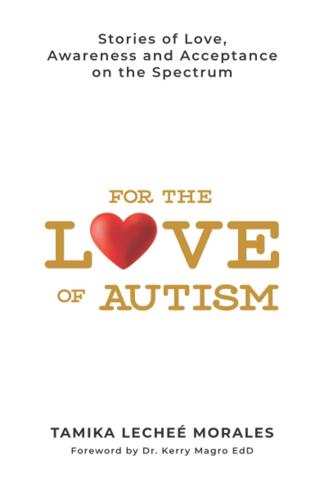
For the Love of Autism: Stories of Love, Awareness and Acceptance on the Spectrum
by
Tamika Lechee Morales
Published 23 Apr 2022
The doctor reviewed the rating scale scores and observation findings: “Brent has autism spectrum disorder,” she said. I looked at Vivian who said, “Are you okay?” I could tell from her expression that she was expecting me to break down and cry, but I didn’t. I couldn’t. I sighed with relief; I finally had the answer to my million-dollar question. As we were leaving the doctor’s office, Vivian asked, “How are you feeling? Are you just in a state of shock right now?” I couldn’t answer. I was feeling so many emotions that it was hard for me to put them into words. I wasn’t shocked, though. Deep down in my heart, I had already known that it was Autism Spectrum Disorder (ASD).
…
AHP is that village of superheroes. CONFESSIONS The late President Franklin D. Roosevelt and others have said, “Bravery is not the absence of fear, but the action in the face of fear.” We can’t help being fearful. It’s natural. A lot of my first fears that struck me instantly when I heard autism spectrum disorder (ASD) still exist today. I fear what I do not know, what I can’t control, and I fear what’s to come … the inevitable … death. My death, and what that means for him. I had hoped that in the same way that Legend has made me the best version of myself, Sebastian also would “level up.” That he would want to be his brother’s keeper.
…
My son, a bright and rambunctious little child went from being a verbal, communicative child to losing all language. I initially thought this was a phase. My husband and I brought our concerns to the pediatrician and were referred to University of Illinois Chicago (UIC) to have Mustafa evaluated. The evaluation concluded with a diagnosis of Autism Spectrum Disorder (ASD), with the words “severe” and “nonverbal” attached. We were devastated. I asked the psychologist, “What happens next?” She responded, “There will be therapy.” But no one helped us find it. It seemed as though they simply slapped on a diagnosis and moved on to the next patient. Never again did they contact us to direct us toward therapies.
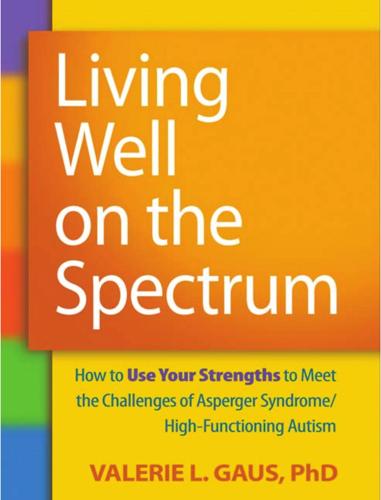
Living Well on the Spectrum
by
Valerie L. Gaus
Published 4 Feb 2011
See also Communication problems Perseverance community life and, 258 healthcare and, 336 as a strength, 57, 114 work life and, 211 Personalization, 53, 55. See also Cognitive distortions; Thinking differences Pervasive developmental disorders (PDDs), 5. See also Autism spectrum disorders Pervasive developmental disorders—not otherwise specified (PDD-NOS), 5. See also Autism spectrum disorders Pet ownership, 142 Pleasant activities, 142 Pleasure, capacity for, 113–114 Positive psychology, 2–3, 33 Problem identification and definition. See also Problem solving strategies community life and, 247, 262, 266 dating, sex, and marriage and, 297–300, 314, 318 educational life and, 218–219, 236, 240 friendships and, 273–274, 287, 292 healthcare and, 323–326, 325–326, 340, 344 home life and, 168–170, 187 overview, 122 work life and, 191, 192–195 worksheets regarding, 191–194, 361 Problem solving strategies.
…
You will be encouraged to define your own goals and to become more knowledgeable about your specific strengths and weaknesses and then use that information to adapt to, choose, and shape your surroundings. The Changing Face of Autism Never before has the topic of autism received as much attention as it does today. Discussions about “autism spectrum disorders” are widespread through every medium in public, scientific, and clinical forums. Once considered a rare disorder of which the average person would never be aware, autism is now a household word. Mention it at any gathering and someone will tell you of a personal experience with the syndrome.
…
At the time of this writing there is ongoing controversy about: which terms should be used to refer to autism what causes autism whether it is a disease that needs to be cured or a set of unique characteris- tics that should be embraced whether it is a single disorder or a collection of related syndromes who should pay for educational and clinical services meant to improve the lives of people affected by autism These are complex issues that do not have simple answers, and I am confident that these debates will continue for many years to come. One thing that can be stated without much argument, however, is that the number of people being diagnosed with autism spectrum disorders (ASDs) has risen dramatically over the past 20 years. In a December 2009 report, the Centers for Disease Control estimated that approximately 1% (1 in 110) of children in the United States have an ASD. While most research has focused on children, autism is a lifelong condition that does not disappear in adulthood.
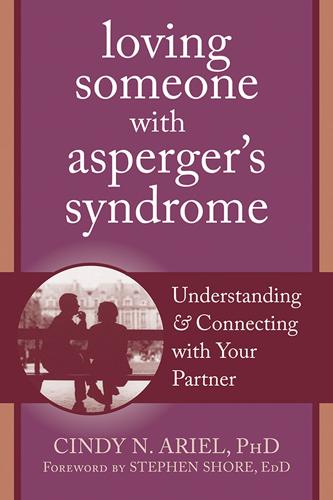
Loving Someone With Asperger's Syndrome: Understanding and Connecting With Your Partner
by
Cindy Ariel
Published 1 Mar 2012
When the DSM text was revised in 2000 (DSM-IV-TR), Asperger’s syndrome remained as a pervasive developmental disorder. With the release of the next edition of the DSM in 2013, the DSM-V, what we now understand as pervasive developmental disorders will fall under one large category of autism spectrum disorders. The diagnosis of Asperger’s syndrome will officially become autism spectrum disorder. For various reasons, including old stereotypes linking autism with schizophrenia and intellectual disability, and the broad ranges of behavior seen on the autism spectrum, some people disagree with combining these diagnoses. However, many professionals working closely with people who have AS, and many adults diagnosed with either AS or high-functioning autism, believe that the change will ultimately be a positive one.
…
In Genetics of Developmental Disabilities, edited by M. G. Butler and F. J. Meaney, 693–742. Boca Raton, FL: Taylor and Francis Group. Centers for Disease Control (CDC). 2011. “What We’ve Learned about Autism Spectrum Disorder.” www.cdc.gov/Features/CountingAutism/ (accessed July 28, 2011). DiCicco-Bloom, E., C. Lord, L. Zwaigenbaum, E. Courchesne, S. R. Dager, C. Schmitz, R. T. Schultz, J. Crawley, and L. J. Young. 2006. “The Developmental Neurobiology of Autism Spectrum Disorder.” Journal of Neuroscience 26 (26):6897–6906. Epstein, R. 2010. “How Science Can Help You Fall (and Stay) in Love.” Scientific American Mind, January/February. 26–33.
…
Even if you believe that your partner has AS but he has not been officially diagnosed, you can benefit from the information and tools in this book, beginning with a brief primer on Asperger’s syndrome itself. The Autism Spectrum Asperger’s syndrome makes up part of a larger category of conditions called autism spectrum disorders (ASDs), or autism spectrum conditions. These conditions are also currently known as pervasive developmental disorders (PDDs). “Pervasive” means that the challenges can affect many abilities, from social to academic learning, and physical mannerisms. Asperger’s can also include widespread difficulties in taking in, organizing, and understanding information.
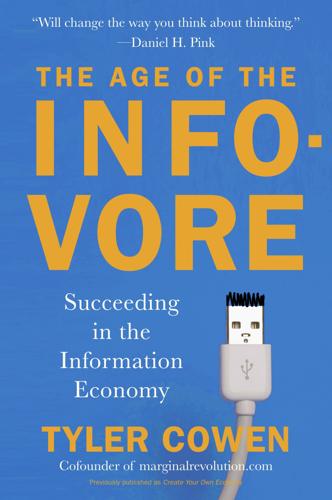
The Age of the Infovore: Succeeding in the Information Economy
by
Tyler Cowen
Published 25 May 2010
I start with a simple but little-known observation: There is good evidence that people along the autism spectrum are in some measurable ways more objective than non-autistics. It remains an open question how far this objectivity extends, but, from psychologist Rita R. Jordan, here is a typical description of the current scientific consensus: People with ASD [autism spectrum disorder] are therefore less likely to show egocentric, or other, bias. They are also protected from bias by the failure of their memories to adjust to existing context or to their general semantic knowledge. Thinking (including remembering) is unusually objective in people with ASDs…and memories remain both rigid and accurate (in relation to the time of their encoding).
…
Offit, Autism’s False Prophets: Bad Science, Risky Medicine, and the Search for a Cure (New York: Columbia University Press, 2008). On autism per se I recommend Fred R. Volkmar, Rhea Paul, Ami Klin, and Donald Cohen, eds., Handbook of Autism and Pervasive Developmental Disorders, vol. 1 (Hoboken, NJ: John Wiley & Sons, 2005), and also Dermot Bowler, Autism Spectrum Disorders: Psychological Theory and Research (West Sussex: John Wiley & Sons, 2007), noting that they are dense in presentation. A good place to follow research on autism is the Journal of Autism and Developmental Disorders; Francesca Happé’s 1994 book Autism: An Introduction to Psychological Theory (Cambridge, MA: Harvard University Press, 1998) is useful for framing many points.
…
The works of Temple Grandin have been very important and influential; see for instance her Thinking in Pictures, Expanded Edition: My Life with Autism (New York: Vintage, 2006). On the lesser susceptibility of autistics to some optical illusions and their superior skills in spotting some kinds of patterns, see Dermot M. Bowler, Autism Spectrum Disorders: Psychological Theory and Research (cited above), chapter 5. On visual acuity, see for instance Emma Ashwin, Chris Ashwin, Danielle Rhydderch, Jessica Howells, and Simon Baron-Cohen, “Eagle-Eyed Visual Acuity: An Experimental Investigation of Enhanced Perception in Autism,” Biological Psychiatry 65, no. 1 (January 2009), 17–21.
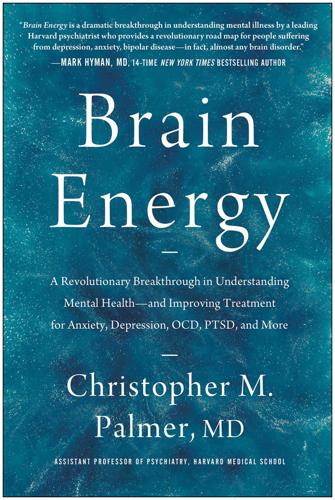
Brain Energy: A Revolutionary Breakthrough in Understanding Mental Health--And Improving Treatment for Anxiety, Depression, OCD, PTSD, and More
by
Christopher M. Palmer Md
Published 15 Nov 2022
Diagnostic overlap is easier to dismiss when we are talking about anxiety disorders, perhaps because anxiety is a mental state we all experience. So let’s look at autism spectrum disorder. Most people don’t think of autism as a purely “mental” illness, but more as a developmental or neurological disorder that starts early in life. Yet 70 percent of people with autism have at least one other mental disorder and almost 50 percent have two or more.17 It’s also interesting to note that embedded in the criteria of autism spectrum disorder are many of the symptoms of obsessive-compulsive disorder (OCD). And what happens to people with autism over longer terms?
…
It’s not just depression that causes so much confusion and debate. There’s tremendous heterogeneity in all the psychiatric diagnoses. Sometimes, the differences are stark and dramatic. Some people diagnosed with OCD are still able to work and function normally in life, while others are completely disabled by their symptoms. People diagnosed with autism-spectrum disorder can be wildly different from each other. There are high-functioning billionaire businesspeople with this diagnosis, while others live in group homes unable to care for themselves. So, are these singular diagnoses really the same disorders? Or are they all simply on a spectrum, with some people having severe forms of the illness while others have a mild form?
…
Are they at higher risk for developing additional mental disorders? Again, the answer is often yes. A prominent feature of autism is impairment in social skills, so it stands to reason that a diagnosis of social anxiety disorder could follow if interactions caused anxiety. In such a case, many would assume the autism spectrum disorder came first, and that the social anxiety was an understandable consequence of the autism. However, it’s now well documented that autism itself puts people at higher risk for developing every other type of mental disorder.18 This includes mood disorders, psychotic disorders, behavioral disorders, eating disorders, and substance use disorders.
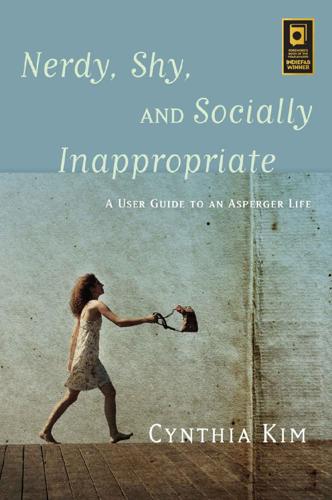
Nerdy, Shy, and Socially Inappropriate
by
Cynthia Kim
Published 20 Sep 2014
Index abandonment fears 151 acceptance 228–32 actions acting on a problem 168–73 initiating 165 monitoring 165–6 alexithymia 141–4 alienation 148 aloneness 55–6, 65–6, 151 anger 146–9 discriminating the target of 140–41 annoyance 147 anxiety 63, 83, 127, 199, 219–20 appropriateness of 222–3 social anxiety in ASD 220–25 see also panic aphasia 135–6 apologizing 62 ASD see autism spectrum disorders Asperger, Hans 21 Asperger’s Syndrome (AS) and acceptance 228–32 and the autistic spectrum see autism spectrum disorders (ASD) and the body see body, autistic and bullying 25–9 and clumsiness 117–18 and the collection of obscure information 7–86, 95–6 and communication see body language and non-verbal communication; language; social/communication skills and deficits and control 182–5 coping strategies see coping strategies/mechanisms developmental disability with 4–31, 209–10 diagnosis see diagnosis of Asperger’s Syndrome/ASD and emotion see emotions and empathy see empathy and executive function deficit see executive function (EF) gender differences with children 20, 3–21, 24 and giftedness 30–33 and intellect/intelligence 21, 2–31, 33, 51–50, 71 labeling see labeling and literal interpretation 27, 67–8 and meltdowns see meltdowns and play 4–23, 31 and relationships see relationships rigid and routine behaviours see perseveration; resistance to change; rigidity; routines; rules and sensation see sensory seeking; sensory sensitivities; stimming signs of 14–13, 18–17, 20, 21–3 and social skills see social/communication skills and deficits and special interests 96–101 and thinking see thinking and the wish for normality 225–6 attention 162, 164–5 Attwood, Tony 23–4 autistic spectrum disorders (ASD) and anxiety see anxiety; panic Asperger’s Syndrome see Asperger’s Syndrome (AS) the autistic brain 69, 74, 141, 146, 9–168, 171 see also executive function (EF) autistic special interests 96–101 and the body see body, autistic and bullying 9–25, 223 autistic spectrum disorders (ASD) cont.
…
Poignant and practical by turns, and always insightful, this book is a must-read for anyone trying to get a better understanding of autism.” —Lynne Soraya, blogger for Psychology Today and author of Living Independently on the Autism Spectrum of related interest Pretending to be Normal Living with Asperger’s Syndrome (Autism Spectrum Disorder) 2nd Edition Liane Holliday Willey ISBN 978 1 84905 755 4 eISBN 978 0 85700 987 6 Aspergirls Empowering Females with Asperger Syndrome Rudy Simone Foreword by Liane Holliday Willey ISBN 978 1 84905 826 1 eISBN 978 0 85700 289 1 Been There.
…
Years ago these boys got slapped with labels like “juvenile delinquent” and “behavior problem” while girls like me got labeled “painfully shy” or “awkward.” There was no such thing as an Asperger’s Syndrome diagnosis for children in the 1960s, 70s or 80s. Those who were diagnosed with autism tended to be nonverbal or late to acquire language. This is one of the main reasons that so many adults are now being diagnosed with an autism spectrum disorder (ASD) in their thirties, forties, fifties, or later. Women in particular seem to have escaped diagnosis, even as their brothers were diagnosed in childhood with ASD. Gender Differences Today, out of every ten children diagnosed with ASD, eight will be boys and two will be girls.
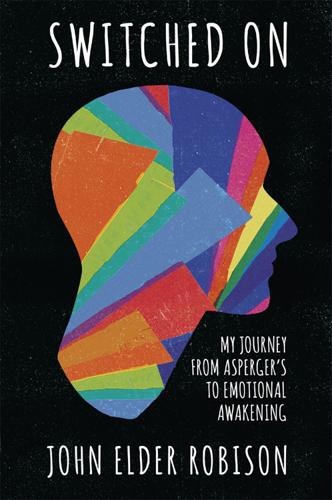
Switched On: My Journey From Asperger's to Emotional Awakening
by
John Elder Robison
Published 6 Apr 2016
One of the activities that I’m involved with now is the development of ICF Core Sets for Autism for the World Health Organization. Our group has published several papers, including: “Classification of Functioning and Impairment: The Development of ICF Core Sets for Autism Spectrum Disorder,” Autism Research 7, no. 1 (2014): 167–72. “Ability and Disability in Autism Spectrum Disorder: A Systematic Literature Review Employing the International Classification of Functioning, Disability and Health—Children and Youth Version,” Autism Research, in press; published online March 2015. A Google search will turn up videos and texts of my talks at IMFAR, the International Meeting for Autism Research.
…
This was a research study that I led, approved by the ethics committee at Harvard Medical School and Beth Israel Deaconess Medical Center. I was not John’s physician prescribing a treatment for autism. This study aimed to examine fundamental mechanisms of brain function in individuals with autism spectrum disorders and John was one of many study participants. As a study participant, John’s experience is unique and personal. There is immeasurable value in his singularly subjective account, but the results that John experienced and that he describes in this book are his personal ones, and while they are incontrovertibly true and astonishing, they are not necessarily the objective outcomes of the study.
…
It can be anxiety provoking when people expect you to be able to react in a way that you are not able to do. There’s certainly a lot that gets missed or misunderstood. It’s also very tiring to have to constantly try to figure out what is being said, and to be wrong too much of the time. I have great hope now that the researchers are finding some specific brain areas that are affected in autism spectrum disorders. As they are able to refine the stimulation techniques, they may be able to influence the brain in ways that can permanently improve communication. As I have just seen, this could be a life-changing experience for millions of people. I like to think that our conversation that night helped Kim to see her experience in a more positive light.
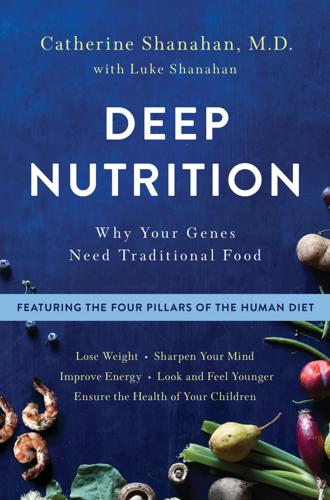
Deep Nutrition: Why Your Genes Need Traditional Food
by
Catherine Shanahan M. D.
Published 2 Jan 2017
Local brain connectivity across development in autism spectrum disorder: a cross-sectional investigation, Autism Res, January 2016, 9(1):43-54, doi 10.1002/aur.1494, epub June 2015. 386. Dr. Anthony Bailey of the University of British Columbia presents Neurobiology of autism spectrum disorders, a care-ID web presentation, from Care ID YouTube Channel, accessed online on April 11, 2106, at www.youtube.com/watch?v=0IudE9OrIOE; minute 27:00 shows novel columns in the brainstem. 387. Using human pluripotent stem cells to model autism spectrum disorders, Carol Marchetto, YouTube video presentation online from the Salk Institute YouTube Channel, accessed online on April 11, 2016 at www.youtube.com/watch?
…
Combined vaccines are like a sudden onslaught to the body’s immune system: parental concerns about vaccine ‘overload’ and ‘immune-vulnerability, Hilton S, Petticrew M, Hunt K, Vaccine. 2006;24(20):4321–7. 395. Maternal smoking and autism spectrum disorder: a meta-analysis, Rosen BN, Lee BK, Lee NL, Yang Y, Burstyn I. 396. In utero exposure to selective serotonin reuptake inhibitors and risk for autism spectrum disorder, Gidaya NB, Lee BK, Burstyn I, Yudell M, Mortensen EL, Newschaffer CJ J, Autism Dev Disord, October 2014, 44(10):2558-67. 397. Reduced prefrontal dopaminergic activity in valproic acid-treated mouse autism model, Hara Y, Takuma K, Takano E, Katashiba K, Taruta A, Higashino K, Hashimoto H, Ago Y, Matsuda T, Behav Brain Res, August 1, 2015, 289:39-47. 398.
…
Childhood autism and associated comorbidities, Brain and Development, June 2007, vol. 29, issue 5, pp. 257–272. 403. Mercury exposure and child development outcomes, Davidson PW, Myers GJ, Weiss B, Pediatrics, 2004, 113(4 suppl):1023–9. 404. Sleep spindles, mobile phones, lucid dreaming and sleep in Parkinson’s disease and autism spectrum disorders, Dijk DJ, J Sleep Res, December 2012, 21(6):601-2. 405. Risk of autism spectrum disorders in children born after assisted conception: a population-based follow-up study, Hvidtjørn D, Grove J, Schendel D, Schieve LA, Sværke C, Ernst E, Thorsen P, J Epidemiol Community Health, June 2011, 65(6):497-502. 406. Perinatal factors and the development of autism: a population study, Arch Gen Psychiatry, June 2004, 61(6):618-27. 407.
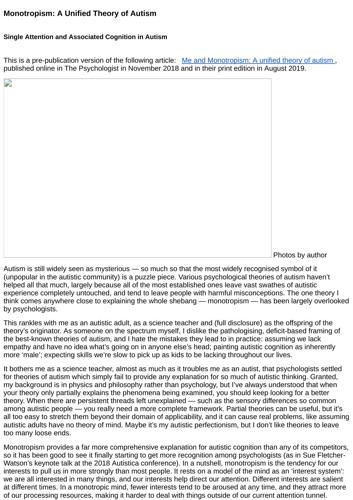
Monotropism: A Unified Theory of Autism
by
Unknown
But I’m not a psychologist, I’m just an autistic schoolteacher; perhaps you should take what I say with a grain of salt. References Beardon, L. (2017). Autism and Asperger Syndrome in Adults. Chown, N. (2016). Understanding and evaluating autism theory . Jessica Kingsley Publishers. Chown N., Beardon L. (2017) Autism Theory. In: Volkmar F. (eds) Encyclopedia of Autism Spectrum Disorders. Springer, New York, NY Fletcher-Watson, S., Adams, J., Brook, K., Charman, T., Crane, L., Cusack, J., … & Pellicano, E. (2018). Making the future together: Shaping autism research through meaningful participation. Autism , 1362361318786721. Lawson, W. (2011). The passionate mind: How individuals with autism learn .
…
On the ontological status of autism: the ‘double empathy problem’. Disability & Society , 27 (6), 883–887. Murray, D., Lesser, M., & Lawson, W. (2005). Attention, monotropism and the diagnostic criteria for autism. Autism , 9 (2), 139–156. Murray D. (2018) Monotropism – An Interest Based Account of Autism. In: Volkmar F. (eds) Encyclopedia of Autism Spectrum Disorders. Springer, New York, NY With thanks to Dinah Murray, Sonny Hallett, Richard Woods, Nick Chown, Niall Leighton, Damian Milton and Sue Fletcher-Watson for their help refining my thoughts.
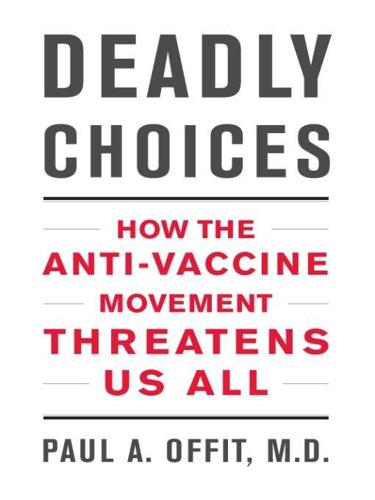
Deadly Choices: How the Anti-Vaccine Movement Threatens Us All
by
Paul A. Offit M.D.
Published 28 Dec 2010
Brandt, The Cigarette Century: The Rise, Fall, and Deadly Persistence of the Product That Defined America (New York: Basic Books, 2007). 168 Bernadine Healy on TV: CBS Evening News, May 12, 2008. Other quotes from Healy are taken from this program. 169 Genetic defects in autism: K. Wang, H. Zhang, D. Ma, et al., “Common Genetic Variants on 5p14.1 Associate with Autism Spectrum Disorders,” Nature 459 (2009): 528-533; R. Moessner, C. R. Marshall, J. S. Sutcliffe, et al., “Contribution of SHANK-3 Mutations to Autism Spectrum Disorder,” American Journal of Human Genetics 81 (2007): 1289-1297; K. Garber, “Autism’s Cause May Reside in Abnormalities of the Synapse,” Science 317 (2007): 190-191; L. A. Weiss, Y. Shen, J. M. Korn, et al., “Association Between Microdeletion and Microduplication at 16p11.2 and Autism,” New England Journal of Medicine 358 (2008): 667-675. 169 Structural differences: “A Dose of Controversy,” Dateline NBC, August 30, 2009. 169 Studies evaluating mercury toxicity in vaccines: Institute of Medicine, Immunization Safety Review: Vaccines and Autism (Washington, D.C.: National Academies Press, 2004). 10.
…
Their verdicts were unequivocal, leaving not a crack in the door for successful litigation in the future. One special master wrote, “Sadly, the petitioners in this litigation have been the victims of bad science, conducted to support litigation rather than to advance medical and scientific understanding of autism spectrum disorder. The evidence in support of petitioners’ causal theory is weak, contradictory, and unpersuasive. This is particularly apparent when considering the impressive body of epidemiologic evidence contradicting their theories.” Another likened the plaintiffs’ theory to a scene from Through the Looking Glass: “To conclude that Colten [Snyder]’s condition was the result of his MMR vaccine, an objective observer would have to emulate Lewis Carroll’s White Queen and be able to believe six impossible, or at least highly improbable, things before breakfast.”
…
Fringe doctors argue that autism is caused by vaccines and can be treated with hyperbaric oxygen, anti-fungal medications, and creams that rid the body of mercury. Good science gets shoved to the side, in part, because it’s hard to understand. For example, in 2009, researchers published a paper in Nature, one of the world’s premier scientific journals. They found that some children with autism spectrum disorder had a defect in genes that made proteins on the surface of brain cells called neural cell adhesion molecules. The specific proteins, cadherin 9 and cadherin 10, help brain cells communicate with each other. Unfortunately, conceptualizing how problems with cadherin 9 and 10 could cause autism is much more difficult than laying the blame on vaccines; even worse, it doesn’t offer immediate hope for prevention or cure.
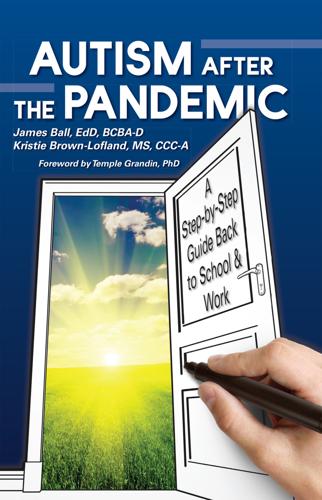
Autism After the Pandemic: A Step by Step Guide to Successfully Transition Back to School and Work
by
James Ball
and
Kristie Lofland
Published 17 Aug 2020
PARENT CHECKLIST Pick the appropriate schedule (pictures, written word, or a combination) Organize the schedule When the task is complete, remove or cross off the picture or word Start with new schedule after completion Please reference Recommended Resources 1, to 3 at the back of the book. EXAMPLES: (Images created by K. Brown Lofland) Social narratives are visual or written stories that describe social situations and the appropriate behaviors in these scenarios. They are used to help individuals with autism spectrum disorder (ASD) acquire and use appropriate social skills. For example, Olivia’s parents wrote a social narrative to use when running errands or leaving the house. Often, they would reread it (or part of it) before getting out of the car, when they anticipated Olivia’s “want meter” was running high.
…
KRISTIE BROWN LOFLAND is an autism/educational consultant currently in private practice. Ms. Brown Lofland has previously worked in clinical, public school, and university settings. Ms. Brown Lofland has an extensive background in speech pathology, audiology, and the education and communication of individuals with autism spectrum disorders. She has made many presentations nationally and internationally in the area of communication and autism. Lofland holds a bachelor’s degree in speech pathology from Indiana State University (1972), a master’s degree in audiology from Indiana State University (1979), and a director of special education certificate from Indiana University (2003).
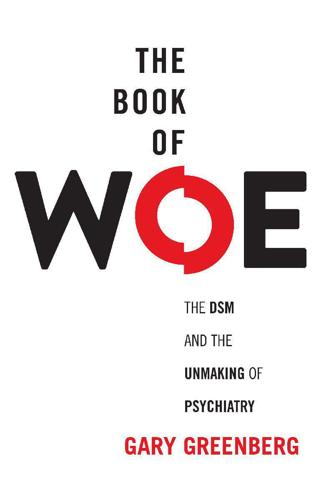
The Book of Woe: The DSM and the Unmaking of Psychiatry
by
Gary Greenberg
Published 1 May 2013
Metropolitan Area,” 53. 19. these results were “an underestimate”: Ibid., 81. 20. As of 2002, the CDC reported: All CDC figures can be found in Autism and Developmental Disabilities Monitoring Network, “Prevalence of Autism Spectrum Disorders,” available at http://www.cdc.gov/ncbddd/autism/documents/ADDM-2012-Community-Report.pdf. 21. “opening Pandora’s Box”: Wing, “Reflections on Opening Pandora’s Box.” 22. a prevalence rate in a city in Korea: Kim et al., “Prevalence of Autism Spectrum Disorders,” 907. 23. blitzed the media: “New Study Reveals Autism Prevalence in South Korea,” Autism Speaks, news release, May 9, 2011. 24. “the need for improved and wider autism screening”: “Top Ten Autism Research Achievements of 2011,” Autism Speaks, news release, December 20, 2011, http://www.autismspeaks.org/about-us/press-releases/top-10-autism-research-achievements-2011. 25.
…
After the conference, I suggested that if the DSM-5 turned out as he feared it might, he was likely to have his work cut out for him. “Yes,” he said, “but I do like a challenge4.” • • • Susan Swedo, chief of the Pediatrics and Developmental Neuroscience Branch at NIMH, started her talk on the second day by announcing she’d changed her title from the original “Neurodevelopmental Disorders, Including Autism Spectrum Disorder, Intellectual Developmental Disorder and Learning Disorder” to “Making National Headlines.” And it wasn’t because the new title was catchier. “I felt if I just addressed5 what is being said about our criteria versus what they actually say,” she explained, “maybe you’d come away with a better idea of what we are doing.”
…
It would have been interesting to hear the organization’s response when Swedo, after complaining about all the people who had blown up her e-mail in-box after Carey and Volkmar had unnecessarily struck “fear in their hearts” and dismissing Volkmar’s study as “comparing apples to Apple computers” (but without refuting his data), explained why she thought it was safe to ignore their objections. “Most of the individuals who belong to the AANE call themselves Aspies,” she said, “but that may need to be a new diagnosis introduced in future editions of the DSM, because Aspies don’t actually have Asperger’s Disorder, much less Autism Spectrum Disorders.” In the Q&A, I asked Swedo how she knew this. “By my interactions with them,” she said. “We have been petitioned by so-called Aspies and literally they are writing to us and saying I am an Aspie . . . and they describe what, if they had seen a psychiatrist, might have been called Obsessive-Compulsive Personality Disorder.”
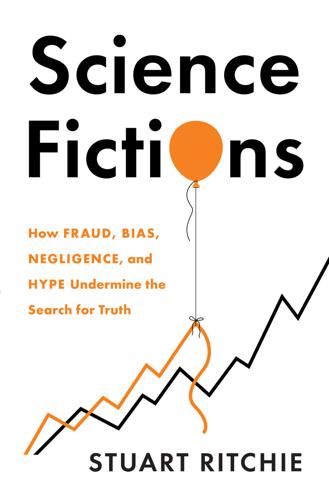
Science Fictions: How Fraud, Bias, Negligence, and Hype Undermine the Search for Truth
by
Stuart Ritchie
Published 20 Jul 2020
Wakefield et al., ‘Enterocolitis in Children with Developmental Disorders’, The American Journal of Gastroenterology 95, no. 9 (Sept. 2000): pp. 2285–95; https://doi.org/10.1111/j.1572-0241.2000.03248.x. There is actually some evidence that children with autism spectrum disorder have higher levels of some gastrointestinal symptoms (B. O. McElhanon et al., ‘Gastrointestinal Symptoms in Autism Spectrum Disorder: A Meta-Analysis’, Pediatrics 133, no. 5 (1 May 2014): pp. 872–83; https://doi.org/10.1542/peds.2013-3995), but there’s no evidence that this is caused by vaccines. 125. MMR: What They Didn’t Tell You, Brian Deer, dir.
…
The theory was that measles virus left in the system from the MMR vaccine was a cause of both gut- and brain-related symptoms (Wakefield called the condition, which he was describing for the first time, ‘autistic enterocolitis’).124 In interviews and a press conference after the paper’s publication, Wakefield repeatedly stated that the MMR should be split up into three individual vaccines, because the combination was ‘too much for the immune system of some children to handle’.125 By now, most people know that Wakefield’s findings have been discredited. Since 1998, there have been several large-scale, rigorous studies showing no relation between the MMR vaccine (or any other vaccine) and autism spectrum disorder.126 It’s also been shown that combination vaccines are just as safe as individual ones.127 What many aren’t aware of, though, is that the Wakefield paper, far from being an honest mistake or an understandable dead-end in a tentative line of research, was fraudulent right from the beginning.128 After the study’s publication and the attendant controversy, the investigative journalist Brian Deer began to dig into Wakefield’s data and, crucially, his motivations.
…
You might also wonder whether such a tiny number of donors could possibly be representative of people with autism in general.81 Nevertheless, the authors were happy to draw an impressive conclusion: ‘microbiota-based interventions such as probiotics [or] fecal microbiota transplantation … may offer a timely and tractable approach to addressing the lifelong challenges of [autism spectrum disorder].’82 They put out a press release discussing the ‘profound’ effects of the faecal transfer, claiming again that their research implied that probiotics might one day be used to treat the symptoms of autism.83 This was all the purest hype. Even setting aside both the study’s trifling sample size and its rather questionable assumptions about the equivalence of human and mouse behaviour, the experiment had at no point tested the power of probiotics or transplants to reduce any of the supposed rodent-autism symptoms – let alone the ‘equivalent’ in humans.
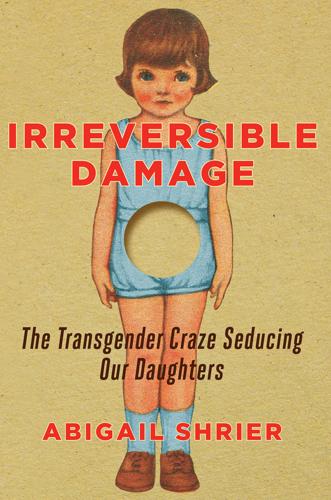
Irreversible Damage: The Transgender Craze Seducing Our Daughters
by
Abigail Shrier
Published 28 Jun 2020
There would appear to be a high rate of correlation between those with gender dysphoria and those who meet diagnostic criteria for Autism Spectrum Disorder (“ASD”). See, e.g., Doug VanderLaan et al., “Autism Spectrum Disorder Risk Factors and Autistic Traits in Gender Dysphoric Children,” Journal of Autism and Developmental Disorders 45, no. 6 (December 2014): 1742–50, https://www.researchgate.net/publication/269420151_Autism_Spectrum_Disorder_Risk_Factors_and_Autistic_Traits_in_Gender_Dysphoric_Children ; A. L. de Vries et al., “Autism Spectrum Disorders in Gender Dysphoric Children and Adolescents,” Journal of Autism and Developmental Disorders 40, no. 8 (August 2010): 930–36; Riiittakerttu Kaltiala-Heino et al., “Gender Dysphoria in Adolescence: Current Perspectives,” Adolescent Health, Medicine, and Therapeutics 9 (2018), 34, https://www.ncbi.nlm.nih.gov/pmc/articles/PMC5841333/ .
…
Many of the parents I spoke with told me their daughters had some version of “high-functioning autism”—meaning their daughters were highly intelligent, characterized by fixation and rigid thought, had terrible trouble deciphering social cues, struggled to recognize interpersonal physical boundaries, or had difficulty empathizing with others. In the course of researching this book, I learned two disturbing facts about autism and its treatment. Like gender dysphoria, the diagnosis of autism spectrum disorder has skyrocketed in the last decade. And many clinicians specializing in autism are actively encouraging gender exploration in their autism patients. The possibility that some clinicians working with adolescents who fixate might be supplying these kids with a fixation merits a book of its own.
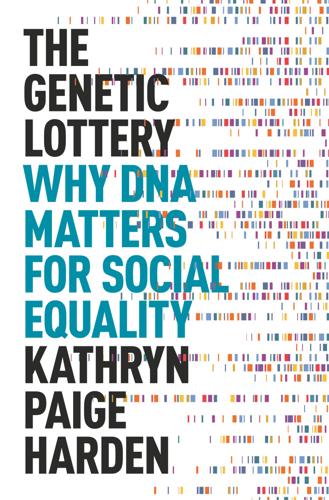
The Genetic Lottery: Why DNA Matters for Social Equality
by
Kathryn Paige Harden
Published 20 Sep 2021
Like a measure of a child’s speech impairments, intelligence tests don’t tell you that a person is valuable, but they do tell you about whether a person can do (some) things that are valued. Good Genes, Bad Genes, Tall Genes, Deaf Genes The distinction between inherently valuable and socially valued might be unfamiliar as applied to our understanding of intelligence test scores, but we can look to three other phenotypes where it is more typical: height, deafness, and autism spectrum disorders. In chapter 2, I told you about the towering NBA player Shawn Bradley, who inherited an extraordinarily large number of height-increasing genetic variants. Height is perhaps the simplest example of how genetic differences between people can be filtered through a particular cultural and economic system, resulting in differences in socioeconomic status.
…
Rather, through laws like the Americans with Disability Act, we have changed the patterns of human action, so that those who are on one end of the natural distribution of hearing ability can more fully participate, as equals, in economic and social life. We see this Rawlsian idea similarly at work in the “neurodiversity” movement, which centers on people with autism spectrum disorders (ASDs). “On the spectrum” has become part of the modern lexicon, a schoolyard taunt and an armchair explanation for odd behavior. The phrase has become so familiar that the metaphor underlying the word “spectrum” is often forgotten. But spectra are literally rainbows, the separation of light into components with different wavelengths that are perceived by the human eye as different colors, which shade one into the next.
…
But they might still identify as part of the broader autism community. In the past decade, high-functioning, on-the-spectrum people, and their relatives and supporters, have reshaped public discourse around autism under the banner of neurodiversity. Among other goals, neurodiversity advocates argue that the cognitive and behavioral features of autism spectrum disorders (and other syndromes like ADHD) are not necessarily bugs, but are rather potential features, of the human cognitive machinery. The neurodiverse might, in the right context, have potentially rare and valuable skills. But, even if they don’t have savant abilities in any area, they also make claims on society to express, to return to Elizabeth Anderson’s words, “the dignity they see in their lives and community.”
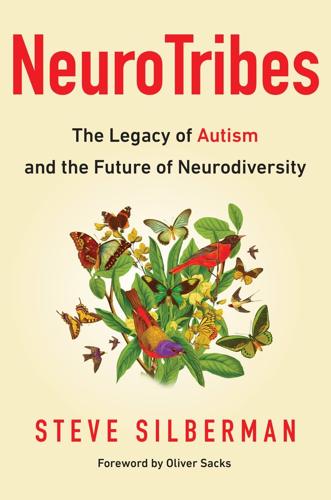
NeuroTribes: The Legacy of Autism and the Future of Neurodiversity
by
Steve Silberman
Published 24 Aug 2015
The previous morning, the boy received his eighteen-month shot of diphtheria-pertussis-tetanus (DPT) vaccine. Are the two events related? The doctor doesn’t know. Miles had a similarly terrifying episode after his first DPT, and another after his MMR, the routine childhood inoculation against measles, mumps, and rubella. A month later, a psychologist gives him a preliminary diagnosis of autism spectrum disorder based on his delays in acquiring language. To Seroussi, the dreaded word autism conjures up one thing: the image of “a profoundly disturbed child rocking in a corner.” The diagnosis is subsequently confirmed by a formal evaluation. It didn’t exactly come out of the blue. Miles had always been a more remote and solitary child than his sister, Laura.
…
—LORNA WING While autism was rapidly assimilating into mainstream awareness in the wake of Rain Man, a strategic series of revisions to the Diagnostic and Statistical Manual of Mental Disorders, prompted by Lorna Wing and her colleagues in London, were chipping away at Kanner’s monolithic edifice from the inside. It was only because of these revisions that children like Tyler Bell were able to get their initial diagnoses of PDD-NOS, one of several new flavors of autism spectrum disorder added to the manual in 1994, along with Asperger’s syndrome. This was, of course, precisely what Lorna had in mind when she undertook her campaign to recast the DSM criteria: to make it possible for children who would have been excluded from support services before to get them. By the end of the decade, however, the startling rise in diagnoses—and the alarms in the media that autism had become an epidemic—took even Lorna by surprise.
…
Support for this theory was emerging in a handful of studies undertaken in the wake of Wing and Gould’s survey in Camberwell. The resulting estimates varied widely, depending on the scope of the survey, but the overall trend was clear: the more recent the criteria employed, the higher the estimate turned out to be. “Autism spectrum disorders (i.e., autism and autistic-like conditions) might be as prevalent as 1 in 100 children,” Wing and Gillberg ventured. “Autism should no longer be conceptualized as an extremely rare disorder . . . The higher prevalence rate needs to be communicated to administrators, service providers and boards of research funds so that appropriate resources may be allocated.”

How to Be Human: An Autistic Man's Guide to Life
by
Jory Fleming
Published 19 Apr 2021
We are truly all wired slightly differently. Perhaps very differently. Two recent projects to produce neural imaging scans of children and adolescents who have been diagnosed with autism spectrum disorder show that their cortexes, the communication and processing hub, have more folds, called gyri, in specific regions of the brain than those of children and teens who are considered “neurotypical.” Those with autism spectrum disorder also have differences in the thickness and thinness of various parts of the cortex. In other words, their brains appear physically different. Which takes this book to its central place: let’s put aside our own assumptions and step out of high-resolution imaging and the pulsing noise of the MRI machine and meet Jory Fleming, a brain of one.
…
I’m more worried than anything else that the simpler moral arguments that are easier to understand will carry more weight and will end the discussion prematurely. I worry that emotionally driven arguments will have more appeal than other arguments. I think it’s really hard for neurotypical people to divorce decision making from emotions and social fabric. The codes F84.0 and 299.00 are both medical diagnostic codes for autism spectrum disorder. They are how medical professionals categorize and quantify autism as a diagnosis and a disability. But how does Jory perceive disability? What is his experience living with both physical and cognitive differences? And how do other people respond to him? JORY: In general, I feel like a lot of people are defeated by emotions or defeated by suffering.

Odd Girl Out: An Autistic Woman in a Neurotypical World
by
Laura James
Published 5 Apr 2017
In the new version, the DSM-5, the terms autistic disorder, Asperger’s disorder, childhood disintegrative disorder and Pervasive Developmental Disorder – Not Otherwise Specified (PDD-NOS) have been replaced by the collective term Autism Spectrum Disorder. This explains why my diagnosis of Asperger’s syndrome is also a diagnosis of the all-embracing Autism Spectrum Disorder (ASD) or Autistic Disorder. In the UK, it is the ICD-10 (International Classification of Diseases), rather than the DSM, that is the most commonly used diagnostic manual. It presents a number of possible autism profiles, such as childhood autism, atypical autism and Asperger’s syndrome.
…
Having been endlessly misdiagnosed with everything from generalized anxiety to (and this is my personal favourite) ‘bad luck’, I guess I had just given up trying to find an answer. That all changed when – completely by accident – I stumbled on the first of the three issues that affect my mind and body. The first of the unholy trinity of acronyms I now have after my name. EDS. POTS. ASD. (Ehlers-Danlos Syndrome, Postural Orthostatic Tachycardia and Autism Spectrum Disorder.) Ehlers-Danlos syndrome is a group of rare, inherited conditions that affect connective tissue. I have type III, which means I’m hypermobile, my joints dislocate easily, my skin is super-soft and easily damaged, and I have serious digestive issues. Postural Orthostatic Tachycardia, which is often associated with EDS, is an abnormal response within the autonomic nervous system, the symptoms of which include a high and persistent increase in heart rate when standing.
…
‘You’re obviously very low on the spectrum’ is something else I hear a lot. That the spectrum is linear couldn’t be further from the truth. To get a more accurate perspective I met Dr Judith Gould at the Lorna Wing Centre for Autism. Judith is a chartered consultant clinical psychologist with more than forty years’ experience. She specializes in autism spectrum disorders and learning disabilities. In the 1970s, with the late Dr Lorna Wing, Judith came up with the term autism spectrum. Judith believes the key point to understand is that autism is a spectrum not because it is linear but because any factor can be present at any point. She said: ‘[In our study] we saw the classic autistic aloof person with repetitive rituals and elaborate routines.
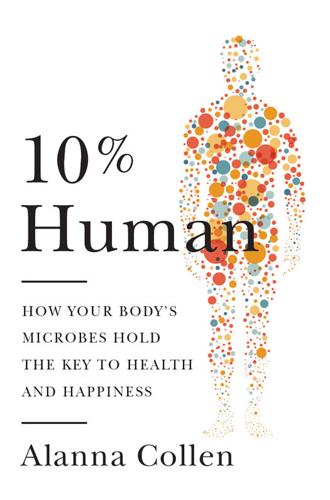
10% Human: How Your Body's Microbes Hold the Key to Health and Happiness
by
Alanna Collen
Published 4 May 2015
The rise of childhood type 1 diabetes in the 20th century. Diabetes 51: 3353–3361. 2. World Health Organisation (2014). Global Health Observatory Data – Overweight and Obesity. Available at: http://www.who.int/gho/ncd/risk_factors/overweight/en/. 3. Centers for Disease Control and Prevention (2014). Prevalence of Autism Spectrum Disorder Among Children Aged 8 Years – Autism and Developmental Disabilities Monitoring Network, 11 Sites, United States, 2010. MMWR 63 (No. SS-02): 1–21. 4. Bengmark, S. (2013). Gut microbiota, immune development and function. Pharmacological Research 69: 87–113. 5. von Mutius, E. et al. (1994) Prevalence of asthma and atopy in two areas of West and East Germany.
…
The American Naturalist 174: 424–433. 3. Herrera, C. et al. (2001). Maladie de Whipple: Tableau psychiatrique inaugural. Revue Médicale de Liège 56: 676–680. 4. Kanner, L. (1943). Autistic disturbances of affective contact. Nervous Child 2: 217–250. 5. Centers for Disease Control and Prevention (2014). Prevalence of Autism Spectrum Disorder Among Children Aged 8 Years – Autism and Developmental Disabilities Monitoring Network, 11 Sites, United States, 2010. MMWR 63 (No. SS-02): 1–21. 6. Bolte, E.R. (1998). Autism and Clostridium tetani. Medical Hypotheses 51: 133–144. 7. Sandler, R.H. et al. (2000). Short-term benefit from oral vancomycin treatment of regressive-onset autism.
…
The role of microbes and autoimmunity in the pathogenesis of neuropsychiatric illness. Current Opinion in Rheumatology 25: 488– 495. 22. MacFabe, D.F. et al. (2007). Neurobiological effects of intraventricular propionic acid in rats: Possible role of short chain fatty acids on the pathogenesis and characteristics of autism spectrum disorders. Behavioural Brain Research 176: 149–169. Chapter 4 1. Strachan, D.P. (1989). Hay fever, hygiene, and household size. British Medical Journal, 299: 1259–1260. 2. Rook, G.A.W. (2010). 99th Dahlem Conference on Infection, Inflammation and Chronic Inflammatory Disorders: Darwinian medicine and the ‘hygiene’ or ‘old friends’ hypothesis.
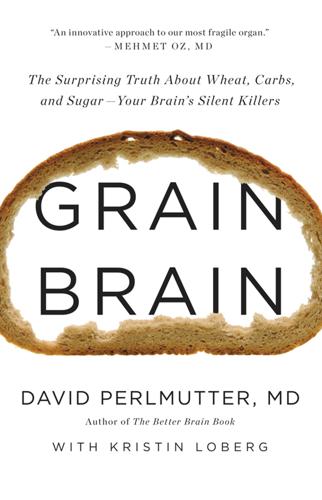
Grain Brain: The Surprising Truth About Wheat, Carbs, and Sugar--Your Brain's Silent Killers
by
David Perlmutter
and
Kristin Loberg
Published 17 Sep 2013
Although the jury is still out on the connections between gluten sensitivity and behavioral or psychological issues, we do know a few facts: People with celiac disease may be at increased risk for developmental delay, learning difficulties, tic disorders, and ADHD.6 Depression and anxiety are often severe in patients with gluten sensitivity.7, 8 This is primarily due to the cytokines that block production of critical brain neurotransmitters like serotonin, which is essential in regulating mood. With the elimination of gluten and often dairy, many patients have been freed from not just their mood disorders but other conditions caused by an overactive immune system, like allergies and arthritis. As many as 45 percent of people with autism spectrum disorders (ASD) have gastrointestinal problems.9 Although not all gastrointestinal symptoms in ASD result from celiac disease, data shows an increased prevalence of celiac in pediatric cases of autism, compared to the general pediatric population. The good news is that we can reverse many of the symptoms of neurological, psychological, and behavioral disorders just by going gluten-free and adding supplements like DHA and probiotics to our diet.
…
American Academy of Pediatrics, “Gastrointestinal Problems Common in Children with Autism,” ScienceDaily, http://www.sciencedaily.com/releases/2010/05/100502080234.htm (accessed March 20, 2013). See also: L. W. Wang, et al., “The Prevalence of Gastrointestinal Problems in Children Across the United States with Autism Spectrum Disorders from Families with Multiple Affected Members,” Journal of Developmental and Behavioral Pediatrics 32, no. 5 (June 2011): 351–60. 10. T. L. Lowe, et al., “Stimulant Medications Precipitate Tourette’s Syndrome,” JAMA 247, no. 12 (March 26, 1982): 1729–31. 11. M. A. Verkasalo, et al., “Undiagnosed Silent Coeliac Disease: A Risk for Underachievement?”
…
Amiri, et al., “Pregnancy-related Maternal Risk Factors of Attention-deficit Hyperactivity Disorder: A Case-control Study,” ISRN Pediatrics (2012) doi: 10.5402/2012/458064. 13. A. K. Akobeng, et al., “Effect of Breast Feeding on Risk of Coeliac Disease: A Systematic Review and Meta-analysis of Observational Studies,” Archives of Disease in Childhood 91, no. 1 (January 2006): 39–43. 14. S. J. Blumberg, et al., “Changes in Prevalence of Parent-reported Autism Spectrum Disorder in School-aged U.S. Children: 2007 to 2011–2012,” National Health Statistics Report No. 65 (March 20, 2013). Available at http://www.cdc.gov/nchs/data/nhsr/nhsr065.pdf. 15. S. J. Genuis, et al., “Celiac Disease Presenting as Autism,” Journal of Child Neurology 25, no. 1 (January 2013): 114–19. 16.
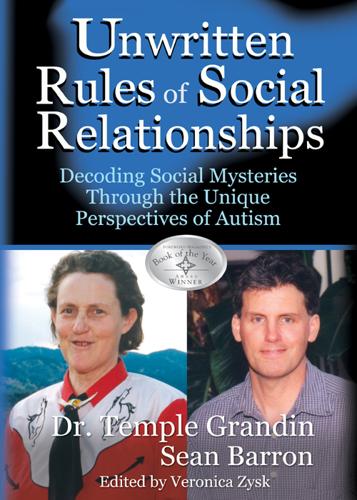
The Unwritten Rules of Social Relationships: Decoding Social Mysteries Through the Unique Perspectives of Autism
by
Temple Grandin
and
Sean Barron
Published 30 Sep 2012
No part of this book may be reproduced in any manner whatsoever without written permission of Future Horizons, Inc. except in the case of brief quotations embodied in reviews. ISBN 1-932565-06-X Ebook ISBN 978-1-935274-47-6 Dedication This book is dedicated to individuals with autism spectrum disorders who strive each day to understand themselves and the world around them, and to the parents, teachers and providers who help them do so. Temple Grandin I would like to dedicate this book to Ron, Judy and Megan Barron: my wonderful father, mother and sister. Sean Barron Contents Acknowledgements Behind the Scenes ACT ONE Two Perspectives on Social Thinking Scene 1.
…
Recently I heard “New Day,” a song by Patti LaBelle, on the radio and found the lyrics highly inspiring and personal: “It’s a new day, open my eyes and the path is clearer, New day, pushing ahead till my goal gets nearer, New day, spread my wings I’m doing things my way, It’s a new day.” ACT TWO Two Minds: Two Paths How the Autistic Way of Thinking Affects Social Understanding Rene Descartes’ infamous line, “I think, therefore, I am,” aptly describes the manner in which the person with autism spectrum disorders perceives his world. His mind is one of absolutes, of thinking patterns that are rigid and repetitive, where minute details become focal points of obsessive attention, and self-involvement takes precedence over exploration. How each person thinks, from a physiological, emotional and cognitive framework, impacts his ability to make sense of his experiences, to relate behavior and consequence, to function in the world.
…
Every little bit of information that’s interesting presses that Save button. This is an important concept for parents and teachers to grasp—that information is not automatically stored in the brains of kids with ASD. Figuring out what presses that Save button is the key. Despite the growing awareness of the characteristics of autism spectrum disorders, little is really known about the intricacies of the autism mind. Higher-functioning adults with ASDs are slowly becoming more vocal in explaining their personal perspectives; at issue is the extent to which the parents and teachers are willing to listen—really listen—without judgment or preconceived notions.

Heart of the Machine: Our Future in a World of Artificial Emotional Intelligence
by
Richard Yonck
Published 7 Mar 2017
They can focus on one social aspect of communication at a time.”3 The study reported that children with autism spectrum disorders had more eye contact and less gaze shifting while NAO was speaking to them, though not when they themselves were speaking. Though only a small study, there are indications that the socially assistive therapy was beneficial to many of the participants. A much more realistic robot, called Zeno, is made by Hanson Robotics and is being used in a number of projects and studies to improve social skills in children with autism spectrum disorder. Zeno stands about two feet tall and has the appearance of a small boy.
…
“What I did on my summer vacation,” Jason begins, in a natural and easy manner. “This summer I was fitted with a neural prosthe … prosthesis—I always have trouble with that word,” he says with a nervous smile. “It’s a thing that Dr. Warner and the other doctors put in my head. When I was little, the doctors said I had ASD. That’s autism spectrum disorder, meaning my brain didn’t do some things other people’s do. It’s different for different kids, but basically it makes it hard to deal with some of the stuff other people find easy, especially stuff like understanding people’s feelings.” Jason looks about the room, making eye contact with several of the students before continuing.
…
Many of these rely on identifying problems with social interaction and speech development, but since such markers are heavily weighted toward language, they aren’t very observable in the first two years of life. This may be one reason detection of autism doesn’t normally occur until between ages two and three. However, as mentioned before, by carefully monitoring eye gaze and motor movements, these robots are able to spot various biomarkers and timing issues that can identify autism spectrum disorders far earlier. As a result, a range of treatments and therapies could potentially be introduced much sooner. The promise of affective computing and socially assistive robotics goes well beyond addressing such severe learning disabilities. For example, in a 2013 North Carolina State University study, researchers used video cameras to study students who were being tutored in introductory programming to try to assess their individual levels of frustration with the subject matter.
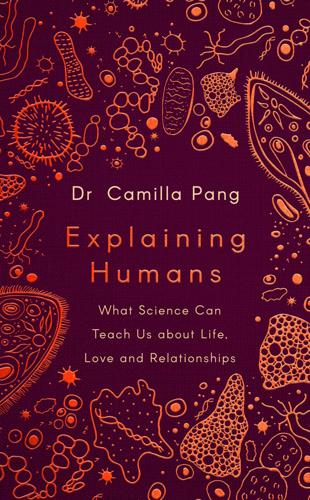
Explaining Humans: What Science Can Teach Us About Life, Love and Relationships
by
Camilla Pang
Published 12 Mar 2020
I’m someone who was reading Dr Seuss while revising for my A levels. Reading fiction actually makes me afraid. But what I lack in almost everything else, I make up for with the distinctiveness of how my brain works, and my overwhelming love for science. Let me explain. The reason I never felt normal is because I’m not. I have ASD (autism spectrum disorder), ADHD (attention deficit hyperactivity disorder) and GAD (generalized anxiety disorder). Together, these might combine to make life as a human impossible. It’s often felt that way. Having autism can be like playing a computer game without the console, cooking a meal without pans or utensils, or playing music without the notes.
…
actin (proteins) 33, 34 adaptor proteins 38, 39–40, 43, 46 ADHD (attention deficit hyperactivity disorder) x, xiv, 44 acceptance of 29, 119, 196, 197 boredom and xi, 85, 87, 163 brainwaves and 98–100 childhood and 87 decision making and 17, 101, 141, 185 diagnosis of 92, 101 fear and 77, 85, 86 goals and 131, 133, 139 gradient descent and 139, 141 harmony/amplitude and 92–3, 93, 98–106, 102, 105 information processing and xi, 13, 98–9 insomnia and 70 learning rate and 141 memory and 185–6 overthinking and 16, 102 panic induced by 77 patience and 131, 133, 139, 225 reading and 163–5 superpower 29 time perception and 13, 98, 131, 133, 139, 141 affinities (single interactions) 183 ageing, human 148–9 agent-based modelling (ABM) 210–14, 215, 216, 219 algorithms, computer decision making and xii, 1–24, 8, 15, 128–30, 134, 138–41, 143, 146, 156–60, 158, 187, 188–93, 189, 195, 199, 202, 203–204 fuzzy logic and 156–60 gradient descent algorithm 125, 138–41, 143, 191 human mind and 1, 4 limitations of 3 neural networks and 187, 188–93, 189, 195, 198, 202, 203 supervised learning and 4, 6, 23 unstructured, ability to be 2 unsupervised learning and 4, 5, 6, 10, 18, 21 see also machine learning alienation 98 alpha keratins 32 alpha waves 98 amino acids 31–2 amplitude 90–95, 96, 99, 100–104 anxiety ADHD and see ADHD ASD and see ASD Asperger’s syndrome and see Asperger’s syndrome attacks 14, 70–71, 73, 83, 142 colour and 70–71, 73, 102, 127 crowds and 14, 70, 114–15, 121 decision making and 12, 14, 16, 20, 51–2, 59, 61, 81, 83, 142 fear/light and 70–71, 72–4, 74, 76, 77, 78–9, 80, 81, 82–5 GAD (generalized anxiety disorder) x–xi, 74, 197 goals and 124, 134, 135, 137, 138, 142–3 harmony and 98–9, 102, 108 information processing and xi, 83 loud noises and 70, 87, 198 memory and 186, 204 night terrors 70 order and 48, 51–2, 59, 61 smell and 12, 14, 70, 102, 127, 160, 164–5, 199, 201, 204 as a strength 29, 82–4, 142–3 superpower 29 texture and 70 arguments 38, 154, 156–60, 162, 183 artificial intelligence (AI) 3, 156, 186, 187, 188, 189, 215 ASD (autism spectrum disorder) acceptance of 197 Asperger’s syndrome and xiii–xiv Bayes’ theorem and 155 crowds and 115 decision making and 6, 10, 12, 16 empathy and 145 explained x–xi fear and 70–71, 77, 80, 85, 86 memory and 194 order and 50, 51–2, 58 superpower 29 Asperger’s syndrome xiii–xiv autism and xiii–xiv Bayes’ theorem and 151–2 clubbing/music festivals and 153, 201 empathy and 145 fear/light and 71–2 meeting people and 151 memory and 194–5 politeness and 206 atom Brownian motion and 112, 114 chemical bonds and/atomic compounds 165, 166, 167–71, 172, 173, 174, 176, 177, 178, 180, 181, 184 crowds and 107, 111, 112, 114 light and 75 autism see ASD (autism spectrum disorder) avidity 183 backpropagation 191, 199 Bayes’ theorem 151–6, 159, 162, 206 bee colonies 36 beta waves 98 bias 153, 160, 162, 192, 196, 197, 202, 204 bioinformatics 209, 220 blood sugar levels 38, 65 bonds, chemical 165–84 bond length 173 covalent 168, 169, 170, 171, 173, 182, 183, 184 electromagnetic force 175–6 evolution of over time 180–83 four fundamental forces 174–80, 179 gravitational force 174–5 hydrophobic effect 171–3 ionic 169–71, 170, 173, 176, 180, 181, 184 strong (nuclear) force 176–7 tan(x) curve and 163–5, 164 valency and 173–4 weak (nuclear) force 177–80, 182 boredom xi, 41, 85, 87, 158, 163, 186, 192 box thinking 5–12, 8, 17, 19–20, 23, 24 brainwaves 98–100 Brown, Robert 112 Brownian motion 112–14, 113, 115 cancer xii, 4, 45–7, 85, 118, 149, 219, 220 carbon dioxide 168 cars braking 157 driverless 189, 190–91, 202 category failure 22–3 cell signalling 37, 38–42 cellular evolution 146, 147–50, 148, 151 stem cells 146, 147–8, 148, 149, 150 chaos 13–15, 17, 21, 29, 48, 60 chemical bonds see bonds, chemical childhood: ADHD and 87–8 box thinking and 8, 10 fear and 83, 109, 121 neurodiversity at school 25–8 time perception and 126–8 tree thinking and 10, 21 Civilization V (video game) 108 compound, atomic 167–71, 172, 180, 181 conditional probability 153 conflict resolution 157 connecting with others 163–84 avidity and 183 chemical bonds and 165–84, 170 four fundamental forces and 174–80, 179 fraying and decomposing connections 180–84 tan(x) curve and 163–5, 164 see also bonds, chemical consensus behaviours, understanding and modelling 110–18 covalent bonds 168, 169, 170, 171, 173, 182, 183, 184 crowds 12, 14, 26, 70, 107–21, 113, 201 anxiety and 14, 70, 114–15, 121 atom and 107, 111, 112, 114 Brownian motion and 112, 113, 115 consensus and 110–18 decision making and 108, 110, 111, 112 differences/diversity and 111, 116–17, 118 diversity and 117–18 dust particle movement and 107–108, 111, 112, 113, 116 ergodic theory and 115–20 full stop and 107–108 individuality and 115–21 Newton’s second law (force = mass × acceleration) and 114 stereotypes and 117 random walk 113 stochastic (randomly occurring) process and 115–16 data inputs 190 dating 144, 207, 221–2 apps 161, 193 decision making box thinking and 5–12, 8, 17, 19–20, 24 crowds and 108, 110, 111, 112 equilibrium and 66, 67, 68, 69 error, learning to embrace 21–4 fear and 71, 81 feedback loop and 199, 202, 203–204 fuzzy logic and 146, 156–60, 158 game theory and 215–18, 220 goals and 128–30, 134, 137, 138–41, 142, 143, 191 gradient descent algorithm and 138–41, 143, 191 homology and 220 how to decide 17–21 machine learning and xii, 1–24, 128–30, 134, 138–41, 143, 146, 156–60, 158, 187, 188–93, 189, 195, 199, 202, 203–204 memory and 187, 199, 203–204 network theory and 134, 138 neural networks and 187, 188–93, 189, 195, 198, 202, 203 probability and 146 proteins and 28, 36, 37, 38, 39, 42, 43, 46 tree, thinking like a and 5–7, 10–24, 15 deep learning 187, 188, 189–90 see also neural networks delta waves 98 denial 78, 83–4 depression 100–103 differences/diversity, understanding/ respecting 25–47, 226 cancer and 45–7, 118 chemical bonds and 165–6, 168, 169–71, 181–3 collaboration/success and 45–7 crowds and 111, 116–17, 118 empathy and 149 ergodicity and 118, 120 evolution and xii, 31, 45–7, 118, 120, 146, 147, 148, 148, 149 fuzzy logic and 157, 162 game theory and 219 harmony and 104–105 hierarchy and 36 homology and 221–2 human survival and 118, 120 order and 61 probability and 154, 155 proteins and 28–30, 31, 34, 36–8, 39, 42, 43, 45, 46, 47 see also neurodiversity diffusion 113 dipole 176 DNA 31–2, 148 driverless cars 189, 190–91, 202 dust particle movement 107–108, 111, 112, 113, 116 electromagnetic force 175–6 electrons 131, 167–8, 169, 171, 173, 178, 181, 182, 183 electron transfer 169, 176 Elements of Physical Chemistry, The 52 Elton John 48, 108 empathy xiii, 36, 60, 61, 62, 68, 106, 144–62, 206, 226 arguments and 154, 157–60, 162 ASD and 145 autism and 145 bias and 153, 160, 162 cellular evolution and 146, 147–50, 148, 151 difference, respecting and 149 difficulty of 145–6 evolution and 161–2 eye contact and 149 fuzzy logic and 146, 156–60, 158 individuality and 118–20 non-verbal indicators 149 probability/Bayes’ theorem and 146, 151–6, 159, 162, 206 proteins and 38, 39, 45, 46 relationships and 144–62 ENFJ personality, Myers–Briggs Type Indicator 39 ENFP personality, Myers–Briggs Type Indicator 39 ENTJ personality, Myers–Briggs Type Indicator 41 ENTP personality, Myers–Briggs Type Indicator 40–41 entropy 48–9, 54–6, 57–8, 90 equilibrium achieving 64–7 Bayes’ theorem and 155 feedback and 202 fuzzy logic and 156 game theory and/Nash equilibrium 215, 216, 217 harmonic motion and 89, 90, 90–91 interference and 94, 95, 96 perfection and 50 resonance 97 ergodic theory 115–20 error, learning to embrace 21–4 ESTJ personality, Myers–Briggs Type Indicator 39 ESTP personality, Myers–Briggs Type Indicator 41 evolutionary biology xii chemical bonds and 180–84 diversity/difference and xii, 31, 45–7, 118, 120, 146, 147, 148, 148, 149 empathy and 146, 147–50, 148, 151 fear and 83, 84 order and 69 proteins and 29, 31, 35, 46–7, 118, 146, 161–2 relationships and 161–2, 166, 180–84 exercise, physical 9, 63, 66, 81, 85, 185, 201, 226 expectations, realistic 57–9 extroversion 37 eye contact 77, 80, 83–4, 149 fear xii, 62, 70–86, 109, 114, 115, 121, 142, 172, 197, 198, 201, 208 ASD and 70–71 Asperger’s and 71–2 denial of 83–4 eye contact and 77, 80, 83–4, 149 FOMO (fear of missing out) 19, 127, 131, 137, 138 function of 71 inspiration, turning into 82–3 light and 72–86, 74 as a strength 82–4 transparency and 78, 81–2 feedback/feedback loops 187–205 backpropagation and 191, 199 biases and 192, 196, 197, 202 memory and 187, 188, 191–205 neural networks and 187, 188, 191–4, 195, 198, 202, 203 positive and negative 200–202 re-engineering human 187, 191–3, 194–205 see also memory Ferguson, Sir Alex 31 ‘fighting speech’ 158 fire alarms, fear of 71 fractals 11 full stop 107–108 fundamental forces, the four 174–80 fuzzy logic 146, 156–60, 158, 162 GAD (generalized anxiety disorder) x–xi, 74, 197 game theory xii, 157, 209, 215–19, 222 gamma waves 98 gene sequences 31 Gibbs free energy 55–6, 65 goals, achieving 122–43 anxiety, positive results of 142–3 childhood and 126–8 difficulty of 141–2 fear of missing out (FOMO) and 127, 131, 137, 138 gradient descent algorithm and 138–41, 143, 191 Heisenberg’s Uncertainty Principle and 125–6, 128, 131–2, 133, 143 learning rate and 141 momentum thinking and 129, 130–31, 130 network theory and 132–8, 136 observer effect and 131 perfect path and 141 position thinking and 129–30, 129, 131 quantum mechanics/spacetime and 122–5, 123, 128, 131, 136 present and future focus 125–32 topology and 134, 138 wave packets and 128–9 gradient descent algorithm 125, 138–41, 143, 191 gravitational force 174–5 haematopoiesis 147 harmony, finding 87–106 ADHD and 92, 93, 98–106, 102, 105 amplitude and 90–93, 94, 95, 96, 99, 100, 101–102 depression and 100–103 harmonic motion 88, 89–93, 90, 93, 96, 103 ‘in phase’, being 95, 97 interference, constructive and 94–7, 95 oscillation and 88–94, 102 pebble skimming and 87–8 resonance and 96–7 superposition and 94–5 synchronicity and 88, 97 wave theory and 88–9, 90–106, 90, 93, 95, 105 Hawking, Stephen 122, 127, 136 A Brief History of Time 67, 122–3, 134–5 healthy, obsession with being 63 Heisenberg, Werner 125–6, 128, 133, 143 hierarchy 36, 213 hierarchy of needs, Maslow’s 140 Hobbes, Thomas 108 Leviathan 218, 219 homeostasis 65–6 Homo economicus (economic/ self-interested man/person) 218 Homo reciprocans (reciprocating man/person who wants to cooperate with others in pursuit of mutual benefit) 218 homology 219–22 hydrogen bonding 171, 181 hydrophobic effect 171–3 imitation, pitfalls of 62–3 immune system 5, 34, 45, 147, 161 individuality, crowds and 115–21 INFJ personality, Myers–Briggs Type Indicator 42 ‘in phase’, being 67, 95, 97, 104, 224 insomnia 70 Instagram 21, 72, 99 interference, wave theory and 94–6, 95, 97, 103 INTJ personality, Myers–Briggs Type Indicator 42 introversion 30, 36, 37, 42, 171 ionic bonds 169–71, 170, 173, 176, 180, 184 ISTP personality, Myers–Briggs Type Indicator 39–40 keratin 32 kinase proteins 38, 39, 40–42, 43, 45, 46 k-means clustering 18, 20 learning rate 141 l’homme moyen (average man/person whose behaviour would represent the mean of the population as a whole) 108 light Asperger’s syndrome and 71–2 cones 122–5, 123, 127, 132, 135, 136, 136 fear and 70–86, 74 prism and 74–5, 76, 77, 78–82, 85, 91 refraction and 72–4, 75, 76, 77–82, 83, 85, 91 speed of 74–5, 76, 82, 123 transparency and 78–9, 81–2 waves 74–86, 74 loud noises, fear of 70, 87, 198 Lucretius 112 machine learning backpropagation 191, 199 basics of 3–5 clustering and 5, 10, 16, 18, 19, 20, 22 data inputs 190 decision making and xii, 1–24, 8, 15, 128–30, 134, 138–41, 143, 146, 156–60, 158, 187, 188–93, 189, 195, 198, 199, 202, 203–4 deep learning 187, 188, 189–90 feature selection 18–20 fuzzy logic 146, 156–60, 158, 162 games and 3, 190 goals and 138–41 gradient descent algorithm 138–41, 143, 191 k-means clustering 18, 20 memory and 185–205, 189 noisy data and 22 neural networks 187, 188–93, 189, 195, 198, 202, 203 supervised learning 4, 6, 23 unsupervised learning and 4, 5, 6, 10, 18, 21 Manchester United 31 Maslow, Abraham: hierarchy of needs 140 meltdowns xi, 12, 14, 23, 25, 61, 77, 115, 155 memory xii, 7, 11, 127, 226 ADHD and 185 feedback loops and 187, 188, 191–205 neural networks and 187, 188–93, 189, 195, 198, 202, 203 power/influence of in our lives 186–7 training 187, 194–205 mistakes, learning from 185–205 backpropagation and 191, 199 biases and 192, 196, 197, 202 feedback/feedback loops and 187, 188, 191–205 memory and 185–7, 188, 191, 192–3, 194–205 neural networks and 187, 188–93, 189, 195, 198, 202, 203 mitosis (division) 148–9 momentum thinking 129, 130–31, 130 morning routine 14, 16 motion Brownian 112–14, 113, 115 harmonic 88, 89–93, 90, 93 Myers–Briggs Type Indicator 37, 39–42 ENFJ personality 39 ENFP personality 39 ENTJ personality 41 ENTP personality 40–41 ESTJ personality 39 ESTP personality 41 INTJ personality 42 ISTP personality 39–40 myosin 33–4 Nash equilibrium 215–16, 217 Nash, John 215 nervous tics x, 25 network theory 125, 132–8, 136, 143 Neumann, John von 215 neurodiversity xi, 85, 208–209 Newton’s second law (force = mass × acceleration) 114 night terrors 70 noble gases 167, 171 noise-cancelling headphones 71, 95–6 noisy data 22 non-verbal indicators 149 nuclear proteins 38, 41–2, 43 neural networks 187, 188–93, 189, 195, 198, 202, 203 obsessive compulsive disorder (OCD) box thinking and 8, 8 dating and 197 fear/light and 74 order and 51 observer effect 114, 131 orange, fear of colour 70–71 order and disorder 48–69 anxiety and 48, 51, 59, 61 ASD and 50, 51–2, 58 competing visions of 60–64 disordered orderly person 50–54 distribution of energy in layers of order 58 entropy (increasing disorder) 48–9, 54–6, 57–8 equilibrium and 64–7 order and disorder – cont’d.
…
actin (proteins) 33, 34 adaptor proteins 38, 39–40, 43, 46 ADHD (attention deficit hyperactivity disorder) x, xiv, 44 acceptance of 29, 119, 196, 197 boredom and xi, 85, 87, 163 brainwaves and 98–100 childhood and 87 decision making and 17, 101, 141, 185 diagnosis of 92, 101 fear and 77, 85, 86 goals and 131, 133, 139 gradient descent and 139, 141 harmony/amplitude and 92–3, 93, 98–106, 102, 105 information processing and xi, 13, 98–9 insomnia and 70 learning rate and 141 memory and 185–6 overthinking and 16, 102 panic induced by 77 patience and 131, 133, 139, 225 reading and 163–5 superpower 29 time perception and 13, 98, 131, 133, 139, 141 affinities (single interactions) 183 ageing, human 148–9 agent-based modelling (ABM) 210–14, 215, 216, 219 algorithms, computer decision making and xii, 1–24, 8, 15, 128–30, 134, 138–41, 143, 146, 156–60, 158, 187, 188–93, 189, 195, 199, 202, 203–204 fuzzy logic and 156–60 gradient descent algorithm 125, 138–41, 143, 191 human mind and 1, 4 limitations of 3 neural networks and 187, 188–93, 189, 195, 198, 202, 203 supervised learning and 4, 6, 23 unstructured, ability to be 2 unsupervised learning and 4, 5, 6, 10, 18, 21 see also machine learning alienation 98 alpha keratins 32 alpha waves 98 amino acids 31–2 amplitude 90–95, 96, 99, 100–104 anxiety ADHD and see ADHD ASD and see ASD Asperger’s syndrome and see Asperger’s syndrome attacks 14, 70–71, 73, 83, 142 colour and 70–71, 73, 102, 127 crowds and 14, 70, 114–15, 121 decision making and 12, 14, 16, 20, 51–2, 59, 61, 81, 83, 142 fear/light and 70–71, 72–4, 74, 76, 77, 78–9, 80, 81, 82–5 GAD (generalized anxiety disorder) x–xi, 74, 197 goals and 124, 134, 135, 137, 138, 142–3 harmony and 98–9, 102, 108 information processing and xi, 83 loud noises and 70, 87, 198 memory and 186, 204 night terrors 70 order and 48, 51–2, 59, 61 smell and 12, 14, 70, 102, 127, 160, 164–5, 199, 201, 204 as a strength 29, 82–4, 142–3 superpower 29 texture and 70 arguments 38, 154, 156–60, 162, 183 artificial intelligence (AI) 3, 156, 186, 187, 188, 189, 215 ASD (autism spectrum disorder) acceptance of 197 Asperger’s syndrome and xiii–xiv Bayes’ theorem and 155 crowds and 115 decision making and 6, 10, 12, 16 empathy and 145 explained x–xi fear and 70–71, 77, 80, 85, 86 memory and 194 order and 50, 51–2, 58 superpower 29 Asperger’s syndrome xiii–xiv autism and xiii–xiv Bayes’ theorem and 151–2 clubbing/music festivals and 153, 201 empathy and 145 fear/light and 71–2 meeting people and 151 memory and 194–5 politeness and 206 atom Brownian motion and 112, 114 chemical bonds and/atomic compounds 165, 166, 167–71, 172, 173, 174, 176, 177, 178, 180, 181, 184 crowds and 107, 111, 112, 114 light and 75 autism see ASD (autism spectrum disorder) avidity 183 backpropagation 191, 199 Bayes’ theorem 151–6, 159, 162, 206 bee colonies 36 beta waves 98 bias 153, 160, 162, 192, 196, 197, 202, 204 bioinformatics 209, 220 blood sugar levels 38, 65 bonds, chemical 165–84 bond length 173 covalent 168, 169, 170, 171, 173, 182, 183, 184 electromagnetic force 175–6 evolution of over time 180–83 four fundamental forces 174–80, 179 gravitational force 174–5 hydrophobic effect 171–3 ionic 169–71, 170, 173, 176, 180, 181, 184 strong (nuclear) force 176–7 tan(x) curve and 163–5, 164 valency and 173–4 weak (nuclear) force 177–80, 182 boredom xi, 41, 85, 87, 158, 163, 186, 192 box thinking 5–12, 8, 17, 19–20, 23, 24 brainwaves 98–100 Brown, Robert 112 Brownian motion 112–14, 113, 115 cancer xii, 4, 45–7, 85, 118, 149, 219, 220 carbon dioxide 168 cars braking 157 driverless 189, 190–91, 202 category failure 22–3 cell signalling 37, 38–42 cellular evolution 146, 147–50, 148, 151 stem cells 146, 147–8, 148, 149, 150 chaos 13–15, 17, 21, 29, 48, 60 chemical bonds see bonds, chemical childhood: ADHD and 87–8 box thinking and 8, 10 fear and 83, 109, 121 neurodiversity at school 25–8 time perception and 126–8 tree thinking and 10, 21 Civilization V (video game) 108 compound, atomic 167–71, 172, 180, 181 conditional probability 153 conflict resolution 157 connecting with others 163–84 avidity and 183 chemical bonds and 165–84, 170 four fundamental forces and 174–80, 179 fraying and decomposing connections 180–84 tan(x) curve and 163–5, 164 see also bonds, chemical consensus behaviours, understanding and modelling 110–18 covalent bonds 168, 169, 170, 171, 173, 182, 183, 184 crowds 12, 14, 26, 70, 107–21, 113, 201 anxiety and 14, 70, 114–15, 121 atom and 107, 111, 112, 114 Brownian motion and 112, 113, 115 consensus and 110–18 decision making and 108, 110, 111, 112 differences/diversity and 111, 116–17, 118 diversity and 117–18 dust particle movement and 107–108, 111, 112, 113, 116 ergodic theory and 115–20 full stop and 107–108 individuality and 115–21 Newton’s second law (force = mass × acceleration) and 114 stereotypes and 117 random walk 113 stochastic (randomly occurring) process and 115–16 data inputs 190 dating 144, 207, 221–2 apps 161, 193 decision making box thinking and 5–12, 8, 17, 19–20, 24 crowds and 108, 110, 111, 112 equilibrium and 66, 67, 68, 69 error, learning to embrace 21–4 fear and 71, 81 feedback loop and 199, 202, 203–204 fuzzy logic and 146, 156–60, 158 game theory and 215–18, 220 goals and 128–30, 134, 137, 138–41, 142, 143, 191 gradient descent algorithm and 138–41, 143, 191 homology and 220 how to decide 17–21 machine learning and xii, 1–24, 128–30, 134, 138–41, 143, 146, 156–60, 158, 187, 188–93, 189, 195, 199, 202, 203–204 memory and 187, 199, 203–204 network theory and 134, 138 neural networks and 187, 188–93, 189, 195, 198, 202, 203 probability and 146 proteins and 28, 36, 37, 38, 39, 42, 43, 46 tree, thinking like a and 5–7, 10–24, 15 deep learning 187, 188, 189–90 see also neural networks delta waves 98 denial 78, 83–4 depression 100–103 differences/diversity, understanding/ respecting 25–47, 226 cancer and 45–7, 118 chemical bonds and 165–6, 168, 169–71, 181–3 collaboration/success and 45–7 crowds and 111, 116–17, 118 empathy and 149 ergodicity and 118, 120 evolution and xii, 31, 45–7, 118, 120, 146, 147, 148, 148, 149 fuzzy logic and 157, 162 game theory and 219 harmony and 104–105 hierarchy and 36 homology and 221–2 human survival and 118, 120 order and 61 probability and 154, 155 proteins and 28–30, 31, 34, 36–8, 39, 42, 43, 45, 46, 47 see also neurodiversity diffusion 113 dipole 176 DNA 31–2, 148 driverless cars 189, 190–91, 202 dust particle movement 107–108, 111, 112, 113, 116 electromagnetic force 175–6 electrons 131, 167–8, 169, 171, 173, 178, 181, 182, 183 electron transfer 169, 176 Elements of Physical Chemistry, The 52 Elton John 48, 108 empathy xiii, 36, 60, 61, 62, 68, 106, 144–62, 206, 226 arguments and 154, 157–60, 162 ASD and 145 autism and 145 bias and 153, 160, 162 cellular evolution and 146, 147–50, 148, 151 difference, respecting and 149 difficulty of 145–6 evolution and 161–2 eye contact and 149 fuzzy logic and 146, 156–60, 158 individuality and 118–20 non-verbal indicators 149 probability/Bayes’ theorem and 146, 151–6, 159, 162, 206 proteins and 38, 39, 45, 46 relationships and 144–62 ENFJ personality, Myers–Briggs Type Indicator 39 ENFP personality, Myers–Briggs Type Indicator 39 ENTJ personality, Myers–Briggs Type Indicator 41 ENTP personality, Myers–Briggs Type Indicator 40–41 entropy 48–9, 54–6, 57–8, 90 equilibrium achieving 64–7 Bayes’ theorem and 155 feedback and 202 fuzzy logic and 156 game theory and/Nash equilibrium 215, 216, 217 harmonic motion and 89, 90, 90–91 interference and 94, 95, 96 perfection and 50 resonance 97 ergodic theory 115–20 error, learning to embrace 21–4 ESTJ personality, Myers–Briggs Type Indicator 39 ESTP personality, Myers–Briggs Type Indicator 41 evolutionary biology xii chemical bonds and 180–84 diversity/difference and xii, 31, 45–7, 118, 120, 146, 147, 148, 148, 149 empathy and 146, 147–50, 148, 151 fear and 83, 84 order and 69 proteins and 29, 31, 35, 46–7, 118, 146, 161–2 relationships and 161–2, 166, 180–84 exercise, physical 9, 63, 66, 81, 85, 185, 201, 226 expectations, realistic 57–9 extroversion 37 eye contact 77, 80, 83–4, 149 fear xii, 62, 70–86, 109, 114, 115, 121, 142, 172, 197, 198, 201, 208 ASD and 70–71 Asperger’s and 71–2 denial of 83–4 eye contact and 77, 80, 83–4, 149 FOMO (fear of missing out) 19, 127, 131, 137, 138 function of 71 inspiration, turning into 82–3 light and 72–86, 74 as a strength 82–4 transparency and 78, 81–2 feedback/feedback loops 187–205 backpropagation and 191, 199 biases and 192, 196, 197, 202 memory and 187, 188, 191–205 neural networks and 187, 188, 191–4, 195, 198, 202, 203 positive and negative 200–202 re-engineering human 187, 191–3, 194–205 see also memory Ferguson, Sir Alex 31 ‘fighting speech’ 158 fire alarms, fear of 71 fractals 11 full stop 107–108 fundamental forces, the four 174–80 fuzzy logic 146, 156–60, 158, 162 GAD (generalized anxiety disorder) x–xi, 74, 197 game theory xii, 157, 209, 215–19, 222 gamma waves 98 gene sequences 31 Gibbs free energy 55–6, 65 goals, achieving 122–43 anxiety, positive results of 142–3 childhood and 126–8 difficulty of 141–2 fear of missing out (FOMO) and 127, 131, 137, 138 gradient descent algorithm and 138–41, 143, 191 Heisenberg’s Uncertainty Principle and 125–6, 128, 131–2, 133, 143 learning rate and 141 momentum thinking and 129, 130–31, 130 network theory and 132–8, 136 observer effect and 131 perfect path and 141 position thinking and 129–30, 129, 131 quantum mechanics/spacetime and 122–5, 123, 128, 131, 136 present and future focus 125–32 topology and 134, 138 wave packets and 128–9 gradient descent algorithm 125, 138–41, 143, 191 gravitational force 174–5 haematopoiesis 147 harmony, finding 87–106 ADHD and 92, 93, 98–106, 102, 105 amplitude and 90–93, 94, 95, 96, 99, 100, 101–102 depression and 100–103 harmonic motion 88, 89–93, 90, 93, 96, 103 ‘in phase’, being 95, 97 interference, constructive and 94–7, 95 oscillation and 88–94, 102 pebble skimming and 87–8 resonance and 96–7 superposition and 94–5 synchronicity and 88, 97 wave theory and 88–9, 90–106, 90, 93, 95, 105 Hawking, Stephen 122, 127, 136 A Brief History of Time 67, 122–3, 134–5 healthy, obsession with being 63 Heisenberg, Werner 125–6, 128, 133, 143 hierarchy 36, 213 hierarchy of needs, Maslow’s 140 Hobbes, Thomas 108 Leviathan 218, 219 homeostasis 65–6 Homo economicus (economic/ self-interested man/person) 218 Homo reciprocans (reciprocating man/person who wants to cooperate with others in pursuit of mutual benefit) 218 homology 219–22 hydrogen bonding 171, 181 hydrophobic effect 171–3 imitation, pitfalls of 62–3 immune system 5, 34, 45, 147, 161 individuality, crowds and 115–21 INFJ personality, Myers–Briggs Type Indicator 42 ‘in phase’, being 67, 95, 97, 104, 224 insomnia 70 Instagram 21, 72, 99 interference, wave theory and 94–6, 95, 97, 103 INTJ personality, Myers–Briggs Type Indicator 42 introversion 30, 36, 37, 42, 171 ionic bonds 169–71, 170, 173, 176, 180, 184 ISTP personality, Myers–Briggs Type Indicator 39–40 keratin 32 kinase proteins 38, 39, 40–42, 43, 45, 46 k-means clustering 18, 20 learning rate 141 l’homme moyen (average man/person whose behaviour would represent the mean of the population as a whole) 108 light Asperger’s syndrome and 71–2 cones 122–5, 123, 127, 132, 135, 136, 136 fear and 70–86, 74 prism and 74–5, 76, 77, 78–82, 85, 91 refraction and 72–4, 75, 76, 77–82, 83, 85, 91 speed of 74–5, 76, 82, 123 transparency and 78–9, 81–2 waves 74–86, 74 loud noises, fear of 70, 87, 198 Lucretius 112 machine learning backpropagation 191, 199 basics of 3–5 clustering and 5, 10, 16, 18, 19, 20, 22 data inputs 190 decision making and xii, 1–24, 8, 15, 128–30, 134, 138–41, 143, 146, 156–60, 158, 187, 188–93, 189, 195, 198, 199, 202, 203–4 deep learning 187, 188, 189–90 feature selection 18–20 fuzzy logic 146, 156–60, 158, 162 games and 3, 190 goals and 138–41 gradient descent algorithm 138–41, 143, 191 k-means clustering 18, 20 memory and 185–205, 189 noisy data and 22 neural networks 187, 188–93, 189, 195, 198, 202, 203 supervised learning 4, 6, 23 unsupervised learning and 4, 5, 6, 10, 18, 21 Manchester United 31 Maslow, Abraham: hierarchy of needs 140 meltdowns xi, 12, 14, 23, 25, 61, 77, 115, 155 memory xii, 7, 11, 127, 226 ADHD and 185 feedback loops and 187, 188, 191–205 neural networks and 187, 188–93, 189, 195, 198, 202, 203 power/influence of in our lives 186–7 training 187, 194–205 mistakes, learning from 185–205 backpropagation and 191, 199 biases and 192, 196, 197, 202 feedback/feedback loops and 187, 188, 191–205 memory and 185–7, 188, 191, 192–3, 194–205 neural networks and 187, 188–93, 189, 195, 198, 202, 203 mitosis (division) 148–9 momentum thinking 129, 130–31, 130 morning routine 14, 16 motion Brownian 112–14, 113, 115 harmonic 88, 89–93, 90, 93 Myers–Briggs Type Indicator 37, 39–42 ENFJ personality 39 ENFP personality 39 ENTJ personality 41 ENTP personality 40–41 ESTJ personality 39 ESTP personality 41 INTJ personality 42 ISTP personality 39–40 myosin 33–4 Nash equilibrium 215–16, 217 Nash, John 215 nervous tics x, 25 network theory 125, 132–8, 136, 143 Neumann, John von 215 neurodiversity xi, 85, 208–209 Newton’s second law (force = mass × acceleration) 114 night terrors 70 noble gases 167, 171 noise-cancelling headphones 71, 95–6 noisy data 22 non-verbal indicators 149 nuclear proteins 38, 41–2, 43 neural networks 187, 188–93, 189, 195, 198, 202, 203 obsessive compulsive disorder (OCD) box thinking and 8, 8 dating and 197 fear/light and 74 order and 51 observer effect 114, 131 orange, fear of colour 70–71 order and disorder 48–69 anxiety and 48, 51, 59, 61 ASD and 50, 51–2, 58 competing visions of 60–64 disordered orderly person 50–54 distribution of energy in layers of order 58 entropy (increasing disorder) 48–9, 54–6, 57–8 equilibrium and 64–7 order and disorder – cont’d.
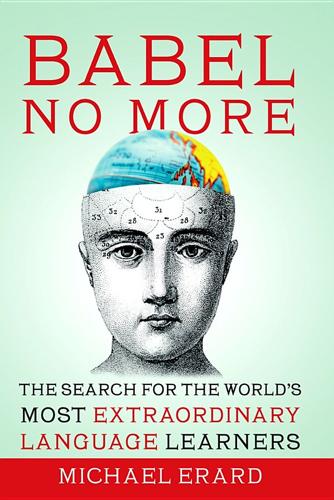
Babel No More: The Search for the World's Most Extraordinary Language Learners
by
Michael Erard
Published 10 Jan 2012
You’ve also encountered the concept of a neural tribe if you’ve heard of neurodiversity, a term coined by Judy Singer, an Australian disability activist, and first used in print by Harvey Flume, an American writer. Early on, it referred mainly to people living with autism spectrum disorders. Later it became a rallying cry for groups of people living with autism spectrum disorders who are building identities and even community around neuroatypicality. As a concept, the scope of “neurodiversity” has expanded. In a 2010 book, Neurodiversity, Thomas Armstrong describes people with autism, ADHD, dyslexia, mood disorders, intellectual disabilities, and schizophrenia as “neurodiverse.”
…
It might also explain why mathematicians, physical scientists, computer scientists, and engineers score higher than doctors, veterinarians, and biologists. Baron-Cohen has also found that autism occurs more frequently in the offspring of physics, mathematics, and engineering students than it does of those of literature students. Baron-Cohen had also done some relevant work on the obsessional interests of children with autism, autism spectrum disorders, and Asperger’s syndrome. He hypothesized that systemizers would find mechanical systems more interesting than social systems. Or as he put it, they would be more readily interested in “folk physics”—a commonsense knowledge about how objects and systems behave in the world—than in “folk psychology.”
…
Abadzi, Helen, 132–37, 132, 139, 141–43, 169, 175, 212, 227, 236, 254, 256, 261–63 Abadzi, Theodore, 136 Académie Française, 208 Accademia Poliglotta, 137–38, 267 accents, 5, 8, 11, 33, 84, 238 American, 261 British, 21, 204 Colombian altiplano, 19–20 native, 123 pure, 19 thick, 18, 232 ADHD, 214 adrenaline, 237 Africa, 3 sub-Saharan, 85 tribal and village languages of, 21 Afrikaans language, 118, 218, 248 Afroasiatic language family, 44n Aikhenvald, Alexandra, 190 Air Force, U.S., 176 air traffic controllers, 54–55, 281 Albanian language, 4, 31, 43 Algonquin language, 31, 40–41, 43, 60, 210, 268 Alliance Française, 203 alphabets, 30, 34, 39, 44 Greek, 31 al-Qaeda, 71 “Amarinna” language, 43 Amazon basin, 189–90 American Airlines Boeing 757 jet crash (1995), 55, 281 American Antiquarian Society, 75 American Council on the Teaching of Foreign Languages (ACTFL), 222–23 American University, Beirut, 106 Americas, indigenous languages of, 31, 35, 40–41, 42, 43, 76, 82, 148, 219 Amharic language, 4, 31 Amunts, Katrin, 171–74, 177–79, 212, 287, 289 Angolana language, 30 Angolese language, 43 Annamalai, E., 208–9 aphasia, 156 Arabic language, 3, 4, 8, 30, 31, 39, 42, 43, 45, 47, 58, 60, 61, 152–53 study and teaching of, 9, 33, 35, 106, 131, 161, 162 Arabic numbers, 117 Aramaic language, 150 Ardaschir, King of Persia, 107n Ardaschir, see Arguelles, Alexander Arguelles, Alexander, 107–8, 110–27, 116, 129–31, 136, 137, 140–43, 152, 166, 169, 175–76, 212, 226, 231, 233, 239, 261–62, 264, 284 Arguelles, Ivan, 118–21, 166, 210 Arguelles, Joseph, 118–19 Arguelles, Max, 113, 119–20 Aristotle University, 94 Armenian language, 30, 57 ancient, 43, 151 modern, 43 Armstrong, Thomas, 214–15 Army, U.S., 163 Art and Science of Learning Languages, The (Gunnemark and Gethin), 99–101, 226, 283 Asperger’s syndrome, 175, 229, 230, 291 Assimil, 239, 275–76 Assyrian language, 154 Athens, University of, 153 atherosclerosis, 154 attention spans, 33 Australia, 80 aboriginal language of, 81, 82 autism spectrum disorders, 95, 165, 167, 175, 214, 229–30, 288, 291–92 aviation industry, 54–55 Babylonian language, 154 Bahrick, Harry, 134 Bangalore School of English, 204 Bangladesh, 85n Baron-Cohen, Simon, 229–30, 239, 291–92 Basque language, 4, 31, 43 Bavelier, Daphne, 241, 293 Bawa, Zainab, 203 BBC, 202, 255 Béarnais language, 47n Beijing, 8, 20, 149, 153 Bel Canto (Patchett), 21–22 Belgium, 247 multilingualism of, 25–26 Bengali language, 119n, 194, 203 Berber language, 95 Bible, 34, 79 translations of, 58–59, 60 Bilingual Brain, The: Neuropsychological and Neurolinguistic Aspects of Bilingualism (Obler and Albert), 162 bilingualism, 13, 33, 49, 51, 63, 140, 180, 190, 226 Bimbarra language, 42 Bohemian language, 31, 43, 75n Bologna, 3, 16, 17, 19, 21, 27–38, 56–62, 134, 265–69 Allied bombing of, 28 Archiginnasio public library of, 27–32, 52, 61–62, 267–69, 278 as linguistic cross roads, 34–38, 58, 242 Bologna, University of, 3, 35 library of, 57–60 Bolognese language, 4, 31, 37, 124 Boothe, Ryan, 125–26 Borges, Jorge Luis, 125 Borrow, George Henry, 228 Boucheron, Carlo, 6 brain-as-globe metaphor, 157–60, 171, 173, 232, 233, 236 brain-derived neurotrophic factor (BDNF), 237 brain imaging technologies, 14, 157, 159, 232, 233 brains, 124–25 anterior cingulum of, 236 of babies, 69 biochemistry of, 237, 241, 262 Broca’s area of, 156–57, 160, 171–74, 238, 287, 289 cognitive aging and disorder in, 140, 162 development of, 229 disease and damage of, 73–74, 94–95, 113, 139, 156, 157, 161, 171, 174, 233–34 executive function of, 139, 263, 285 frontal lobe of, 236 as globe, see brain-as-globe hippocampus of, 234, 237, 292 of hyperpolyglots, 14, 15, 28, 140, 142–43, 154, 155, 170–75, 212, 231–43 insula of, 233 language as separate function of, 97–98 language centers in, 24, 69, 74, 139, 156–60, 171–74, 178, 238 limitations of, 10 neural circuits of, 33, 86, 139, 140, 143, 155, 158–60, 162, 171–74, 205–6, 233–34, 236–38, 241–43, 262 oxygen use in, 159, 178, 179 plasticity of, 8, 9, 14, 33, 72, 85–86, 122, 158, 180–81, 237, 241, 243, 262–63, 282–83 posterior parietal cortex of, 139 prefrontal cortex of, 139, 155, 157 preservation and analysis of, 154–56, 160, 161, 171–75, 177–80 primary auditory cortex (Heschl’s gyrus) of, 232–33, 260 right and left hemispheres of, 157–58, 165–66, 173–74, 229, 238 streams of, 157–59, 287 study of, 41, 154–60, 170–75 Wernicke’s area of, 157, 160, 238, 289 Brazil, 9, 10, 106, 109 Breitenstein, Caterina, 237, 292, 293 Briareus, 4 British Sign language (BSL), 97 Broca, Paul, 156–57, 287 Brodmann, Korbinian, 173 Bruch, Charles Philip Christian, 79–80 Brussels, 25, 136, 166, 223, 247 Bulgarian language, 43, 104, 132 Bunsen, Baron, 5 Bunyan, Paul, 75 Burmese language, 31, 42 Burritt, Elihu, 74–78, 76, 77, 104, 141–42, 228, 281–82 Burton, Sir Richard Francis, 47, 104, 280 Byron, George Gordon, Lord, 4–5, 58 California, University of: at Berkeley, 21, 120, 129 at Irvine, 158 at Los Angeles, 160, 237 “Californian” language, 31, 43 calques, 96–97, 99 Campbell, George, 73, 281 Cansdale, Graham, 166–67, 222–25, 224, 225, 242, 261, 263, 264 Caronni, Felix, 3 cartoons, 53 Catalan language, 39, 119 catechism, 31 Catherine, Saint, 32 Cécile and Oskar Vogt Institute of Brain Research, 170 cell phones, 8 Celtic languages, 75, 76, 218 Central Institute for Indian Languages, 205 Chaldaic language, 75 Chaldean language, 4, 43, 76 Chee, Michael, 233, 292 Chicago, University of, 108, 208 Chihuahua, 87–89 child prodigies, 79, 282 China, 8, 44, 55, 147, 149–53 value of English language in, 9 Chinese language, 4, 30, 31, 35, 41, 43, 44–45, 57, 120, 123, 147–48 Cantonese, 106, 109 characters of, 39, 113, 117, 150 Mandarin, 9, 10, 20, 52, 81, 97, 106–7, 109, 123, 124, 149, 151, 251 study of, 9, 110, 149, 174 Chinese University of Hong Kong, 164 Chippewa language, 42 Christianity, 150 Christopher, 94–99, 124, 141, 162–65, 169, 210 language abilities of, 69, 94–96, 98–99, 134, 175, 227–28 mental impairment of, 69, 94–96, 97, 162 Cispadane Republic, 35 Cixi, Empress Dowager of China, 149 C.J., 162–66, 168–69, 227–28 Cochin-Chinese language, 42 Codex Cospi, 60, 267 Cohen, Andrew, 128, 259–60 cold war, 90 Coleman, Loren, 169 colloquialisms, 53 Colloquial Romanian, 119 Colombia, 19–20, 55, 91 Colomer, Josep, 206–7 colonialism, 84, 242 colors, 49, 280 Columbia University, 107–8, 200 Columbus, Christopher, 79 Confucius, 151 Conrad, Joseph, 231–32 Cook, Vivian, 52–54, 197, 280 Cooper, James Fenimore, 40 Coptic language, 3, 4, 31, 433 Cornish language, 42, 118 Coryat, Tom, 42 Costello, Elvis, 120 Cox, Gregg, 176–77, 220–21, 226–27 Cox, Sabine, 220 creole languages, 106 cryptozoology, 169, 248–49 Curtin, Jeremiah, 78, 78 Czech language, 35, 43, 104, 207 Czerniawski, Eugen M., 100, 105 d-amphetamine, 237, 293 Danish language, 31, 43, 75, 104 Dart, Frédéric, 203 Dead Souls (Gogol), 102 deafness, 45, 279 de Bot, Kees, 224, 291 Defense Language Institute (DLI), 176, 216–17 Defense Language Proficiency Test (DLPT), 216, 223 DeKeyser, Robert, 24–26, 134, 136 De Koninck, Joseph, 48, 280 Delaware language, 42 dialects, 5, 6, 10, 47n, 115 Florentine, 35 local, 35, 90 Parisian, 51 regional, 51 Tuscan, 153 versions of, 45 dictionaries, 5, 11, 31, 37, 39, 75, 84, 95, 122, 148, 227 diffusion tensor imaging (DTI), 157 digital language repeater, 133 Doniger, Wendy, 198 Donovan, Edgar, 216–17, 222 dopamine, 237, 241, 262 Dravidian languages, 191, 196, 200, 208 Dreaming in Chinese (Fallows), 86 Dreaming in Hindi (Rich), 86 Duran, Miguel, 88–89 Dutch language, 4, 25, 30, 31, 39, 43, 95, 106, 114–15, 124, 181–82, 207, 248, 250 dyslexia, 165, 166, 214 Eapen, Joshy, 204 East India Company, 47n Eats, Shoots & Leaves (Truss), 207 Edinburgh University, 255 Egypt, 85n Ehrman, Madeline, 163n, 215, 291 Einstein, Albert, brain of, 160 Elements of Style, The (White and Strunk), 207 Elizabeth I, Queen of England, 197 Ellis Island, 153–54 Emlen, Deborah, 59 English and Foreign Language University, Hyderabad, 202 English language, 4, 5, 8, 17, 18, 30, 43, 49, 96 aviation industry’s use of, 54–55 as global lingua franca, 9, 10, 85, 261 Middle, 108, 118 native vs. non-native speakers of, 9 Old, 108 pidgin version of, 7 prestige and utility of, 9 as second language, 9 spread of, 9 standardized foreign versions of, 9 study and teaching of, 9, 20, 25, 182, 261 Enki (god), 12 Enlil (god), 12 enunciation, 46 Esperanto, 247 Estonia, 31 Estonian language, 54, 75n Ethiopian language, 31, 43, 75 Euclid, 35 Eurobarometer poll of 2005, 91n European Commission, 25, 53, 166 European Union, 9, 71 bilingualism advocated in, 91 Everett, William, 74–75 Exceptional Brain, The: Neuropsychology of Talent and Special Abilities (Obler and Fein, eds.), 162, 212, 287 eyes, 10, 77 Fallows, Deborah, 86 Farsi language, 109–10 Fazah, Ziad, 100, 105–7, 108–10, 125–27, 176, 210, 226, 257 Ferriss, Tim, 86, 283 Finnish language, 81, 109, 152 Finno-Ugric languages, 218 flash cards, 131, 267–68, 269 Flemish language, 35, 43, 75 Flume, Harvey, 214 Flynn, Suzanne, 226 Foreign Service Institute, 223, 291 School of Language Studies of, 215 Foschi, Paula, 29 Fowler, Lorenzo Niles, 77–78, 282 FOXP2 gene, 234 French language, 4, 8, 10, 18, 25, 30, 35, 41, 43, 46, 124 dialects in, 51 Old, 108 study of, 9, 19, 20, 33, 48, 148–49 French Revolution, 51 Friedman, Naomi, 263, 293 Frisian language, 42, 118, 255 functional magnetic resonance imaging (fMRI), 157, 232, 233, 287, 289 Gaelic language, 42, 75, 111, 252, 255, 256, 258 Manx, 118 Scottish, 118 Galaburda, Albert, 165–66, 288 Galvani, Luigi, 27 Ganahl, Rainer, 83–85, 86n, 140–41, 252, 265, 282 Genesis, Book of, 31, 60 Geneva, 17, 18 Gentleman Prefer Blondes (Loos), 102 Georgian language, 43, 54 Germanic languages, 44, 96, 115, 218 German language, 4, 5, 10, 25, 30, 35, 44, 60, 96, 124, 148 Austrian dialect of, 5 Middle High, 118 Old High, 108, 118, 218 Saxon dialect of, 5 study of, 9, 33 Swabian dialect of, 5 Geschwind, Norman, 165–66, 288 Geschwind-Galaburda hypothesis, 165–68, 170, 173, 212, 216, 222, 229, 288 gestures, 28, 110, 211, 264, 294 Gezels, Linda (wife of John Vandewalle), 250–51 Gethin, Amorey, 226 Ghent University College, 250 Giordani, Pietro, 59 globalization, 8, 11 glyphs, 60 God, 4, 11, 12, 37, 60, 122 Goddess English, 201–2 Gogol, Nikolay, 102 Golestani, Narly, 232–33, 292 Golla, Victor, 80 Google, language tools of, 18 Gould, Stephen Jay, 177 grammar, 18, 37, 38, 42, 45, 56, 69, 97, 158, 207, 259 loss of control over, 9 patterns of, 34, 163 rules of, 24, 33, 103, 134 shared, 48 word order in, 97, 99, 122–23, 141, 210, 240n grammar books, 11, 75, 95 Great Britain, 85 lack of foreign-language training in, 71, 72 Greek language, 23, 32, 43, 58, 95, 116, 150 alphabet of, 31 ancient, 33, 34, 75, 84, 118, 119 modern, 39, 120, 149 Greenblatt, Stephen, ix Gregory XVI, Pope, 6, 109, 137 Grierson, George, 197, 290 Grosjean, François, 209, 221, 291 Guarani language, 167 Guinness Book of World Records, The 106, 176, 220, 226, 257 Guiora, Alexander, 238 Gujarati language, 4, 43, 47n, 219 Gunnemark, Dan, 105 Gunnemark, Erik, 91–93, 92, 99–101, 102n, 105, 107, 137, 140, 215, 226, 227 “Gypsy” language, 43 Hale, Ezra, 81 Hale, Ken, 80–83, 141, 169, 212, 239, 282 hallucinations, 49–50, 280 Harvard University, 46, 75, 86, 149–50, 162, 279 HB (patient), 139 Hebrew language, 31, 76, 150, 161, 207 Biblical, 4 Rabbinic, 4, 43 study of, 33, 101, 132, 1490 Hellenic language family, 44, 218 Hentig, Werner Otto von, 151–53, 286 Hermans, Eugeen, 247–48, 251, 253–54, 256 Herning, Derick, 255–58, 262 Heuvelmans, Bernard, 248–49 Hickok, Gregory, 158, 287 Hindi language, 9, 14, 20, 26, 111, 119n, 120, 127, 129–31, 188–89, 191–94, 197–99, 203, 211, 231 Hindu, The, 200–201 Hindustani language, 4, 42, 43, 47, 75 Hippo Family Club, 86–89, 260 official seven languages of, 87n historical archives, 13, 17, 27–32 Hmong language, 123 Hoffmann, Dustin, 229 Hondurans, 8 How I Learn Languages (Lomb), 101, 102–3, 293 Hudson, Dick, 67–73, 91, 94, 159, 168n, 209, 234 Hungarian language, 4, 5, 35, 39, 43, 104 Hungary, 101, 104 Hurro-Urartian language family, 44n hyperlexia, 162 hyperpolyglots, 12–20, 28, 46–47 characteristics of, 12–13, 14–15, 34, 83, 209–10, 214–30 as cryptids (out of time, out of place, out of scale), 15, 169 definition of, 12 as freaks and geeks, 101n, 106, 212, 228 gender and, 101n, 228–29, 230 lack of modern scientific literature on, 73 language-learning lessons of, 82–83, 102–3, 111, 114, 133–36, 260–65 legends and myths about, 13, 79n, 81–82, 126, 189, 220–21, 248, 249 mental impairment and, 69, 94–99 memoirs of, 13, 59, 86, 170 modern, 92, 100–105, 218, 247–58 neural tribe theory of, 15, 213, 214–16, 229, 234, 239, 242–43, 247, 265 newspaper account of, 78 skepticism about, 6, 13, 14, 25, 42, 61–62, 67, 101, 105, 108–10 study of, 13–19, 67–143 surveys of, 13, 56, 217–26, 217, 219, 274–76 testing of, 6, 16–17, 109–10 unusual neurological resources of, 14, 15, 62, 94, 98, 231–35, 240–41, 260 uses of languages by, 13, 14, 15, 16, 50, 62, 812–16 Icelandic language, 42, 75 Old, 119 idiomatic expressions, 53 Illyrian language, 43 India, 8, 14, 42, 107n, 149, 187–89 caste system in, 197, 201–2 multiple languages of, 5, 9, 188–89, 191–205, 207–9, 290 Indian Army, 47n Indo-Aryan languages, 196 Indo-European languages, 34, 196 Indo-Iranian language family, 44n intelligence quotient (IQ), 94, 162–63, 216, 217 performance vs. verbal, 163 testing of, 214 Interagency Language Roundtable (ILR), 223 intermarriage, 21 International Civil Aviation Organization (ICAO), 54–55 Internet, 8 fraudulent email scams (419s) on, 10 language learning on, 107, 168, 265 translations on, 10, 18 see also Skype; Twitter; YouTube iPods, 133 Iran, 85n, 183 Iraq, 124 Irish language, 42, 80 Israel, 108, 161, 195, 284 Italian language, 10, 14, 17–18, 28–30, 31, 35, 43, 50, 59, 130 Latin basis of, 17 Italy, 3, 16, 46 1860 establishment of republic in, 35 linguistic variations of, 34–35 northern, 34, 35 papal states of, 35, 59 Jackson, Jean, 190 Jacobson, Marcus, 85n Jaillet, Lorraine, 80 Jampijinpa, George Robertson, 80 Japan, 45, 109 Japanese language, 7, 8, 42, 79n, 80, 106, 152, 261–62 Jesuits, 35 Jesus Christ, 150 Johnny Appleseed, 75 Jones, Sir William, 42 Joseph of Copertino, Saint, 32 Jovin, Ellen, 86 Juutilainen, Arvo, 100, 105 Kak stat’ poliglotom (“How One Becomes a Polyglot”) (Spivak), 227 Kala, 188–89, 193, 199 Kalmuck language, 151 Kannada language, 188, 191, 193, 196, 198–200, 203 Kashmiri language, 203 Kazakh language, 118 Kazakhstan, 10 Keeping Faith with the Mother Tongue (Srinivasaraju), 200, 290 Kenrick, Donald, 100, 105 Keyser, Samuel Jay, 83 Khmer language, 133 Klatzo, Igor, 154 Knight’s Cyclopedia of Biography, 75 Korea, 45, 108 Korean language, 9, 10, 49 Kramsch, Claire, 21, 22–24, 56–57, 227 Krashen, Stephen, 101–4, 284 Krebs, Amande Heyne, 147, 151, 175 Krebs, Emil, 100, 105, 147–49, 151–55, 157, 170–75, 170, 177–80, 212, 228, 229, 249, 264, 286–87 personal library of, 147, 154 preserved brain of, 154, 155, 156, 160, 161, 169, 171–75, 177–80, 232, 288–89 Kulman, Elizabeth, 74 Kurdish language, 43 language CDs and tapes, 87, 88, 114, 119, 130, 133 language competitions, 53, 109, 136–37, 247–48, 250–57, 253 language exercises, 31, 111, 137 language games, 25–26 language labs, 34 language learning, 67–72 of adults, 9, 10, 12, 100 aptitude for, 70, 100, 103, 122, 126 biological elements of, 10, 11, 68–69, 77 of children, 10, 12, 21, 33, 69, 86n, 100, 102n, 122, 142, 238–40 compulsory, 9, 148 dedication to, 163 developmental problems with, 68 difficulties of, 14, 21, 71–72, 205 ease of, 11–13 economic demands and, 8, 9, 10, 25, 71, 89, 204 educational systems of, 9, 24, 70–72, 86–89, 239, 247, 275–76, 291 emergentist theory about, 69–70 genetics and, 68, 160, 164, 166, 179–80, 234–35 in government, spycraft and diplomacy, 70, 71–72, 149, 176 impetus and motivation for, 12, 15, 19, 24, 83–84, 90–91, 103 innatist theory about, 69 on Internet, 107, 168, 265 language “acquisition” vs., 87, 102, 180–81 lessons of hyperpolyglots on, 260–65 limitation of, 71–72, 226–28 methodology of, 11, 16, 17, 20, 24, 36–37, 38, 51, 72, 82–83, 86–89, 99–100, 102–4, 107–9, 111–13, 123, 133–35, 239, 259–69, 269, 274–76 native-like proficiency as goal of, 14, 23, 25 from people vs. books, 35–36, 40 practice and training in, 11, 25, 54, 61, 100, 117–18, 137, 141, 251, 259, 274–75 pseudo-immersion in, 89 speed of, 9, 11, 14, 16–17, 36, 38, 50, 71, 86 state subsidy of, 25 thrill of, 20–21, 142 languages: artificial, 99, 247 “bits” of, 50–52, 53, 81, 89, 134 codes and pragmatics of, 22–23, 51, 57, 164, 259 “code switching” in, 51, 139 cognitive investment in, 48–50 conversation in, 40, 43, 47, 55, 92 cultural capital of, 8, 12, 23, 91 dreaming in, 48–49 emotional attachment to, 22, 141–42, 262 endangered, 9–10 extinct, 9–10, 247, 251, 293 fatal failure and confusion in, 55 “feel” for, 263–64 fluency in, 20, 24–25, 43, 46, 48, 53, 72, 74, 92, 95, 247, 259 interpreting of, 21–22, 36, 45, 71, 149, 153–54 keeping up skills of, 24–25, 105, 251, 257–58 “knowing” of, 22–24, 48, 50–51, 54, 56 “living” in, 24 love of, 141–42 mastery of, 44, 46, 53, 74, 108, 142 memory decay and, 18, 73, 102n, 137 mimicking of, 46, 63, 71, 231–32 minority, 80 miscommunication in, 12, 55, 157 national, 51, 84 native speakers of, 9, 10, 14, 18, 23, 44–46, 51, 56, 63, 243, 261 new languages connected to ancestral, 10 non-native speakers of, 7–10, 18, 53–54, 84 official, 51, 54–55, 218 proficiency in, 51, 53, 54, 61, 104, 140–41, 182, 259 reactivation of, 9–10, 216 reading of, 12, 19, 21, 34, 39, 40–41, 47–48, 56, 116, 226 receptive skills of, 47–48 related, 10, 17 religious myths of, 5, 12 repetition and clarification in, 55 retention of, 164–65 simultaneous multilingual uses of, 7–8, 10, 11 singing in, 10, 88–89, 136, 231 sounds and rhythms of, 11, 231–32 spoken, 9, 12, 19–24, 43, 49, 56, 81, 87 structure of, 11, 56 switching easily among, 11, 63, 95, 137–40, 225, 227, 228 testing of ability in, 6, 16–17, 51, 53, 109, 126, 136–37, 140–41, 152, 182, 233n thinking in, 49 tribal, 21 unification of, 51 written, 9, 10, 12, 21, 34, 39, 56 without written forms, 21 language savants, 94–99, 283 language scientists, 13, 16 Lanveur, Miss, 57 Lappish language, 42 Latin language, 4, 6, 8, 23, 30, 32, 43, 79, 104, 118, 138, 252 Italian language related to, 17 study of, 33, 34, 107 translating into, 34, 39, 58 translation of, 30 Vulgate, 58 Latinos, 22 Latvia, 31, 91n Leatherstocking Tales (Cooper), 40 Lebanon, 108, 126 Leborgne “Tan Tan,” 156 Leischner, A., 73–74 Lenin, Vladimir, brain of, 154–55, 172 Lenneberg, Eric, 180–81, 289 Lessing, Ferdinand, 153 Lettish language, 42 Lever, Charles, 5 levitation, 32 levodopa, 237, 293 Lewan, Magnus, 110 lexicon, 22 Lex Language Project, see Hippo Family Club Library of Congress, U.S., 154, 286 Library of Pisa, 6 Life of Cardinal Mezzofanti, The (Russell), 41–44, 277, 285, 294 linguistic creativity, 46 linguistic families, 34, 42, 44 linguistic relativity hypothesis, 49 linguistics, 16, 68, 70 LINGUIST List, 234, 281 linguists, 13, 22, 25, 50, 67–68, 80–83 literacy, 12, 22, 33, 39–40, 70, 150 literature, 11, 13 Lithuania, 91n Livonian language, 31 Lomb Kató, 100, 101–4, 101, 138–39, 212, 215, 227, 239, 263, 283–84, 293 London, 41 as most multilingual city, 10, 71, 278 Longfellow, Henry Wadsworth, 75 Lord’s Prayer, 11 Luiseño language, 31, 267 McDonnell Douglas MD-82 jet crash (1993), 55 MacEachern, Scott, 190–91, 206 magnetic resonance imaging (MRI), 159 Mair, Victor, 149 Malayalam language, 196 Malay language, 42, 88, 131 Maltese language, 4, 31, 43 Manavit, Augustin, 36 Manchurian language, 149, 151 Mandinka language, 112 Marathi language, 47n, 193, 194, 202 Marvelous Possessions (Greenblatt), ix Maryland, University of, 24 Massachusetts Institute of Technology (MIT), 81, 83, 190, 226 Massachusetts language, 76 Maswary, Dave, 109 Mayan calendar, 119n Mecca, 47 Mediterranean Sea, 3 memory, 11, 24, 25, 34, 36, 38, 62, 63, 95, 163–65, 175, 240, 259 boosting of, 237 decay and loss of, 18, 73, 102n, 137 declarative, 288 long-term, 133, 134, 135, 143, 234, 236, 237 photographic, 92 procedural, 165, 287–88 verbal, 163 visual, 236 working, 98, 134–37, 139–40, 227–28, 233, 236, 263, 275, 293 metaphors, 31, 96 “Mexican” language, 43 Mexico, 14, 87–89, 118 pre-Columbian, 60 Mezzofanti, Francis, 32, 35 Mezzofanti, Giuseppe Cardinal, 4, 18, 24, 48, 50–54, 67, 78, 84, 92–93 asceticism and humility of, 37, 60–61 biographies of, 16, 36, 37, 40, 41–44, 45, 58, 137–38, 277, 285, 294 birth of, 32, 33, 58 celebrity of, 58, 81 childhood and adolescence of, 32–36, 148 correspondence of, 30–31, 39, 61, 93 death and burial of, 33, 59 education of, 32–35, 36–37 extraordinary linguistic skills of, 3–6, 11, 12, 16–17, 19, 30–32, 35–44, 56–63, 74, 100, 113, 115, 137–38, 210, 222 handwriting of, 30–31, 39, 60, 93, 268 historic archive of, 27–32, 36, 38–40, 57–62, 93, 267–69, 269 illnesses of, 35, 37, 124 knowledge and humor of, 11 as librarian, 3, 57–62, 261 personal library of, 58–60, 267 poetry of, 30, 31, 57, 60–61 priesthood of, 3, 33, 35–38, 46, 58–60 skepticism about, 42, 61–62, 92–93, 101, 105, 140 social rank of, 46 teaching of, 35 testing of, 6, 16–17, 109 migration, 8, 84–85, 90–91, 140, 190 Mikolainis, Peter, 153–54 Milton, John, 194, 280 Mind of a Savant, The: Language Learning and Modularity (Smith and Tsimpli), 94–97, 98, 283 Minnesota, University of, 259 Mismeasure of Man, The (Gould), 177 Mithridates, King of Persia, 4, 12, 42 mnemonics, 99 Moby-Dick (Melville), 17 Modern Language Aptitude Test (MLAT), 163 modularity, 97–98 Mongolian language, 149, 151 monolingualism, 8, 20, 35, 47, 52, 63, 90, 140 culture and, 18, 206 Moore, Leslie, 190, 206, 290 morphology, 22 Mozart, Wolfgang Amadeus, 23, 83 multicompetence, 52–56 multilingualism, 18, 21–26, 34, 52–54, 68, 89–93, 174 countries strong in, 85, 188–205 political evolution of, 90–91 musical ability, 23, 57, 99, 163, 171n, 179, 231 Muslims, 47, 191, 192, 197, 200 Myers-Briggs personality type test, 215 Myers-Scotton, Carol, 13 Napoleón I, Emperor of France, 35 Narraganset language, 76 nationalism, 51, 84, 90 Native Americans, 40, 76, 148, 219 “natural education,” 79 Navajo language, 82 nervous system, 85n, 86 neural tribe, 15, 213, 214–16, 229, 234, 239, 242–43, 247, 265 neurodiversity, 214 Neurodiversity (Armstrong), 214–15 New Age movement, 119n New Testament, 58–59, 75, 76 New York, N.Y., 7, 10, 67, 80, 119, 153–54 New York Times, 79n New York University, 158 Nietzsche, Friedrich, 85 Nigeria, 8 Nilep, Chad, 89 Norwegian language, 75, 81, 97 nouns, 11, 34, 82, 239 Nurmekund, Pent, 100, 105 nursery rhymes, 79 Obler, Loraine, 161–62, 164–66, 168–71, 175, 176, 178, 212, 222, 287 O’Brien, Ira T., 74 obsessive-compulsive disorder (OCD), 228, 291 Oceanica languages, 42 Odyssey, The (Homer), 75 Olympic Games of 1968 (Mexico), 95 “On the Extraordinary Powers of Cardinal Mezzofanti as a Linguist” (Watts), 41 On the Track of Unknown Animals (Heuvelmans), 248–49 oral skills, assessing of, 25–26 Oregon Health and Science University, 234 Owen, Steven, 149–50 oxytocin, 237 Paget, Polyxena, 5–6, 37 Papiamentu language, 106 Papua New Guinea, 9 Parkinson’s disease, 237 parts of speech, 4, 11 Pascual-Leone, Alvaro, 86 Pasti, Franco, 57–62, 242 Patchett, Ann, 21–22 Pattanayak, D.

How Emotions Are Made: The New Science of the Mind and Brain
by
Lisa Feldman Barrett
Published 6 Mar 2017
Epley, Nicholas, Adam Waytz, and John T. Cacioppo. 2007. “On Seeing Human: A Three-Factor Theory of Anthropomorphism.” Psychological Review 114 (4): 864–886. Erbas, Yasemin, Eva Ceulemans, Johanna Boonen, Ilse Noens, and Peter Kuppens. 2013. “Emotion Differentiation in Autism Spectrum Disorder.” Research in Autism Spectrum Disorders 7 (10): 1221–1227. Erbas, Yasemin, Eva Ceulemans, Madeline Lee Pe, Peter Koval, and Peter Kuppens. 2014. “Negative Emotion Differentiation: Its Personality and Well-Being Correlates and a Comparison of Different Assessment Methods.” Cognition and Emotion 28 (7): 1196–1213.
…
The American legal system assumes that emotions are part of an inherent animal nature and cause us to perform foolish and even violent acts unless we control them with our rational thoughts. In medicine, researchers study the health effects of anger, supposing that there is a single pattern of changes in the body that goes by that name. People suffering from a variety of mental illnesses, including children and adults diagnosed with autism spectrum disorder, are taught how to recognize facial configurations for specific emotions, ostensibly to help them communicate and relate to others. And yet . . . despite the distinguished intellectual pedigree of the classical view of emotion, and despite its immense influence in our culture and society, there is abundant scientific evidence that this view cannot possibly be true.
…
For people who suffer from schizophrenia, those who exhibit higher emotional granularity report better relationships with family and friends, compared to those who exhibit lower granularity, and are better able to choose the correct action in social situations.16 In contrast, lower emotional granularity is associated with all sorts of afflictions. People who have major depressive disorder, social anxiety disorder, eating disorders, autism spectrum disorders, borderline personality disorder, or who just experience more anxiety and depressed feelings all tend to exhibit lower granularity for negative emotion. People who are diagnosed with schizophrenia exhibit low granularity for distinguishing positive from negative emotions. To be clear, nobody is claiming that low granularity causes these disorders, but it conceivably plays some role.17 After improving your emotional granularity, another way to hone your concepts, which is popular with therapists and self-help books, is to keep track of your positive experiences each day.
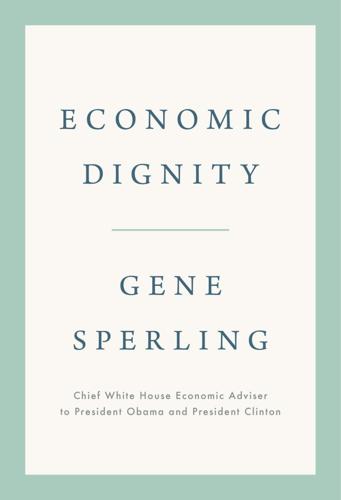
Economic Dignity
by
Gene Sperling
Published 14 Sep 2020
Brian Field, “Parenting and the High Cost of Autism,” Autism Support Network, accessed October 30, 2019, http://www.autismsupportnetwork.com/news/parenting-and-high-cost-autism; see also Ariane V. S. Buescher, Zuleyha Cidav, Martin Knapp, and David S. Mandell, “Costs of Autism Spectrum Disorders in the United Kingdom and United States,” Journal of the American Medical Association Pediatrics 168, no. 8 (August 2014): 721, https://jamanetwork.com/journals/jamapediatrics/fullarticle/1879723; and “The Financial Impact of an Autism Diagnosis,” Autism Spectrum Disorder Foundation, accessed October 30, 2019, https://myasdf.org/media-center/articles/the-financial-impact-of-an-autism-diagnosis/. 19. “A Discussion with Judy Heumann on Independent Living,” Disabled in Action (website), accessed December 9, 2019, http://www.disabledinaction.org/heumann.html. 20.
…
As parents will go to any length for their child, our failure to provide full public support ends up also diminishing the economic dignity of family members who are forced to limit their own pursuit of work and potential to fill the holes in our current safety net. As Brian Field writes for the Autism Spectrum Disorder Foundation, “It is not uncommon in this cycle for families to dig themselves into debt, sell their assets, and in some cases be forced into foreclosure or bankruptcy over the medical costs incurred in seeking to better their autistic child’s circumstances.”18 Too often, parents and family members struggle with basics in their own lives due to waiting lists and denied or meagerly supported services.
…
Spectrum, November 27, 2018, https://www.scientificamerican.com/article/why-are-there-so-few-autism-specialists/. 32. Eliza Gordon-Lipkin, Jessica Foster, and Georgina Peacock, “Whittling Down the Wait Time: Exploring Models to Minimize the Delay from Initial Concern to Diagnosis and Treatment of Autism Spectrum Disorder,” Pediatric Clinics of North America 63, no. 5 (October 2016): 851–59, https://www.ncbi.nlm.nih.gov/pmc/articles/PMC5583718/. 33. Leib Sutcher, Linda Darling-Hammond, and Desiree Carver-Thomas, “A Coming Crisis in Teaching? Teacher Supply, Demand, and Shortages in the U.S.,” Learning Policy Institute, September 2016, 5, https://learningpolicyinstitute.org/sites/default/files/product-files/A_Coming_Crisis_in_Teaching_REPORT.pdf. 34.
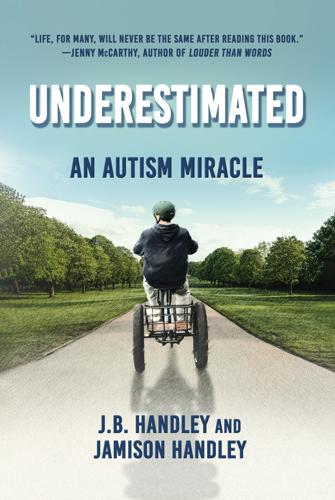
Underestimated: An Autism Miracle
by
J. B. Handley
and
Jamison Handley
Published 23 Mar 2021
Cover design by Yuneekpix Print ISBN: 978-1-5107-6636-5 Ebook ISBN: 978-1-5107-6637-2 Printed in the United States of America CONTENTS Introduction I: Twelve Months Vancouver Island Portland Oceanside Beaverton PDX Herndon Dulles Airport Newport Beach Palm Springs The Pearl District College Park Penn Presbyterian Philadelphia Wilsonville Portland Sisters, Oregon Lake Oswego II: Q&A with Jamie III: Dude-Bro Speaks Ethan Finley Evan Liam Vince IV: Science and Controversy V: Getting Started with S2C Epilogue Acknowledgments For EV, who never gave up on any of us. Introduction Sometimes real superheroes live in the hearts of small children fighting big battles. —Anonymous Autism means different things to different people, which shouldn’t be any surprise. The official term for autism is “Autism Spectrum Disorder,” and that word spectrum ensures that people will forever be confused when trying to understand how the word autism serves to describe any one individual. That’s why it’s important to start right here in describing a very special young man with autism, my son Jamison Havener Handley, henceforth known in this book as “Jamie.”
…
They are all brilliant people who “think, feel, and learn” just like everyone else. Every single one of them. And if EV is right, the numbers are downright staggering. Just in the United States, approximately seven million people have autism. An NIH workgroup in 2010 said, “up to 40 percent of children with autism spectrum disorders remain minimally speaking even after receiving years of interventions.” That’s nearly three million people like Jamie. Three million! I’ve asked around, and the best guesses I’ve heard for how many fluent letterboarders there are is somewhere between 1,000 and 1,500. That’s it. My own opinion?
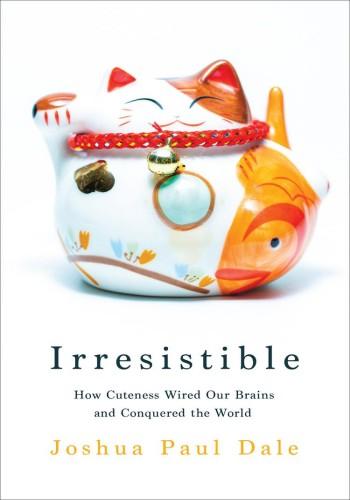
Irresistible: How Cuteness Wired our Brains and Conquered the World
by
Joshua Paul Dale
Published 15 Dec 2023
It triggered a new trend in children’s culture – namely, cartoons drawn from previously popular comics that engendered profitable lines of toy merchandise – that was copied successfully time and again. 22 Slade, ‘Cute men in contemporary Japan’, pp. 79–80. 23 Lamarre, ‘Speciesism, Part III’, p. 78. 24 Ibid., pp. 125–6. 25 Nancy L. Segal et al., ‘Preferences for Visible White Sclera in Adults, Children and Autism Spectrum Disorder Children: Implications of the Cooperative Eye Hypothesis’, Evolution and Human Behavior 37, 1 (January 2016), pp. 35–9, doi.org/10.1016/j. evolhumbehav.2015.06.006. 26 H. Kobayashi and S. Kohshima, ‘“Unique Morphology of the Human Eye and its Adaptive Meaning”: Comparative Studies on External Morphology of the Primate Eye’, Journal of Human Evolution 40, 5 (May 2001), pp. 419–35, doi:10.1006/jhev.2001.0468. 27 G.
…
Kohshima, ‘“Unique Morphology of the Human Eye and its Adaptive Meaning”: Comparative Studies on External Morphology of the Primate Eye’, Journal of Human Evolution 40, 5 (May 2001), pp. 419–35, doi:10.1006/jhev.2001.0468. 27 G. Kaplan and L. J. Rogers, ‘Patterns of Gazing in Orangutans’, International Journal of Primatology 23 (2002), pp. 501–26, doi.org/10.1023/A:1014913532057. 28 Segal et al., ‘Preferences for Visible White Sclera in Adults, Children and Autism Spectrum Disorder Children’, pp. 35–9. 29 Michael Tomasello et al., ‘Reliance on Head Versus Eyes in the Gaze Following of Great Apes and Human Infants: the Cooperative Eye Hypothesis’, Journal of Human Evolution 52 (2007), pp. 314–20, doi:10.1016/j.jhevol.2006.10.001. 30 Sarah Jessen and Tobias Grossman, ‘Processing Eye Cues in the Infant Brain’, Proceedings of the National Academy of Sciences 11, 45 (November 2014), pp. 16208–13, doi.org/10.1073/pnas.1411333111. 31 Melissa Bateson et al., ‘Cues of Being Watched Enhance Cooperation in a Real-World Setting’, Biology Letters 2 (2006), pp. 412–14, doi:10.1098/rsbl.2006.0509. 32 Tomasello et al., ‘Reliance on Head Versus Eyes’. 33 Jessen and Grossman, ‘Processing Eye Cues in the Infant Brain’. 34 Brian Hare, ‘Survival of the Friendliest: Homo sapiens Evolved via Selection for Prosociality’, Annual Review of Psychology 68, 1 (2017), pp. 155–86, doi:10.1146/annurev-psych-010416-044201. 35 Brian Hare and Vanessa Woods, Survival of the Friendliest: Understanding Our Origins and Rediscovering Our Common Humanity (New York: Random House, 2020), p. 83. 36 Wilkins et al., ‘The “Domestication Syndrome” in Mammals’, pp. 795–808. 37 Ibid.
…
Schweitzer, Marlis, ‘Consuming Celebrity: Commodities and Cuteness in the Circulation of Master William Henry West Betty’, in Jen Boyle and Wan-Chuan Kao, eds, The Retro-Futurism of Cuteness (Santa Barbara, CA: Punctum Books, 2017). Screech, Timon, The Lens Within the Heart: The Western Scientific Gaze and Popular Imagery in Later Edo Japan (Honolulu: University of Hawai’i Press 2002). Segal, Nancy L. et al., ‘Preferences for Visible White Sclera in Adults, Children and Autism Spectrum Disorder Children: Implications of the Cooperative Eye Hypothesis’, Evolution and Human Behavior 37, 1 (January 2016), doi.org/10.1016/j.evolhumbehav.2015.06.006. Serpell, J. A., ‘Commensalism or Cross-Species Adoption? A Critical Review of Theories of Wolf Domestication’, Frontiers of Veterinary Science 8, 662370 (2021), doi:10.3389/fvets.2021.662370.
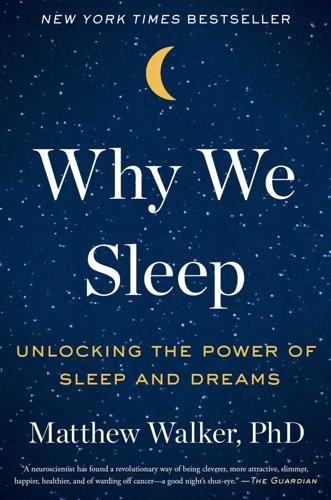
Why We Sleep: Unlocking the Power of Sleep and Dreams
by
Matthew Walker
Published 2 Oct 2017
When the infant rat pups were finally allowed to get some REM sleep, assembly of the cerebral rooftop did restart, but it didn’t accelerate, nor did it ever fully get back on track. An infant brain without sleep will be a brain ever underconstructed. A more recent link with deficient REM sleep concerns autism spectrum disorder (ASD) (not to be confused with attention deficit hyperactivity disorder [ADHD], which we will discuss later in the book). Autism, of which there are several forms, is a neurological condition that emerges early in development, usually around two or three years of age. The core symptom of autism is a lack of social interaction.
…
See also older adults learning capacity and sleep spindles affected by, 111 sleep quality deterioration and, 157 alarm clocks, 280–81 alcohol use car crashes and, 139–40, 141 childhood sleep loss as predictor of later, 149 performance and, 138 REM sleep blocking by, 82–85, 272, 274 sleep hygiene and reducing use of, 291 sleep rhythm affected by, 265, 271–75 Alzheimer’s disease, 157–63 amyloid in, 102, 158–61 insomnia in, 158 sleep disruption and onset of, 103, 157–58, 159, 161–62, 163 sleep improvements as treatment for, 162–63 Ambien (zolpidem), 282, 284, 285, 287, 288, 289 American Academy of Pediatrics, 314 American College of Physicians, 292 American Medical Association, 246 amphibians, sleep in, 56, 60 amygdala, 146–47, 195, 208, 210, 245 amyloid, Alzheimer’s disease, 102, 158–61 anagram-solving task, and dreaming, 223–25, 226 animal species memory benefit of sleep in, 115–16 sleep research in, 6, 56–57, 58, 60, 71 apes, sleep in, 56, 72, 76 aquatic mammals, sleep in, 60–61, 62, 64 Ariely, Dan, 281 Aristotle, 199–200 Aserinsky, Eugene, 42, 55 atherosclerosis, 166, 168 athletes importance of sleep for, 128–31 post-performance sleep and, 130 practice and sleep in, 124–28 sleep loss and injuries in, 129 atonia, 54, 250 attention deficit hyperactivity disorder (ADHD) abnormal brain development in, 91 sleep deficiency and, 149, 314–16 auditory stimulation for memory retention, 119–20 for sleep, 117–18 autism spectrum disorder (ASD) maternal alcohol use and, 83 REM-sleep abnormalities in, 74, 81–82 awake periods. See also wakefulness alcohol-infused sleep with, 271–72 memory retention in, 113 polyphasic sleep pattern in children alternating with, 85–86 bacteria, active-passive phases in, 57 Barns, Christopher, 301, 302–3 bats, sleep in, 57, 58, 59, 60 Begin, Menachem, 306–7 Belenky, Gregory, 137 Belsomra (suvorexant), 254 Berry, Wendell, 281 Bertolini, Mark, 333 beta-amyloid, in Alzheimer’s disease, 102, 158–61 biological clock.
…
It remains possible that they, like all other mammals, still consume in utero large volumes of sleep, and even REM sleep, just prior to birth. We simply do not yet know. II. S. Cohen, R. Conduit, S. W. Lockley, S. M. Rajaratnam, and K. M. Cornish, “The relationship between sleep and behavior in autism spectrum disorder (ASD): a review,” Journal of Neurodevelopmental Disorders 6, no. 1 (2011): 44. III. A. W. Buckley, A. J. Rodriguez, A. Jennison, et al. “Rapid eye movement sleep percentage in children with autism compared with children with developmental delay and typical development,” Archives of Pediatrics and Adolescent Medicine 164, no. 11 (2010): 1032–37.
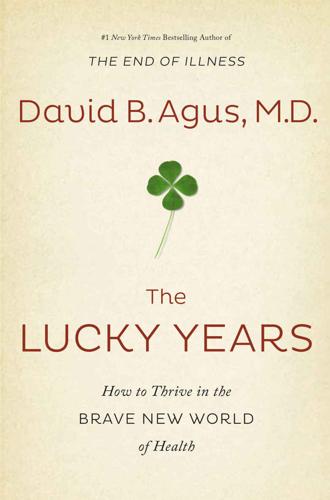
The Lucky Years: How to Thrive in the Brave New World of Health
by
David B. Agus
Published 29 Dec 2015
We don’t know all the health implications. Studies in mice suggest that such mixed mitochondria can have unintended consequences. In mice, at least, it’s been documented that they can become hypertensive and obese in middle age, and have impaired cognition. Among Cohen’s new mothers, one of the babies born developed an autism spectrum disorder, and two of the fetuses, one of which was miscarried and the other aborted, had a serious genetic defect known as Turner’s syndrome. Whether or not these defects were a direct result of the procedure is yet to be known. The team stopped performing the procedure in 2001, when the FDA cracked down, saying that more research was required before it could be applied for human use.
…
acute lymphoblastic leukemia, 115 adenocarcinomas, 216 Advil, 66 “Aequanimitas” (Osler), 75 Affordable Care Act, 69–70 aflibercept (Zaltrap), 117 Africa, 76–77, 78, 163, 186 age: biological, 45–48, 46, 232 chronological, 45, 46, 46, 47, 135–36, 232 aging, 175, 201 coarse-graining in, 231–32 context and, 45 diseases of, 41, 128, 136 feebleness and, 43 fertility and, 43 genetics and, 20, 41 immune system and, 44 in males vs. females, 63–64 mortality rates and, 42–43 muscle loss in, 195–96 in other species, 41–45 parabiosis experiments on, 1–4, 3, 21 plasma transfusions and, 4–5 senility and, 44 telomeres and, 64–65 theories of, 40–41 AIDS, see HIV/AIDS airport noise, cardiovascular disease and, 92 Alabama, 47 alcohol abuse, 22 ALK, 51, 53–54 Alzheimer’s disease, 5, 8, 10, 91, 108, 113, 118, 129, 163, 175, 203–4, 215 diet and, 163 American College of Cardiology, 218 American Heart Association, 183, 218 American Institute for Cancer Research, 190 American Journal of Clinical Nutrition, 194 amino acids, 194 Amsterdam, University of, 41 amyotrophic lateral scleroris (ALS), 119–20 Angell, Marcia, 178 Annals of Internal Medicine, 181 Anopheles mosquito, 77 Antarctica, 94 antiaging drugs, 201 antiaging hoaxes, 200–201 antibiotics, 145 appendicitis and, 94 resistance to, 67–69, 68 antibodies, 84–85 antidepressants, 145 antioxidants, 208 antivaccine movement, 155–56 anxiety, 122 apoptosis, 59 appendicitis, 93–94 Apple, 23, 26 Archives of Internal Medicine, 142, 143, 192, 196 Arizona State University, 134 arthritis, 24, 215 artificial sweeteners, 85–86, 120 Asia, 77 aspirin, 76, 93, 136, 215–17 anticancer qualities of, 216–17 Associated Press, 21 asthma, 59 Athens, 226 atherosclerosis, 183 ATP (adenosine triphosphate), 107 Auckland, University of, 181 Aurora shooting, 81 Australia, 41, 124, 164, 197–98 Autier, Philippe, 180–81 autism spectrum disorders, 108, 112 vaccines and, 18, 153, 155–56 autoimmune diseases, 85, 125, 175 Avastin (bevacizumab), 11 Ayurveda, 113 bacteria: antibiotic-resistant, 67–69, 68 beneficial, 33–34 as earth’s first inhabitants, 124 bacterial genes, 107, 119 bacterial sepsis, 222 balance, 45 Baltimore, David, 102, 103 Baltimore, Md., 74 Bang, Hans Olaf, 182–83 Bangladesh, 232–35 Beaverton, Oreg., 109 Benda, Carl, 107 Berlin, 232, 233 Bernardi, Edward, 104–5 Bernardi, Neil, 104, 105–6 Bernardi, Sharon, 104–6, 108–9, 111 bevacizumab (Avastin), 11 Big Data, see databases, medical; data mining Big Pharma, see pharmaceutical industry Bill & Melinda Gates Foundation, 87 Bills of Mortality, 96, 97–99, 98, 99, 100 “biological age,” 45–48, 46, 232 biomarkers, 45, 47 biopsies, blood-based, 61 Black Death, 95–101, 98, 99, 100 bladder cancer, 54–55, 54 blastocysts, 109 Blink: The Power of Thinking Without Thinking (Gladwell), 225 blood-brain barrier, 54 blood clotting, 187 blood pressure, 22, 47, 188, 195, 218 home measurement of, 135, 136 range of, 136 blood sugar levels, 151 body: as complex organism, 20, 48, 135 as emergent system, 48, 130–31 listening to, 26, 150, 163 resilience of, 49 “self” vs.
…
Pancras, 161 saline solution, 234 Salk Institute for Biological Studies, 138 San Diego, Calif., 211 San Diego State University, 138 Sandy, Hurricane, 84 San Francisco, Calif., 166 San Francisco Giants, 205 sanitation, 234 Sanofi, 117 sarcopenia, 195–96 satiety, 122 saw palmetto, 154–55, 168 Science, 14, 37, 84, 95, 102, 123–24, 138, 169 Scripps Translational Science Institute, 114–15 security, of medical databases, 88–89 selenium, 169 Selenium and Vitamin E Cancer Prevention Trial (SELECT), 169 senility, aging and, 44 September 11, 2001, terrorist attacks of, 103 sex, 210–12 Shakespeare, William, 1, 202 shingles, 161 single-nucleotide polymorphisms (SNPs), 113–14 sitting, 186–87, 190, 192–93 “16 Decisions,” 234, 235 sleep, 146–48, 202–10 apps for tracking, 147–48 hormone balance and, 207 microbiome and, 122–23 sleep apnea, 202–4, 203 sleep deprivation, 202–10 chronic disease and, 205 and sports performance, 204–5 sleep disorders, 202–6 “sleeping beauties,” research papers as, 94–95 sleep ranges, 206–7 sleep-wake cycle, 140 Sloan Kettering Institute, 58, 62 smallpox, 160 Smallpox and Inoculation Hospital, 161 smartphones, health care and, 79, 90 smoking, 22, 47, 57, 171, 176–77, 186, 188, 237 snoring, 203, 207 social deprivation, 213 Southern Denmark, University of, 41 Soviet Union, 94 soy, 168 Spain, 58 Sports Illustrated, 202 squamous cell lung cancer, 118 Stanford University, 3, 23, 44, 63, 86, 178 State of the Union address (2015), 114 statins, 76, 77–78, 93, 136, 217–22 Stein, Fred, 28 stem cells, 170, 171, 176, 201 differentiation in, 63 male vs. female, 64 reactivation of, 4, 5 in research, 63–64 strength training, 194 stress, 22, 137–38, 211 honesty about, 133–34 among Romanian children, 213 strokes, 76, 128, 182, 217, 218 sub-Saharan Africa, 77 sugar consumption, honesty about, 134 supplement industry, lack of regulation in, 19 supplements, 145, 153, 154–55, 182 Surgeon General, US, 137 surrogate markers, 127–28 SWOG cancer research cooperative group, 169 symptoms, unexplained, 146 tamoxifen, 53 Tanzania, 163 T cells, 29–30, 56 engineered, 57 TCP-1 ring complex chaperonin, 139–40 technology: ethics and, 25–26 health and, 37–70 inflection points in, 7–8, 7 lack of oversight of, 9 population growth and, 27 teixobactin, 68–69 telemedicine, 80–81 telomeres, 64–65 Tempest, The (Shakespeare), 1 Tennessee, University of, 23 testosterone, 200–201 Texas, 103 TGF-beta (transforming growth factor beta), 58–59 “thin-slicing,” 227 3-D printing, medications and, 66–67 thyroid cancer, 93 tobacco, 177, 237 Tomasetti, Cristian, 169–70, 171–72 Topol, Eric, 114–15 touch, 212–15 Touch: The Science of Hand, Heart, and Mind (Linden), 215 Touch Research Institute (University of Miami’s Miller School of Medicine), 214 trastuzumab (Herceptin), 55 triglyceride level, 150, 195 True, Marion, 226–27 tumors, sequencing of, 49–52, 50, 51, 54, 61, 113, 114 Turnbull, Douglass, 108–9 Turner’s syndrome, 112 turquoise killifish, 44–45, 44 two-week challenge, 126–52 chronological age and, 135–36 energy levels in, 149 exercise in, 148 habits and routines in, 137–41 heritage and family history in, 136–37 medications and management of conditions in, 144–46 mood and motivation in, 149 sleep needs in, 146–48 weight and diet in, 141–44 Ukraine, 33 “Underappreciated Role of Muscle in Health and Disease, The” (Wolfe), 194 United Kingdom, 134, 219, 220 see also Great Britain United States, leading causes of death in, 129 University of Arkansas for Medical Sciences, Center for Translational Research in Aging and Longevity at, 194 Utah, 47 vaccines: autism spectrum disorders and, 18, 153, 155–56 public distrust of, 160–61 universal innoculation and, 160–61 vagus nerve, 122 Vanderbilt University Medical Center, 204 Veasey, Sigrid, 208, 210 vincristine, 115 Virginia, 204 Virginia, University of, 37, 214 Virginia Tech shooting, 91 VirScan, 84–85 viruses, 84–85, 119 data mining and, 85 human genome and, 119–20 vitamin A deficiency, 235 vitamin D, 179–81 vitamin E, 168–69 vitamins, 145, 153, 182 Vogelstein, Bert, 169–70, 171, 172 Wakefield, Andrew, 155 Walker, Jay, 98–99 Walker Library of the History of Human Imagination, 98–99 Walmart, 221 Washington Post, 88 Watson (IBM supercomputer), cancer treatment and, 88–89 weight, diet and, 141–42 Wellcome Trust Centre for Mitochondrial Research, 108 wellness checkups, 78–80 Western Africa, 222 West Nile virus, 25 West Virginia, 47 whooping cough, 160 “Why Most Published Research Findings Are False” (Ioannidis), 178 Wikipedia, medical misinformation on, 154 Winter, Christopher, 204–5 Wolfe, Robert, 194 women, microfinancing and, 233–34 World Economic Forum, 161–62, 166 World Health Organization (WHO), 67, 170, 187, 188 World Series (2014), 205 X chromosome, 63–64 Yale Law School, 159 Y chromosome, 63–64 yogurt, 34 Yunus, Muhammad, 232–35 Zaltrap (aflibercept), 117 Zeri, Federico, 226 Zykadia (ceritinib), 53 Simon & Schuster 1230 Avenue of the Americas New York, NY 10020 www.SimonandSchuster.com Copyright © 2016 by Dr.
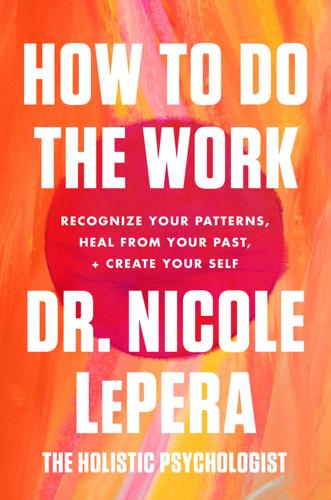
How to Do the Work: Recognize Your Patterns, Heal From Your Past, and Create Your Self
by
Nicole Lepera
Published 9 Mar 2021
There is promising evidence that when the gut wall is healed via dietary interventions along with supplemental probiotics, some mental health symptoms may be alleviated. Several recent studies have found that the use of probiotics has reduced distressing social and behavioral issues in children with more severe forms of autism spectrum disorder.51 The quickest way to improve your gut health—to support your microbes and maintain the integrity of your gut wall—is to eat whole, nutrient-dense food. The direct line between the gut and the brain makes each meal an opportunity for healing and nourishment. It is helpful not to think of deprivation when we cut processed and unhealthy foods out of our diets and instead view doing so as an exciting opportunity to improve our physical and mental well-being one bite at a time.
…
-L., Lincinio, J., Wei, H., & Xie, P. (2019). The gut microbiome from patients with schizophrenia modulates the glutamate-glutamine-GABA cycle and schizophrenia-relevant behaviors in mice. Science Advances, 5(2), eeau8817. 51.Li, Q., Han, Y., Dy, A.B.C., & Hagerman, R. J. (2017). The gut microbiota and autism spectrum disorders. Frontiers in Cellular Neuroscience, 11, Article 120. 52.de Cabo, R., & Mattson, M. P. (2019). Effects of intermittent fasting on health, aging, and disease. The New England Journal of Medicine, 381(26), 2541–2551. 53.Mattson, M. P., Moehl, K., Ghena, N., Schmaedick, M., & Cheng, A. (2018).
…
abuse, 125 by parent-figure, 121, 122 sexual, 40–41, 121–22, 133–35 acknowledgment, parent-figure who does not see or hear you and, 49–51, 60, 166, 174 activation symptoms, 83 adaptive coping strategies, 57–58, 68, 276 addiction, 44 sexual, 123 substance use recovery and, xi, 7 trauma bonding and, 162–63 traumatic bonding as, 163 see also emotional addiction adrenal glands, 68, 73, 104 adrenaline, 68, 80, 86, 96 Adult Children of Emotionally Immature Parents (Gibson), 210 Adverse Childhood Experiences (ACEs) test, 41, 43–44, 67, 125 affirmations, daily, 120 aging: physical exercise and, 100 power of belief and, 33–34 Ainsworth, Mary, 124 allostasis, 68, 275 amygdala, 68 analytic mind, 275 anger, 55, 56, 58, 80, 118, 236 anger, awakening latent feelings of, 215–17 Anthony, 121–23, 133–35 anxiety, xxi, 3, 5, 23, 30, 44, 70, 94, 96, 109, 118, 170, 172, 208, 228, 229, 231, 248 LePera’s experience of, xvii, 25, 42, 65, 66, 96, 159 social, 76, 82, 126, 226 anxious-resistant infants, 125 appearance: parent-figure overly focused on, 53–54, 167–68, 176 social anxiety and, 226 approach/withdrawal patterning, 169–70, 171 attachment, attachment theory, 275 in adulthood, 160–62 in infancy, 124–26, 160 attachment symptoms, 83 attention deficit hyperactivity disorder (ADHD), 94, 98 attention muscle: developing, 31–32 authentic love, 171–73, 275 autism spectrum disorder, 94 autoimmune disorders, 8, 69, 89 autonomic nervous system, 72, 77, 78, 90, 97–98, 105, 111, 183, 190, 275 regulating responses of, 90 autopilot, xxii, 21, 28–29, 33, 147, 275 homeostatic impulse and, 29–30 avoidant infants, 125 awakenings, xiii, xix, 11, 25, 207–9, 245, 254 of LePera, xvi–xvii, 25–26, 208–9, 217–20 Bazely, Ally, 17–19, 88–90 Becoming the Iceman (Hof), 99 behavior modeling, 275 beliefs, 107–20, 275 child’s stories about parent-figures and, 107–10 core, 108–11, 118–19, 276 Do the Work: Do a Core Beliefs Inventory, 118–19 FSJ: Creating a New Belief, 119–20 of LePera, 108–10 origin of, 110–12 power of, 33–34 as practiced thoughts, 110, 119 beta state, 116 Betrayal Bond, The (Carnes), 160–61 Black, Indigenous, and People of Color (BIPOC), 30, 45, 70, 71 blood sugar, 95 body connection meditation, 238–39 bottom-up processes, 89–91 boundaries, 179–205, 212, 275 Do the Work: Create a New Boundary, 199–205 emotional dumping and, 189–90 emotional symptoms and, 83 enmeshment and, 181–82, 184, 187, 190–91 expectations and, 195–96 with family, set by LePera, 196–99, 219, 261–62 how to set and maintain, 190–95, 202–5 mental/emotional, 187–88, 200 niceness as barrier to work on, 183–84 oversharing and, 188–89 parent-figure who does not model, 52–53, 61–62, 167, 175 physical, 186, 199 resource, 186–87, 200 rigid, loose, and flexible, 184–85 boundarylessness, 83, 187, 188, 189, 197, 227 Bowen, Murray, 126 Bowlby, John, 124 Bradshaw, John, 127–28, 133 brain: fear center of, 68 gut’s connection to, 71–72, 94; see also vagus nerve impact of stress on, 69 in infancy and childhood, 112, 113–16, 125–26 inflammation in, 94 neuroplasticity and, 32–33, 87, 278 physical exercise and, 100 prefrontal cortex of, 26, 33, 208 reticular activating system (RAS) and, 111–12, 118, 130 top-down processes and, 90 Breath (Nestor), 98 breathwork, 241 FSJ: Breathwork, 106 healing with, 90, 97–100 Brown, Stuart, 214 Buddha, 27 cardiovascular exercise, 100 caretaker archetype, 129, 135–36, 180 Carnes, Patrick, 160–61 change: in brain, neuroplasticity and, 32–33, 87, 278 resistance to, 29 childhood, 112–18 archetypes of trauma in, 48–55, 165, 174; see also parent-figures authentic Self in, 51, 113, 116–18, 128, 181–82 conditioning in, 46–47, 77–78 core beliefs about ourselves and our place in the world formed in, 108–13, 115, 116–18 co-regulation in, 77–78, 82, 114, 232 dependency and vulnerability in, 45, 107, 113–14, 124, 146 digestive issues resulting from chronic stress in, 91–92 egocentric state in, 115, 143, 276 fantasies about, 130–31 idealized view of, 112, 130 identifying wounds from, 59–63 impact of adverse experiences in, xvi imprinting in, 114 limited understanding of parent-figures in, 107–10 sexual abuse in, 40–41, 121–22, 133–35 trauma bonds learned and conditioned in, 161, 163 see also infancy childlike part of ourselves, 128 see also inner child childlike wonder, 214–15, 222–23 Christine, 39–41, 43, 48 codependency, 118, 129, 130, 135–36, 138, 217, 251, 254, 261 cognitive behavioral therapy (CBT), xxii, 5–6 cold therapy, 90, 98–99 collective “we,” 251–54 comfort zone, 29–30, 163–64 community: power of, 247–48 SelfHealer, 246–47 compassion, xvii, 33, 73, 105, 144, 151, 171, 196, 211, 212, 234 compassion, for other people in relationships, 196 conditioning, 6, 28–29, 59, 275–76 in childhood, 46–47, 77–78 confirmation of bias, 111 consciousness, conscious Self, xxi, xxiii, xxiv, 23–37, 257, 276 developing attention muscle and, 31–32 Do the Work: Build Consciousness, 36 FSJ: Consciousness Building, 37 LePera’s introduction to concept of, 25–26, 259 neuroplasticity and, 32–33 power of thoughts and, 33–34 prefrontal cortex as seat of, 26, 33, 208 subconscious Self and, 28–29 witnessing yourself and, 34–35 see also subconscious; unconscious coping strategies, adaptive and maladaptive, 57–58, 68, 276 core beliefs, 108–11, 118–19, 276 LePera’s creation of, 108–10 co-regulation, 77–78, 82, 102, 114, 232, 247, 252–53, 276 cortisol, 68, 73, 80, 104, 157, 228, 276 critical inner parent, 276 cytokines, 69, 81, 93–94 daydreaming, 130–31 “Day in the Life of Doing the Work, A,” 256–57 default patterns: breaking free of, 32–33 homeostatic impulse and, 29–30 practiced thought and, 110 delta state, 115 Denworth, Lydia, 248 denying a child’s reality, 48–49, 60 dependency: in childhood, 45, 107, 113–14, 124, 146 traumatic bonding and, 160–61, 162 see also codependency depression, 3, 5, 14, 18, 33, 70, 94, 96, 112, 122, 123, 182, 190, 208, 214, 248 diet, xv, 39–40, 89, 91, 93, 94–96 dieting, 13, 53 digestive system, 72 intermittent fasting and, 95–96 problems in, 8, 70, 91–92, 93 “rest and digest” and, 72, 82, 279 discipline, loving, 212–13, 221, 233 disempowerment, 30 disorganized-disoriented infants, 125 dissociation, 40–41, 43, 57, 58, 65, 75, 134, 158, 159, 168, 169, 208, 228–29, 276 immobilization (freezing) and, 75 distress tolerance (endurance), 276 dopamine, 80, 164 dream states, 27 dysbiosis (leaky gut), 93–94 dysregulation, see nervous system dysregulation ego, 141–55 activation of, 144–45, 149–50 allowing to introduce itself, 147–48 defensive stance of, 143, 144–45 having a friendly encounter with, 148 naming, 148–49 projections of, 145–47, 150–51 egocentric state, 115, 143, 276 ego consciousness, 151–53, 155, 277 ego stories, xxiii, 141–55, 162, 257 choosing new narratives and, 148 creation of, 142–43 of LePera, 141–42, 151–53 witnessing, 147–51 emotional addiction, 7, 78–81, 110, 173, 228–29, 277 emotional dumping and, 189–90 typical day of, 79 emotional dumping, 189–90, 277 emotional immaturity, 209–10, 225–26, 235–36, 237, 277 emotional maturity, xvii, xxiii, 225–42, 243, 277 ability to tolerate distress and, 231–32 cultivating in children, 232–34 Do the Work: Develop Emotional Maturity amd Resilience, 238–42 FSJ: Emotional Body Check-in, 239 inner, beams outward, 236–37 meditation and, 236 soothing and, 230–31, 240 emotional regulation, 228, 277 parent-figure incapable of, 4–5, 54–57, 62–63, 168, 177 reparenting and, 212, 220–21 emotional resilience, 55, 168, 209, 228, 277 emotional symptoms, 83 emotions: of child, parent-figure’s denial of, 48–49, 60 ninety-second rule of, 228–30 reconnect with and rediscover, 238–39 empowerment consciousness, 153, 155, 277 enduring activities, 241–42 enmeshment, 161, 181–82, 184, 187, 190–91, 277 enteric nervous system (ENS), 92–93, 277 epigenetics, xxii, 11–13, 87 expectations, boundaries and, 195–96 family systems theory, 126 fantasies, childhood, 130–31 fasting, intermittent, 95–96 fight-or-flight response, 68, 69–70, 72, 73–74, 75, 81, 114, 277 healing play and, 102 flow state, 102 Folkman, Susan, 57 food choices, 91 food dissociation, 39–40 freezing, see immobilization Friendship (Denworth), 248 friendship, authentic, 248–50 future, planning for, 26 Future Self Journaling (FSJ), 21, 277–78 Breathwork, 106 Changing Ego Consciousness to Empowerment Consciousness, 155 Consciousness Building, 37 Creating a New Belief, 119–20 Creating Interdependence, 255–57 Emotional Body Check-in, 239 Restoring Balance, 85 gastrointestinal (GI) problems, 70, 81–82, 91–92 Gazipura, Aziz, 183–84 genes, epigenetics and, xxii, 11–13, 87 Gibson, Lindsay, 46, 210, 225–26 Gottman, John, 167 grief, unresolved feelings of, 31 grounding yourself, 241 groupthink, 187 Gurdjieff, George, xi gut, 91–96 brain’s connections to, 71–72, 92; see also vagus nerve diet and, 91, 93, 94–96 dysbiosis, or leaky gut, 93–94 enteric nervous system (ENS) in, 92–93, 277 gastrointestinal (GI) problems and, 70, 81–82, 92, 93–94 intermittent fasting and, 95–96 microbiome in, 70, 92, 93, 94, 105 gut-brain axis, 92 habits, homeostatic impulse and, 29–30 Hazan, Cindy, 160 Hermetic traditions, xi hero worshiper archetype, 130, 138–39 hitting rock bottom, LePera’s experience of, xv–xvi, xvii Hof, Wim, 98–99 Holistic Psychologist, The, xvii–xix, 246–47, 249–50 Holistic Psychology, xxi–xxv, 259–60, 278 basic tenets of, 16 LePera’s path to creation of, 3–8 Homecoming (Bradshaw), 128 homeostasis, 78, 163, 189–90, 218, 228, 230, 252–53, 278 challenged by stress, 67, 68 regaining, 89, 91, 103; see also mind-body healing practices vagus nerve and, 72, 78 homeostatic impulse, 29–30, 278 hypervigilance symptoms, 83 icing behavior, 54–55, 56, 166 idealization, 47, 112, 130, 179, 180 identical twin studies, 12 identity, core beliefs about, 110–11, 112 immobilization (freezing), 68, 75, 80, 101, 114 immune system, 68–69, 93–94, 103, 105 imperfections, acceptance of your own, 233, 234 imprinting, 12, 41, 46, 53, 59, 114 indecisiveness (cd!!!)

The Uninhabitable Earth: Life After Warming
by
David Wallace-Wells
Published 19 Feb 2019
ADHD: Oddvar Myhre et al., “Early Life Exposure to Air Pollution Particulate Matter (PM) as Risk Factor for Attention Deficit/Hyperactivity Disorder (ADHD): Need for Novel Strategies for Mechanisms and Causalities,” Toxicology and Applied Pharmacology 354 (September 2018): pp. 196–214, https://doi.org/10.1016/j.taap.2018.03.015. autism spectrum disorders: Raanan Raz et al., “Autism Spectrum Disorder and Particulate Matter Air Pollution Before, During, and After Pregnancy: A Nested Case-Control Analysis Within the Nurses’ Health Study II Cohort,” Environmental Health Perspectives 123, no. 3 (March 2015): pp. 264–70, https://doi.org/10.1289/ehp.1408133. damage the development of neurons: Sam Brockmeyer and Amedeo D’Angiulli, “How Air Pollution Alters Brain Development: The Role of Neuroinflammation,” Translational Neuroscience 7 (March 2016): pp. 24–30, https://doi.org/10.1515/tnsci-2016-0005.
…
The public health damage is indiscriminate, touching nearly every human vulnerability: pollution increases prevalence of stroke, heart disease, cancer of all kinds, acute and chronic respiratory diseases like asthma, and adverse pregnancy outcomes, including premature birth. New research into the behavioral and developmental effects is perhaps even scarier: air pollution has been linked to worse memory, attention, and vocabulary, and to ADHD and autism spectrum disorders. Pollution has been shown to damage the development of neurons in the brain, and proximity to a coal plant can deform your DNA. In the developing world, 98 percent of cities are enveloped by air above the threshold of safety established by the WHO. Get out of urban areas and the problem doesn’t much improve: 95 percent of the world’s population is breathing dangerously polluted air.
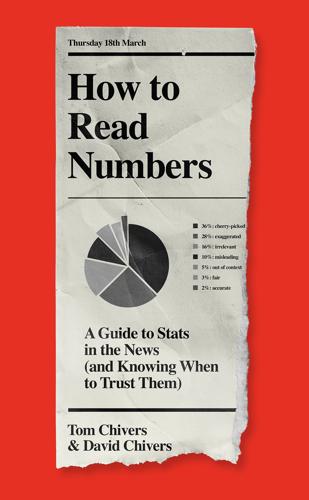
How to Read Numbers: A Guide to Statistics in the News (And Knowing When to Trust Them)
by
Tom Chivers
and
David Chivers
Published 18 Mar 2021
Let’s talk about something else first. Diagnoses of autism, a developmental disorder which involves problems with social communication and interaction, have been on the rise for years. In 2000, the US Centers for Disease Control and Prevention estimated that about one in every 150 children had autism-spectrum disorder; by 2016, that figure was one in fifty-four.5 Even the 2000 figure was itself many times higher than estimates in previous decades: studies in the 1960s6 and 1970s7 suggested that only about one child in every 2,500 or even 5,000 was autistic. Similar trends can be seen in countries around the world, especially rich ones.
…
Hate Crime statistical bulletin, England and Wales 2018/19, Home Office, 2019 https://assets.publishing.service.gov.uk/government/uploads/system/uploads/attachment_data/file/839172/hate-crime-1819-hosb2419.pdf 3. Nancy Kelley, Dr Omar Khan and Sarah Sharrock, ‘Racial prejudice in Britain today’, NatCen, September 2017 http://natcen.ac.uk/media/1488132/racial-prejudice-report_v4.pdf 4. Ibid. 5. ‘Data & statistics on autism spectrum disorder’, US Centers for Disease Control and Prevention https://www.cdc.gov/ncbddd/autism/data.html 6. Lotter, V., ‘Epidemiology of autistic conditions in young children’, Social Psychiatry, 1(3) (1966), pp. 124–35. 7. Treffert, D. A., ‘Epidemiology of infantile autism’, Archives of General Psychiatry, 22(5) (1970), pp. 431–8. 8.
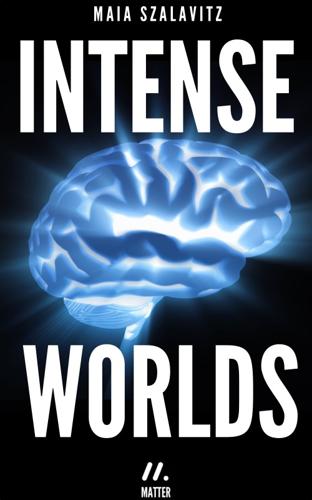
Intense Worlds
by
Maia Szalavitz
Published 11 Dec 2013
Like other autistic talents, hyperlexia is often dismissed as a “splinter” strength. At that time, Yale experts ruled autism out, telling Gilman that Benjamin “is not a candidate because he is too ‘warm’ and too ‘related,’” she recalls. Kai Markram’s hugs had similarly been seen as disqualifying. At twelve years of age, however, Benjamin was officially diagnosed with Autism Spectrum Disorder. According to the intense world perspective, however, warmth isn’t incompatible with autism. What looks like antisocial behavior results from being too affected by others’ emotions—the opposite of indifference. Indeed, research on typical children and adults finds that too much distress can dampen ordinary empathy as well.
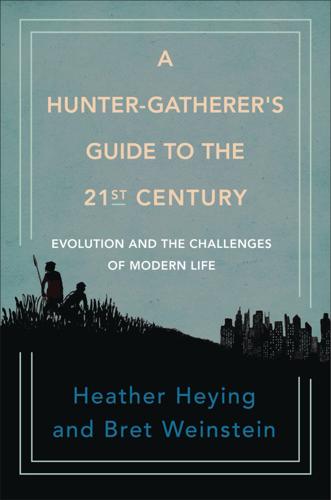
A Hunter-Gatherer's Guide to the 21st Century: Evolution and the Challenges of Modern Life
by
Heather Heying
and
Bret Weinstein
Published 14 Sep 2021
The modern food supply chain benefits from shelf stability of processed foods—while the foods along the perimeter of a grocery store tend to be less processed, and therefore less shelf stable, nearly all of the foods in the middle of grocery stores have expiration dates many weeks or even months away. Minimizing fungal growth in our food is certainly desirable, but at what cost? Propionic acid (PPA) inhibits mold growth, and is a prominent additive to processed foods for that reason, but its presence in utero affects fetal brain cells and is linked to an increase in diagnoses of autism spectrum disorder of children thus affected.13 We should not be surprised that being “shelf stable” comes with costs. Similarly, people who live near the poles, or who rarely go outside, can come to suffer from short stature, and weak and curved bones—a condition known as rickets. Vitamin D was identified as the missing molecule for such people, and as we moderns seem to like our pills, we are provided vitamin D as a stand-alone product, or as an additive to milk.
…
First, except for rare, extreme examples, many people who exhibit “neurodiversity” benefit from trade-offs that allow them enhanced insight or skills in other areas. There is also value simply in being the “rare phenotype,” in looking at the world differently from how the majority sees it. This logic applies not just to people who have autism spectrum disorder, especially if they are high functioning, but also to people who have ADHD or are dyslexic, dysgraphic, color-blind, left-handed, or more.40 Given a choice, you might not choose any of these traits for yourself or your children, but that preference may say more about our inability to understand trade-offs—especially cryptic intellectual trade-offs—than it does about what is actually beneficial for individuals, and for society.
…
Evidence for fluoride effects on salmon passage at John Day Dam, Columbia River, 1982–1986. North American Journal of Fisheries Management, 9(2): 154–162. 13. Abdelli, L. S., Samsam, A., and Naser, S. A., 2019. Propionic acid induces gliosis and neuro-inflammation through modulation of PTEN/AKT pathway in autism spectrum disorder. Scientific Reports, 9(1): 1–12. 14. Autier, P., et al., 2014. Vitamin D status and ill health: A systematic review. Lancet Diabetes & Endocrinology, 2(1): 76–89. 15. Jacobsen, R., 2019. Is sunscreen the new margarine? Outside Magazine, January 10, 2019, https://www.outsideonline.com/2380751/sunscreen-sun-exposure-skin-cancer-science. 16.
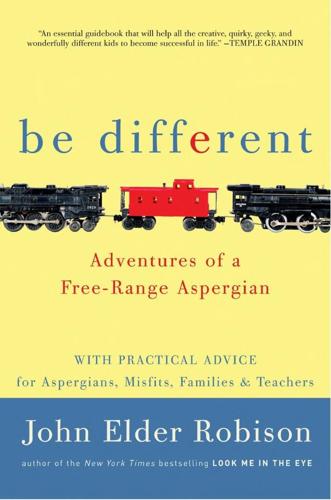
Be Different: Adventures of a Free-Range Aspergian With Practical Advice for Aspergians, Misfits, Families & Teachers
by
John Elder Robison
Published 22 Mar 2011
I’ll offer my insight interwoven with the “official” definition from the Diagnostic and Statistical Manual of Mental Disorders (DSM IV), which doctors and psychologists use. The main thing to understand about Asperger’s is that it’s a neurological difference—a difference in the way our brains are made. It’s one of the conditions that doctors call an autism spectrum disorder, or ASD. In fact, in the upcoming edition of the DSM, due in 2013, Asperger’s will no longer be listed as a separate diagnosis. It will be categorized as one of the autism spectrum disorders. There’s no way to measure any form of autism with instruments—at least not yet—so a diagnosis must be made by asking questions and observing our behavior. There are six major points a doctor or mental health professional will look at when judging whether a patient has Asperger’s or some other form of autism.

Deep Medicine: How Artificial Intelligence Can Make Healthcare Human Again
by
Eric Topol
Published 1 Jan 2019
Chromatin is made up of large molecules that help pack DNA for storage and unravel it for transcription into RNA and ultimately translation into proteins, so interactions between chromatin and DNA sequences give those sequences an important regulatory role. Xiaohui Xie, a computer scientist at UC Irvine, called it “a milestone in applying deep learning to genomics.”3 Another early proof of this concept was an investigation of the genomics of autism spectrum disorder. Before the work was undertaken, only sixty-five genes had been linked to autism with strong evidence. The algorithms identified 2,500 genes that were likely contributory to or even causative of the symptoms of the autism spectrum. The algorithm was also able to map the gene interactions responsible.4 Deep learning is also helping with the fundamental task of interpreting the variants identified in a human genome after it has been sequenced.
…
More than 2,000 molecules were modeled to see which could convert sick cells, modeling genetic diseases, into healthy-looking cells.38 The company has identified at least fifteen new potential treatments with this strategy, and one is moving forward in clinical trials for cerebral cavernous malformation. As its name implies, Deep Genomics takes a genomic anchoring approach to deep learning. Back in 2014, the Toronto-based group, led by Brendan Frey, published an impressive paper on the human splicing code, yielding thousands of potential targets for patients with diseases such as autism spectrum disorder and spinal muscular atrophy.39 TABLE 10.1: List of selected companies working on AI for drug discovery, DL—deep learning, CNS—central nervous system, NLP—natural-language processing. Source: Adapted from E. Smalley, “AI-Powered Drug Discovery Captures Pharma Interest,” Nat Biotechnol (2017): 35(7), 604–605.
…
Troyanskaya, “Predicting Effects of Noncoding Variants with Deep Learning–Based Sequence Model.” Nat Methods, 2015. 12(10): pp. 931–934; Pennisi, E., “AI in Action: Combing the Genome for the Roots of Autism.” Science, 2017. 357(6346): p. 25. 4. Krishnan, A., et al., “Genome-Wide Prediction and Functional Characterization of the Genetic Basis of Autism Spectrum Disorder.” Nat Neurosci, 2016. 19(11): pp. 1454–1462. 5. Molteni, M., “Google Is Giving Away AI That Can Build Your Genome Sequence,” Wired. 2017; Carroll, A. and N. Thangaraj, “Evaluating DeepVariant: A New Deep Learning Variant Caller from the Google Brain Team,” DNA Nexus. 2017; Poplin, R., et al., Creating a Universal SNP and Small Indel Variant Caller with Deep Neural Networks. bioRxiv, 2016; DePristo, M., and R.

Carbon: The Book of Life
by
Paul Hawken
Published 17 Mar 2025
For example, the EU bans phthalates in flooring material, not food packaging. In the United States, they can be used in lipstick but not sippy cups. According to The Guardian, “researchers have linked phthalates to asthma, attention-deficit hyperactivity disorder, breast cancer, obesity and type II diabetes, low IQ, neurodevelopmental issues, behavioral issues, autism spectrum disorders, altered reproductive development and male fertility issues.” Add to the regulator workload approximately fifty thousand forms of nanotubes. Annual fullerene production is relatively small in pounds but not in number. Approximately six thousand tons of the yearly output equals three nonillion fullerenes.
…
A B C D E F G H I J K L M N O P Q R S T U V W X Y Z A Aboriginal people, of Australia, 69 acetamiprid, 138–39 Ackerman, Diane, 192 acoustic smog, 42 addiction, to food, 63, 64, 65 Age of Enlightenment, 8 Agricultural Testament (Berry), 165 AIDS, 76 air pollution, 61 Akómoláfé, Báyò, 1, 9–10, 182–83 alcohol, 46, 50, 161 algae, 32, 106 allergies, 54, 61 alpha particle (helium), 20, 23–25 Alzheimer’s disease, 69 American diet, 62–63 Americas corn in, 67 food in, 47–48 Indigenous peoples in, 47–48 amino acids, 12, 25–26, 112 aminophylline ephedrine, 60 ammonia fertilizer, 87–88 amorphous carbon (charcoal), 73 Anastas, Paul, 65 animalcules, 32 anthrophony, 42–44 antioxidants, 76 antivirals, 75–76 ants, 91, 131, 160, 165 Apis mellifera (honey bees), 51, 134 archaea, 18–19, 32 Arendt, Hannah, 178 argon-36, 25 Armillaria (honey fungus), 106–7, 111 Arrhenius, Svante, 13–14 arthritis, 63 artificial sweeteners, in human digestion processes, 161 asthma, 60–62, 65, 69, 80 atmospheric carbon scrubber, 110 atomism, 175–76 attention-deficit hyperactivity disorder, 80 Audubon, John James, 131 Australia, Aboriginal people of, 69 autism spectrum disorders, 80 B bacteria, 18–19 complexity of, 90 cyanobacteria, 105–6 earthworms and, 157 insect population decline and, 135 Leeuwenhoek and, 32 plants and, 91 in soil, 165 Bakker, Karen, 42 bamboo, 83 baryons, 14 basil, 98–99 Bates, Henry Walter, 131–32 Batesian mimicry, 131 bees, 137, 157 consciousness of, 134–35 food of, 134–35 honey bees, 51, 134 trees and, 93 beetle banks, 157 beetles, 136 dung, 158–60 Berry, Wendell, 59, 165, 193 beryllium, 24, 26 Bevel, James, 189 Big Bang, 22–23 Big Food, 51, 63 bioacoustics, 42, 45, 96 biodiversity, 2 carbon and, 177–78 climate crisis and, 5 food and, 48–49, 53 forests and, 149–50, 170 fungi and, 113 importance of, 179 of plants, 86 of soil, 162 of wildlands, 171, 181 biophony, 42–44 birds, 5 consciousness of, 113–14 in farmland, 139 in forests, 151, 152–53 in Four Pests Campaign, 139–40 insect population decline and, 135, 138, 139 insects and, 136 languages of, 95 light pollution and, 41 noise pollution and, 43, 44 soil and, 166 in wildlands, 172–73 Black church, 188–90 Blumenauer, Earl, 57 bonds, 14 The Book of Wilding (Tree and Burrell), 171 boreal forest, 149, 151–52 Bosch, Carl, 87–88 bosons, 14 Botswana, 166, 191 Bradbury, Ray, 36 brain, 12 of bees, 134 food and, 50 plant roots and, 92 plants and, 101–2, 114 breast cancer, 80 Bridges, Thomas, 120 Brown Chapel African Methodist Episcopal Church, 188–90 buckyballs, 76, 78 Buddhism, 22–23 bullfrogs, noise pollution and, 44 Burbank, Luther, 88–89 Burrell, Charlie, 169–74 butterflies, 30, 130, 132–34, 141, 173 C C60, 74–75, 76 calcium-40, 25 plants and, 91 Calderón, Cristina, 120 California megafloods, 125–26 Caligo eurilochus (owl butterfly), 131–32 calories in Americas, 48 from corn, soy, and wheat, 62 at McDonald’s, 64 in zooplankton, 106 cancer, 51, 80 nanotubes and, 77 pharmaceuticals for, 63 carbohydrates, 12, 46 enzymes for, 55 at McDonald’s, 63–64 carbon abundance of, 26 from alpha particle (helium), 23–25 in amino acids, 25–26 atomic structure of, 14 biodiversity and, 177–78 in cells, 30–45 climate crisis and, 17–18 creation of, 23–25 in Eemian period, 148 as element, 11–19 in food, 46–58 forests and, 145, 148–49, 151–52 fossilized, 14 fungi and, 109, 110–11 in hexagons and pentagons, 75 in human body, 17, 46 life and, 30–45 in nanotubes, 76–78 natural forms of, 73 in oceans, 16–17 plants and, 85–102 soil and, 165–66, 173–74 from stars, 23, 26 trees and, 128, 149 wildlands and, 173–74 carbon-12, 25 carbon dioxide climate change from, 13–14 cyanobacteria and, 106 forests and, 148–49 fungi and, 110 markets for, 4 on Mars, 37 phytoplankton and, 38 plants and, 90, 100 Carver, George Washington, 88 casein, 64 cassava, 48 cells, 7–8.
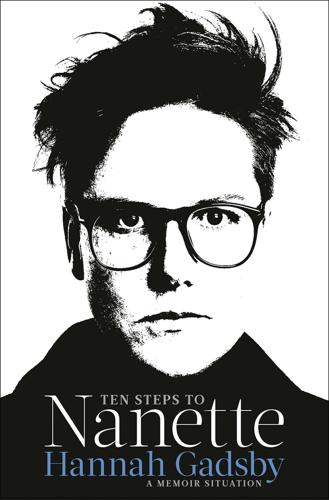
Ten Steps to Nanette: A Memoir Situation
by
Hannah Gadsby
Published 15 Mar 2022
Mum had warned me to ignore all the taunting of my siblings, but I couldn’t, and so I really only have myself to blame for making my new nickname stick so thoroughly that to this day I am known as “Godslay” or “Gods” to the rest of my family. To compound the humiliation, Stamp Explorer turned out to be every bit as boring an enterprise as you could imagine. It really is something when you can make collecting and organising objects boring to a young kid with autism spectrum disorder. But that’s exactly what Stamp Explorer managed to do. Then, to compound all that, Stamp Explorer proved as impossible as a gym membership to terminate, which meant that I was still getting their very disappointing monthly newsletters addressed to “Ms. Hanwah Godslay” by the time the bicentennial rolled around three years later.
…
I brought it up with my psychiatrist and he laughed, much in the same way the therapist had done when I brought up the sociopath thing. “No, no, no,” he said gently. “You do not have a disordered personality. You are neurobiologically atypical. Perhaps it may be helpful to find someone who specialises in autism spectrum disorders.” This was not the first time someone had given me a nudge toward ASD. My show about my ADHD diagnosis had prompted quite a lot of strangers to suggest that I should get assessed for autism. Despite the frequency of this unsolicited advice, I never entertained the possibility that I was on the autism spectrum, not even a little bit.
…
It had been a thrilling exercise, a mystery to be solved. But as soon as I had my diagnosis, the thrill of it all but disappeared, replaced by a grief that was way too big for any metaphor I can think of. I had always worked under the impression that I would eventually find my way to the starting line of normal, but after I was diagnosed with autism spectrum disorder, I saw that not only was that not true, but I most likely had a very warped sense of what normal actually was. I felt sick for weeks. For a long time, I worried that I’d been misdiagnosed. It was difficult for me to believe that I wasn’t entirely to blame for my life being such a painful struggle, because I was so used to assuming that I was a bad person.
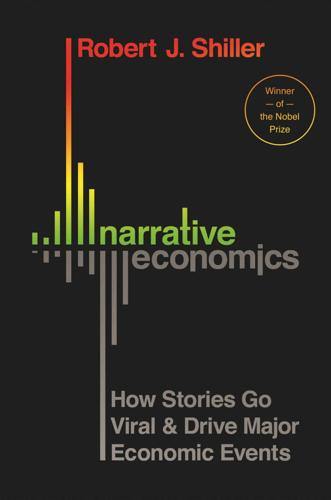
Narrative Economics: How Stories Go Viral and Drive Major Economic Events
by
Robert J. Shiller
Published 14 Oct 2019
Schizophrenia is a serious mental illness that can manifest as a disorder of narrative, as it often involves hearing imaginary voices delivering a fantastic and jumbled narrative.22 Hearing voices as a symptom of schizophrenia is correlated with volume deficits in specific brain areas.23 The narrative disruption found in autism spectrum disorder also is related to brain anomalies.24 Framing, the Representativeness Heuristic, and the Affect Heuristic Narrative psychology also relates to the psychological concept of framing.25 If we can create an amusing story that will get retold, it can establish a point of view, a reference point, that will influence decisions.
…
“Regret Theory: An Alternative Theory of Rational Choice under Uncertainty.” Economic Journal 92(368):805–24. Lorayne, Harry. 2007. Ageless Memory: The Memory Expert’s Prescription for a Razor-Sharp Mind. New York: Black Dog and Leventhal Publishers. Losh, Molly, and Peter C. Gordon. 2014. “Quantifying Narrative Ability in Autism Spectrum Disorder: A Computational Linguistic Analysis of Narrative Coherence.” Journal of Autism and Developmental Disorders 44 (12): 3016–25. Lowen, Anice C., Samira Mubareka, John Steel, and Peter Palese. 2007. “Influenza Virus Transmission Is Dependent on Relative Humidity and Temperature.” PLOS Pathogens, https://doi.org/10.1371/journal.ppat.0030151.
…
See also boycott narrative anger at oil crisis of 1970s, 256 animal spirits: business confidence and, xvi; Keynes’s idea of, 138 Animal Spirits (Akerlof and Shiller), 64 Anthropology: creation myths in, 15; economists learning from, 78 Apple Computer: Siri and, 8, 206–7, 287; Steve Jobs and, 208–9 Arab oil embargo of 1973, 256 archetypes, Jungian, 15 ARIMA (autoregressive integrated moving average) models, 295, 322n9 Aristotle, 174–75 Arkright, Frank, 193 Arkwright, Richard, 193 artificial intelligence, in narrative economics research, 276, 287 artificial intelligence narrative, 196, 197f, 199, 211. See also robots Atari, 203 Atlas Shrugged (Rand), 50 autism spectrum disorder, narrative disruption in, 66 Automata (Hero of Alexandria), 175 automated assistants, 8. See also Siri (Apple) automation narrative: difference from labor-saving machinery narrative, 199; as epidemic around 1955–66, 199–202; mutated in recessions of early 1980s, 204; with new catchphrases in 2000s, 205; offices and, 204; percentage of articles containing automation, 197f; post–World War II, 196; robots and, 191; second scare during 1980s, 202–4; surge in fears beginning around 2016, 206–8; third spike in concern around 1995, 204–5; unemployment and, 199–200, 204.
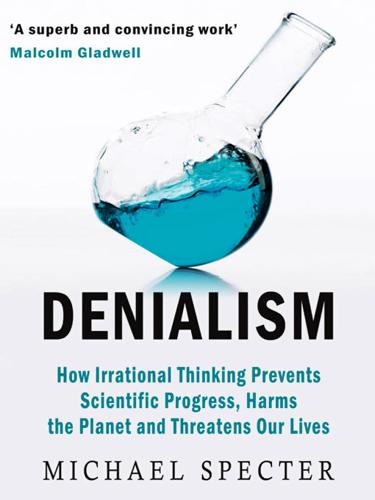
Denialism: How Irrational Thinking Hinders Scientific Progress, Harms the Planet, and Threatens Our Lives
by
Michael Specter
Published 14 Apr 2009
In fact, it makes no more sense to talk about “curing” autism than it does to discuss a cure for cancer; “cancer” is an umbrella term for many diseases characterized by malignant growth. A successful treatment for leukemia won’t stop the spread of melanoma. Effective treatments for autism will require a fuller understanding of how those developmental disorders differ—but they can differ widely. Autism spectrum disorders vary in severity from mild conditions like Asperger’s syndrome to those characterized by sustained impairments in social interaction and communication abilities. When “experts,” often with degrees or licenses that seem impressive, suddenly emerge to tell heartbroken family members that there is a simple solution to their problems, who wouldn’t want to believe it might be true?
…
Months later, with delays in neurologic and psychological development, Hannah was diagnosed with encephalopathy,” a syndrome characterized by altered brain function, “caused by a mitochondrial enzyme deficit,” which left her weak and often confused. Hannah’s symptoms included problems with language, communication, and behavior—all features of autism spectrum disorder. Although it is not unusual for children with cellular disorders like mitochondrial enzyme deficiencies to develop neurologic symptoms between their first and second years of life, Hannah’s parents believed that vaccines had triggered her encephalopathy. That’s why they sued the Department of Health and Human Services for compensation under the National Vaccine Injury Compensation Program.

SuperBetter: The Power of Living Gamefully
by
Jane McGonigal
Published 14 Sep 2015
Cordova et al., “Posttraumatic Growth Following Breast Cancer: A Controlled Comparison Study,” Health Psychology 20, no. 3 (2001): 176; Susan Cadell, Cheryl Regehr, and David Hemsworth, “Factors Contributing to Posttraumatic Growth: A Proposed Structural Equation Model,” American Journal of Orthopsychiatry 73, no. 3 (2003): 279–28; Mary Beth Werdel and Robert J. Wicks, Primer on Posttraumatic Growth: An Introduction and Guide (Hoboken, NJ: John Wiley and Sons, 2012); Kenneth W. Phelps et al., “Enrichment, Stress, and Growth from Parenting an Individual with an Autism Spectrum Disorder,” Journal of Intellectual and Developmental Disability 34, no. 2 (2009): 133–41; Katie A. Devine et al., “Posttraumatic Growth in Young Adults Who Experienced Serious Childhood Illness: A Mixed-Methods Approach,” Journal of Clinical Psychology in Medical Settings 17, no. 4 (2010): 340–48; Stephen Joseph, What Doesn’t Kill Us Makes Us Stronger: The New Psychology of Posttraumatic Growth (New York: Basic Books, 2011); and Janelle M.
…
Daphne Bavelier et al., “Brains on Video Games,” Nature Reviews Neuroscience 12, no. 12 (2011): 763–68; J. Wainer, K. Dautenhahn, B. Robins, and F. Amirabdollahian, “A Pilot Study with a Novel Setup for Collaborative Play of the Humanoid Robot KASPAR with Children with Autism,” International Journal of Social Robotics 6, no. 1 (2014): 45–65; and Bill Ferguson et al., “Game Interventions for Autism Spectrum Disorder,” Games for Health Journal 1, no. 4 (August 2012): 248–53. 14. “Video Games Can Benefit Autistic Children: Study,” Agence France-Presse, March 7, 2014. 15. Valdesolo, Ouyang, and Desteno, “The Rhythm of Joint Action: Synchrony Promotes Cooperative Ability”; Natalie Sebanz, Harold Bekkering, and Günther Knoblich, “Joint Action: Bodies and Minds Moving Together,” Trends in Cognitive Sciences 10, no. 2 (2006): 70–76; and Lynden K.
…
Zhenhong Wang, Wei Lü, and Rongcai Qin, “Respiratory Sinus Arrhythmia Is Associated with Trait Positive Affect and Positive Emotional Expressivity,” Biological Psychology 93, no. 1 (2013): 190–96; Michelle A. Patriquin et al., “Respiratory Sinus Arrhythmia: A Marker for Positive Social Functioning and Receptive Language Skills in Children with Autism Spectrum Disorders,” Developmental Psychobiology 55, no. 2 (2013): 101–12; Christopher P. Fagundes et al., “Attachment Style and Respiratory Sinus Arrhythmia Predict Post-Treatment Quality of Life in Breast Cancer Survivors,” Psycho-Oncology 23, no. 7 (2014): 820–26; Lauren M. Bylsma et al., “Respiratory Sinus Arrhythmia Reactivity in Current and Remitted Major Depressive Disorder,” Psychosomatic Medicine 76, no. 1 (2014): 66–73; John A.

Behave: The Biology of Humans at Our Best and Worst
by
Robert M. Sapolsky
Published 1 May 2017
Caggiano et al., “Mirror Neurons Differentially Encode the Peripersonal and Extrapersonal Space of Monkeys,” Sci 324 (2009): 403. 37. V. Gallese et al., “Mirror Neurons,” Perspectives on Psych Sci 6 (2011): 369. 38. A sampling of some relevant papers: L. Oberman et al., “EEG Evidence for Mirror Neuron Dysfunction in Autism Spectrum Disorders,” Brain Res: Cog Brain Res 24 (2005): 190; M. Dapretto et al., “Understanding Emotions in Others: Mirror Neuron Dysfunction in Children with Autism Spectrum Disorders,” Nat Nsci 9 (2006): 28; I. Dinstein et al., “A Mirror Up to Nature,” Curr Biol 19 (2008): R13; A. Hamilton, “Reflecting on the Mirror Neuron System in Autism: A Systematic Review of Current Theories,” Developmental Cog Nsci 3 (2013): 91. 39.
…
Neuroimaging research shows that these neuropeptides are about social competence, as well as prosociality.36 For example, variants of a gene related to oxytocin signaling* are associated with differing degrees of activation of the fusiform face area when looking at faces. Findings like these suggest that abnormalities in these neuropeptides increase the risk of disorders of impaired sociality, namely autism spectrum disorders (ASD) (strikingly, people with ASD show blunted fusiform responses to faces).37 Remarkably, ASD has been linked to gene variants related to oxytocin and vasopressin, to nongenetic mechanisms for silencing the oxytocin receptor gene, and to lower levels of the receptor itself. Moreover, the neuropeptides improve social skills in some individuals with ASD—e.g., enhancing eye contact.
…
Glossary of Abbreviations ACC anterior cingulate cortex ACTH adrenocorticotropic hormone ADHD attention-deficit/hyperactivity disorder AIS androgen insensitivity syndrome APA American Psychological Association ASD autism spectrum disorders BDNF brain-derived neurotrophic factor BLA basolateral amygdala BMI body mass index BNST bed nucleus of the stria terminalis CAH congenital adrenal hyperplasia CBT cognitive behavioral therapy COMT catechol-O-methyltransferase CRH corticotropin-releasing hormone DAT dopamine transporter DHEA dehydroepiandrosterone dlPFC dorsolateral PFC DZ dizygotic EEA equal environment assumption EEG electroencephalographic; EEGs electroencephalograms ERPS event-related potentials fMRI functional magnetic resonance imaging FTD frontotemporal dementia GABA gamma-aminobutyric acid GnRH gonadotropin-releasing hormone GSR galvanic skin resistance GWAS genomewide association studies HG hunter-gatherer HH high-warmth/high-competence HL high warmth/low competence IAT Implicit Association Test LH low warmth/high competence LH luteinizing hormone LL low warmth/low competence LTD long-term depression LTP long-term potentiation MAO-A monoamine oxidase-A MHC major histocompatibility complex MZ monozygotic NCAM neural cell adhesion molecule PAG periaqueductal gray PD Prisoner’s Dilemma PFC prefrontal cortex PMC premotor cortex PMDD premenstrual dysphoric disorder PMS premenstrual syndrome PNS parasympathetic nervous system PTSD post-traumatic stress disorder PVN paraventricular nucleus RNA ribonucleic acid RWA right-wing authoritarianism SDO social-dominance orientation SES socioeconomic status SHRP stress hyporesponsive period SNPs single-nucleotide polymorphisms SNS sympathetic nervous system SPE Stanford Prison Experiment SSRI selective serotonin reuptake inhibitor STG superior temporal gyrus TF transcription factor TH tryptophan hydroxylase ToM Theory of Mind TPJ temporoparietal juncture TRC truth and reconciliation commission vlPFC ventrolateral prefrontal cortex vmPFC ventromedial PFC 54 Abbreviations in the Notes In order to save forests’ worth of paper, references cite only the first one or two authors.

Cheap Land Colorado: Off-Gridders at America's Edge
by
Ted Conover
Published 1 Nov 2022
GO TO NOTE REFERENCE IN TEXT Chapter 5: Ownership “an average life expectancy of forty-eight years old”: One study published in 2018 determined the life expectancy of individuals with Autism Spectrum Disorder (ASD) to be thirty-six years and found that they are forty times more likely to die of accidents than other people. Another study found that the leading causes of death for those with ASD were heart disease, suicide, and epilepsy; the suicide rate among those with ASD was said to be nine times higher than in the general population. See Michael A. Ellis, “Early Death in Those with Autism Spectrum Disorder,” Psychology Today, October 7, 2018. GO TO NOTE REFERENCE IN TEXT The county sheriff’s office: Facebook page for Costilla County Sheriff’s Office, May 3, 2019. https://www.facebook.com/profile/100064414343613/search/?
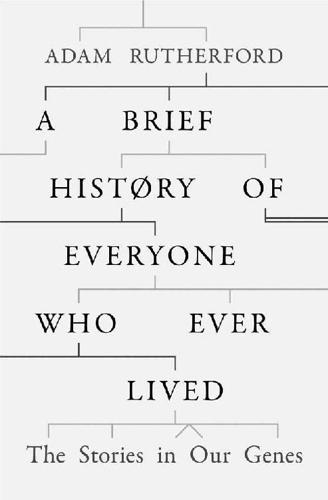
A Brief History of Everyone Who Ever Lived
by
Adam Rutherford
Published 7 Sep 2016
However, each disease is a unique interplay between the cause(s) and the patient. Some are less unique than others, but ones that involve behaviour, and psychology and psychiatry are notoriously unique. This is why we reclassify and refine disease definitions all the time. Autism is more correctly now termed autism spectrum disorder, as there is a continuous suite of characteristics that people with autism display. Some are more severe than others; some are merely different. Some of the missing heritability will be due to limitations in the GWAS approach. It only looks at common SNPs, the points of difference that we see often between people.
…
It was reported in the press that Lanza’s genome was to be sequenced to find out if his evil lay in his DNA. Was he born to murder? Adam Lanza was a profoundly disturbed boy. He was diagnosed with sensory processing disorder, a condition in which children have significant sets of difficulties in engaging in normal social behaviour, the autism-spectrum disorder Asperger’s syndrome, and obsessive-compulsive disorder. All of these conditions have genetic elements to them; none of them is caused singularly by genes. All studies so far have shown that many genes of small effect play a very small role in the diagnosis of any of them. That is a very typical statement when it comes to complex psychiatric disorders.
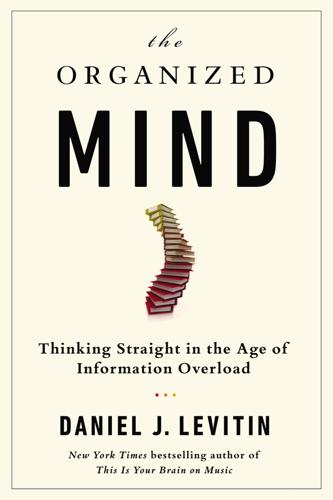
The Organized Mind: Thinking Straight in the Age of Information Overload
by
Daniel J. Levitin
Published 18 Aug 2014
There is nothing unfamiliar about these exchanges. The great contribution of Grice and Searle was that they organized the exchanges, putting them into a system whereby we can analyze and understand how they function. This all occurs at a subconscious level for most of us. Individuals with autism spectrum disorders often have difficulty with indirect speech acts because of biological differences in their brains that make it difficult for them to understand irony, pretense, sarcasm, or any nonliteral speech. Are there neurochemical correlates to getting along and keeping social bonds intact? There’s a hormone in the brain released by the back half of the pituitary gland, oxytocin, that has been called by the popular press the love hormone, because it used to be thought that oxytocin is what causes people to fall in love with each other.
…
In other words, it is clearly an evolutionary advantage for a child to have two caring, nurturing parents. If the parents feel bonded to each other through oxytocin release, they are more likely to share in the raising of their children, thus propagating their tribe. In addition to difficulty understanding any speech that isn’t literal, individuals with autism spectrum disorders don’t feel attachment to people the way others do, and they have difficulty empathizing with others. Oxytocin in individuals with autism shows up at lower than normal levels, and the administration of oxytocin causes them to become more social, and improves emotion recognition. (It also reduces their repetitive behaviors.)
…
Decreased left posterior insular activity during auditory language in autism. American Journal of Neuroradiology, 31(1), 131–139. and, Harris, G. J., Chabris, C. F., Clark, J., Urban, T., Aharon, I., Steele, S., . . . Tager-Flusberg, H. (2006). Brain activation during semantic processing in autism spectrum disorders via functional magnetic resonance imaging. Brain and Cognition, 61(1), 54–68. and, Wang, A. T., Lee, S. S., Sigman, M., & Dapretto, M. (2006). Neural basis of irony comprehension in children with autism: The role of prosody and context. Brain, 129(4), 932–943. an orgasm, oxytocin is released Blaicher, W., Gruber, D., Bieglmayer, C., Blaicher, A.
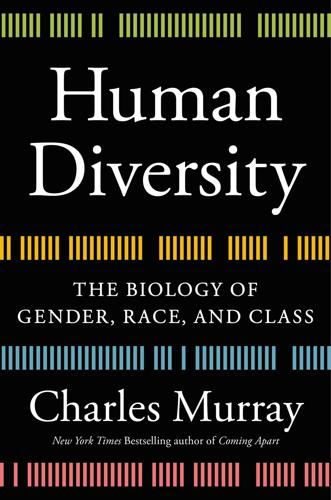
Human Diversity: The Biology of Gender, Race, and Class
by
Charles Murray
Published 28 Jan 2020
One thing is certain: Their incidence rates differ markedly across the sexes. In a 2017 review article, neuroscientist Margaret McCarthy and her colleagues summarized the sex imbalance of incidence rates in a table that I present in an abbreviated version below.1 SEX DIFFERENCES IN PERSONALITY DISORDERS Condition: Childhood onset: Autism spectrum disorder Sex with greater prevalence: Male Approximate proportion of cases: 80–90% Condition: Childhood onset: Conduct/oppositional defiance disorder Sex with greater prevalence: Male Approximate proportion of cases: 75% Condition: Childhood onset: Attention deficit hyperactivity disorder Sex with greater prevalence: Male Approximate proportion of cases: 66–75% Condition: Childhood onset: Schizophrenia Sex with greater prevalence: Male Approximate proportion of cases: 60% Condition: Childhood onset: Dyslexia and/or reading impairment Sex with greater prevalence: Male Approximate proportion of cases: 66–75% Condition: Childhood onset: Stuttering Sex with greater prevalence: Male Approximate proportion of cases: 70% Condition: Childhood onset: Tourette syndrome Sex with greater prevalence: Male Approximate proportion of cases: 75–80% Condition: Adult onset: Major depression Sex with greater prevalence: Female Approximate proportion of cases: 66% Condition: Adult onset: Bipolar II disorder* Sex with greater prevalence: Female Approximate proportion of cases: Unspecified Condition: Adult onset: Generalized anxiety Sex with greater prevalence: Female Approximate proportion of cases: 66% Condition: Adult onset: Panic disorder Sex with greater prevalence: Female Approximate proportion of cases: 70% Condition: Adult onset: Obsessive-compulsive disorder Sex with greater prevalence: Female Approximate proportion of cases: 60% Condition: Adult onset: Post-traumatic stress syndrome Sex with greater prevalence: Female Approximate proportion of cases: 66% Condition: Adult onset: Anorexia nervosa Sex with greater prevalence: Female Approximate proportion of cases: 75% Condition: Adult onset: Bulimia Sex with greater prevalence: Female Approximate proportion of cases: 75–80% Condition: Adult onset: Alcoholism or substance abuse Sex with greater prevalence: Male Approximate proportion of cases: Unspecified Source: Adapted from McCarthy, Nugent, and Lenz (2017): Table 2.
…
Blood parameters were blood metabolite levels, eosinophil percentage of white cells, granulocyte percentage of myeloid white cells, hematocrit, hemoglobin concentration, mean corpuscular volume, mean corpuscular hemoglobin, mean platelet volume, monocyte count, monocyte percentage of white cells, myeloid white cell count, platelet count, platelet distribution width, plateletcrit, red blood cell count, and white blood cell count. This list does not exhaust all the blood parameters that are associated with at least 100 unique SNPs in the GWAS Catalog as of May 2019, but they are representative of the entire inventory. Cognitive disorders (combined sample = 2,594). Cognitive disorders were autism spectrum disorder or schizophrenia, bipolar disorder, depression, depressive symptoms, major depressive disorder, neuroticism, schizophrenia, and “worry.” Mental abilities (combined sample = 5,715). Mental abilities were cognitive performance, educational attainment, general cognitive ability, highest math class taken, intelligence, and self-reported math ability.
…
Worry: Feeling worry, Worry, Worry too long after an embarrassing experience. Risk tolerance: General risk tolerance (MTAG), Risk-taking tendency (4-domain principal component model). Well-being: Eudaimonic well-being, Hedonic well-being, Subjective well-being, Subjective well-being (MTAG), Well-being spectrum (multivariate analysis). Autism: Autism, Autism spectrum disorder, Obsessive-compulsive disorder or autistic spectrum disorder, Social autistic-like traits. ADHD: Attention function, Attention function in attention deficit hyperactive disorder, Attention deficit hyperactivity disorder, Attention deficit hyperactivity disorder (combined symptoms), Attention deficit hyperactivity disorder (hyperactivity-impulsivity symptoms), Attention deficit hyperactivity disorder (inattention symptoms), Attention deficit hyperactivity disorder (time to onset), Attention deficit hyperactivity disorder and conduct disorder, Attention deficit hyperactivity disorder motor coordination, Attention deficit hyperactivity disorder symptom score, Attention deficit hyperactivity disorder (maternal expressed emotions interaction).

Asperger Syndrome and Alcohol: Drinking to Cope?
by
Matthew Tinsley
and
Sarah Hendrickx
Published 31 May 2008
Washington, DC: American Psychiatric Association. Aston, M. (2003) Asperger’s in Love. London: Jessica Kingsley Publishers. Attwood, T. (2006) The Complete Guide to Asperger’s Syndrome. London: Jessica Kingsley Publishers. Barnard, J. Harvey, V., Prior, A. and Potter, D. (2001) Ignored or Ineligible? The Reality for Adults with Autism Spectrum Disorders. London: The National Autistic Society. Berney, T. (2004) ‘Asperger Syndrome from childhood into adulthood.’ Advances in Psychiatric Treatment 10, 341–351. Conger, J.J. (1956) ‘Reinforcement theory and the dynamics of alcoholism.’ Quarterly Journal of Studies in Alcohol 12, 1–49. Department of Health (2007) Young People and Alcohol.

The Lonely Century: How Isolation Imperils Our Future
by
Noreena Hertz
Published 13 May 2020
I can turn to her anytime.’50 Indeed, hundreds of thousands of ‘Joy for All’ robotic cats and dogs, social robots specifically marketed as companions for older people, have already been sold in the US since their debut in 2016.51 And Amazon clearly sees the market potential in the West amongst the elderly for its ‘AI assistant’ products, judging by its Christmas 2019 television advertising campaign which featured a lonely elderly gentleman finding companionship in his Alexa.52 A friend to us all It is not just from the elderly that I envisage significant future demand for robot companions. For those who, for whatever reason, find standard human relationships hard to forge, robots may also play a valuable role. In fact, people with non-typical social skills – including those with extreme social anxiety and those with autism spectrum disorder – have already been shown to benefit from robot-mediated therapy and group activities.53 The robots’ predictability and the fact that they cast no social judgement are seen as key factors in soothing anxiety and helping to establish healthy social norms.54 Generation K – the generation reared alongside Furbys and Alexas – are also likely to see their appeal.
…
, New York Times, 13 December 2019, https://www.nytimes.com/2019/12/13/opinion/robot-caregiver-aging.html. 52 ‘Amazon Alexa ‘Sharing is caring’ by Joint’, Campaign US, 29 May 2019, https://www.campaignlive.com/article/amazon-alexa-sharing-caring-joint/1585979. 53 Alireza Taheri, Ali Meghdari, Minoo Alemi and Hamidreza Pouretema, ‘Human-Robot Interaction in Autism Treatment: A Case Study on Three Autistic Children as Twins, Siblings and Classmates’, International Journal of Social Robotics 10 (2018), 93–113, https://doi.org/10.1007/s12369-017-0433-8; Hideki Kozima, Cocoro Nakagawa and Yuiko Yasuda, ‘Children-robot interaction: a pilot study in autism therapy’, Progress in Brain Research 164 (2007), 385–400, https://doi.org/10.1016/S0079-6123(07)64021-7; H. Kumuzaki et al., ‘The impact of robotic intervention on joint attention in children with autism spectrum disorders’, Molecular Autism 9, no. 46 (2018), https://doi.org/10.1186/s13229-018-0230-8. 54 Alyssa M. Alcorn, Eloise Ainger et al., ‘Educators’ Views on Using Humanoid Robots With Autistic Learners in Special Education Settings in England’, Frontiers in Robotics and AI 6, no. 107 (November 2019), https://doi.org/10.3389/frobt.2019.00107. 55 Victoria Waldersee, ‘One in five young Brits can imagine being friends with a robot’, YouGov, 1 November 2018, https://yougov.co.uk/topics/technology/articles-reports/2018/11/01/one-five-young-brits-can-imagine-being-friends-rob; original data at ‘Internal Robots and You’, YouGov, 2018, https://d25d2506sfb94s.cloudfront.net/cumulus_uploads/document/0pta4dnee1/YG-Archive-RobotsAndYouInternal-220818.pdf. 56 Elizabeth Foster, ‘Young kids use smart speakers daily’, Kidscreen, 28 March 2019, https://kidscreen.com/2019/03/28/young-kids-use-smart-speakers-daily-survey/. 57 Jacqueline M.

Doppelganger: A Trip Into the Mirror World
by
Naomi Klein
Published 11 Sep 2023
billions spent on autism research: “Research Funding for Autism in the United States from 2008 to 2023,” Statista, September 8, 2022. 1 in every 44 … 1 in 150: “Community Report on Autism 2021,” Autism and Developmental Disabilities Monitoring Network, Centers for Disease Control and Prevention; “Prevalence of Autism Spectrum Disorders,” Autism and Developmental Disabilities Monitoring Network, Centers for Disease Control and Prevention, March 30, 2012. the clinical definition of autism expanded: Lorna Wing, The Autistic Spectrum, new updated ed. (London: Constable & Robinson, 2002), 23. many more people deciding to get tested: Steve Silberman, Neurotribes: The Legacy of Autism and the Future of Neurodiversity (New York: Penguin Random House, 2015), 41–43, 421.
…
Petrides, and William Mandy, “The Female Autism Phenotype and Camouflaging: A Narrative Review,” Review Journal of Autism and Developmental Disorders 7, no. 4 (2020): 306–317; Terra Vance, “What’s in a Word: Autism and White Privilege,” Neuroclastic: The Autism Spectrum According to Autistic People, June 2, 2019; David S. Mandell et al., “Race Differences in the Age at Diagnosis Among Medicaid-Eligible Children with Autism,” Journal of the American Academy of Child & Adolescent Psychiatry 41, no. 12 (2002): 1447–1453. children born to older parents: Kristen Lyall et al., “The Changing Epidemiology of Autism Spectrum Disorders,” Annual Review of Public Health 38, no. 1 (2017): 81–102. “anti-vax capital” … 66.8 percent of one-year-olds … diphtheria: Ben Smee, “When Covid Came to the Anti-Vax Capital of Australia,” The Guardian, August 13, 2021; “Children Fully Immunised in NSW by Local Government Area 2020–21,” NSW Government Health, updated September 3, 2021; Jennifer King, “Now Diphtheria: Is Northern NSW Incubating Another Australian Health Crisis?
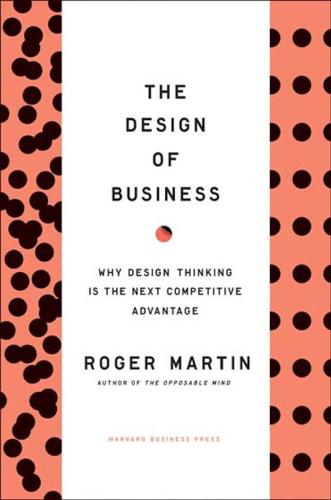
Design of Business: Why Design Thinking Is the Next Competitive Advantage
by
Roger L. Martin
Published 15 Feb 2009
CHAPTER 2 The Reliability Bias Why Advancing Knowledge Is So Hard IN THE SPRING of 2008, I met an enthusiastic and gregarious geneticist named Stephen Scherer, from Toronto’s world-renowned Hospital for Sick Children. Dr. Scherer, it turns out, is one of world’s leading researchers into autism, or to be more precise, into autism spectrum disorder (ASD). The study of autism is a relatively young field, with a body of research going back only seventy years or so. The somewhat scattered nature of the research is representative of the challenges faced by the investigators of any mystery. With a mystery, it is difficult to know where to start.

On the Edge: The Art of Risking Everything
by
Nate Silver
Published 12 Aug 2024
By contrast, the prevalence in the general U.S. adult population is about 2 percent, according to the CDC. “CDC Releases First Estimates of the Number of Adults Living with ASD,” Centers for Disease Control and Prevention, April 27, 2020, cdc.gov/ncbddd/autism/features/adults-living-with-autism-spectrum-disorder.html. GO TO NOTE REFERENCE IN TEXT based on post-facto diagnoses: Michael Fitzgerald, “John von Neumann was on the autism spectrum,” ResearchGate, researchgate.net/publication/369141516_John_von_Neumann_was_on_the_autism_spectrum. GO TO NOTE REFERENCE IN TEXT classification scheme DSM-5: “What Is Asperger Syndrome?
…
,” Autism Speaks, autismspeaks.org/types-autism-what-asperger-syndrome. GO TO NOTE REFERENCE IN TEXT moderately correlated personality: Lars-Olov Lundqvist and Helen Lindner, “Is the Autism-Spectrum Quotient a Valid Measure of Traits Associated with the Autism Spectrum? A Rasch Validation in Adults with and Without Autism Spectrum Disorders,” Journal of Autism and Developmental Disorders 47, no. 7 (July 2017): 2080–91, doi.org/10.1007/s10803-017-3128-y. GO TO NOTE REFERENCE IN TEXT The Autism-Spectrum Quotient: Simon Baron-Cohen et al., “The Autism-Spectrum Quotient (AQ): Evidence from Asperger Syndrome/High-Functioning Autism, Males and Females, Scientists and Mathematicians,” Journal of Autism and Developmental Disorders 31, no. 1 (2001): 5–17, doi.org/10.1023/A:1005653411471.
…
GO TO NOTE REFERENCE IN TEXT nerdy, overconfident, Adderall-popping: William Skipworth, “SBF’s Lawyers Are Asking the Judge for More Adderall,” Forbes, October 16, 2023, forbes.com/sites/willskipworth/2023/10/16/sbfs-lawyers-are-asking-the-judge-for-more-adderall. GO TO NOTE REFERENCE IN TEXT on the autism spectrum: SBF’s lawyers asked for a shorter prison sentence due to what they said was his autism spectrum disorder. Wall Street Journal, wsj.com/finance/currencies/sam-bankman-fried-suggests-shorter-sentence-for-fraud-conviction-citing-autism-e8481876. GO TO NOTE REFERENCE IN TEXT Bitcoin had achieved: “Bitcoin Price Today, BTC to USD Live Price, Marketcap and Chart,” CoinMarketCap, coinmarketcap.com/currencies/bitcoin/historical-data.
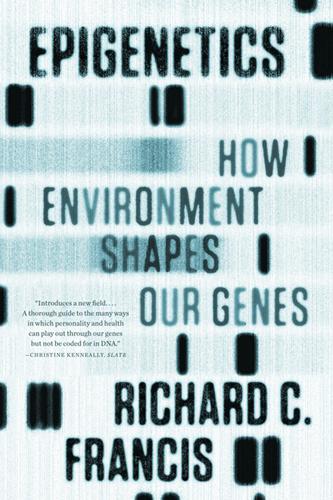
Epigenetics: How Environment Shapes Our Genes
by
Richard C. Francis
Published 14 May 2012
Environ Health Perspect 114(Suppl 1): 32–39. Johnsen, H., K. Malene Krag, et al. (2009). “Cancer stem cells and the cellular hierarchy in haematological malignancies.” Eur J Cancer 45: 194–201. Jones, J. R., C. Skinner, et al. (2008). “Hypothesis: Dysregulation of methylation of brain-expressed genes on the X chromosome and autism spectrum disorders.” Am J Med Genet A 146A(17): 2213–2220. Jones, P. A., and S. B. Baylin (2007). “The epigenomics of cancer.” Cell 128(4): 683–692. Jordan, G., and J. D. Mollon (1993). “A study of women heterozygous for colour deficiencies.” Vision Res 33(11): 1495–1508. Jorgensen, A. L., J. Philip, et al. (1992).
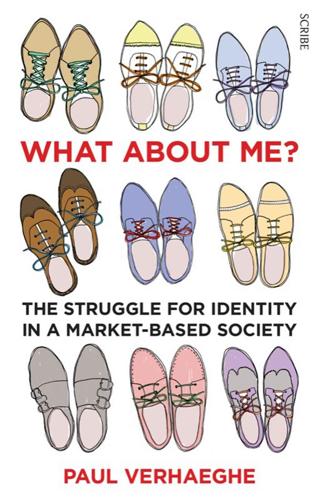
What About Me?: The Struggle for Identity in a Market-Based Society
by
Paul Verhaeghe
Published 26 Mar 2014
Current psychodiagnostics presents a picture of the various forms of failure, and the diagnostic business is increasingly coming to resemble a pseudo-scientific Rank and Yank system. I have already discussed its most distressing application, to children. Nearly all juvenile disorders these days have to do with failure at school. That stands to reason in the case of learning disorders, but it also applies to ADHD, CD (conduct disorder), ASD (autism-spectrum disorders), ODD (oppositional defiant disorder), and performance anxiety. These diagnoses form the other side of the coin to high-pitched social expectations, with the result that there are now only two kinds of pupils in schools: gifted children, and children with disorders. ‘Ordinary’ children are becoming an endangered species, and the old notion of average being normal is now taboo.
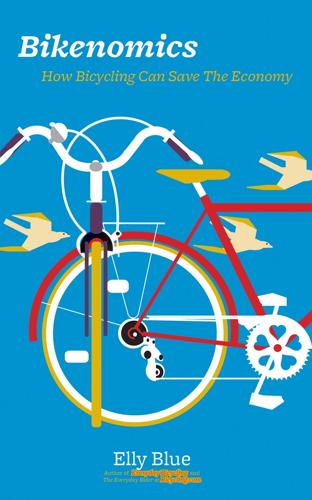
Bikenomics: How Bicycling Can Save the Economy (Bicycle)
by
Elly Blue
Published 29 Nov 2014
Behrentz, “Vehicle self-pollution intake fraction: Children’s exposure to school bus emissions,” Environmental Science and Technology.2005 77 The bulk of the research in this section comes from the American Lung Association’s report on disparities in the impact of air pollution at stateoftheair.org (accessed July 18, 2013) 78 Roberts, A., et al., ““Perinatal air pollutant exposures and autism spectrum disorder in the children of Nurses’ Health Study II participants,” Environmental Health Perspectives, online June 18, 2013 79 Hotz, R., “The Hidden Toll of Traffic Jams,” Wall Street Journal. November 8, 2011 80 Appatova, A., et al., in Pedroso, M., “Safe Routes to School: Steps to a Greener Future.” 2008 81 Williams-Derry, C., “Increases in greenhouse-gas emissions from highway-widening projects,” Sightline Institute.
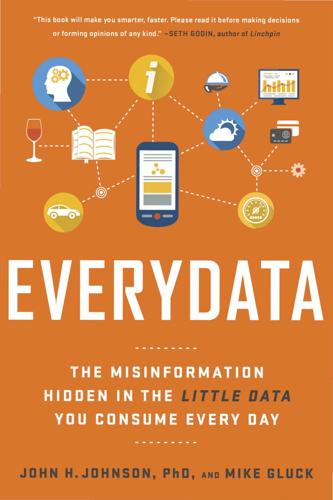
Everydata: The Misinformation Hidden in the Little Data You Consume Every Day
by
John H. Johnson
Published 27 Apr 2016
Maybe you heard celebrity mom Jenny McCarthy talk about parents who say their baby got a fever, stopped speaking, and became autistic after being vaccinated.34 That’s a correlation—not causation. So why do one-third of parents surveyed believe that vaccinations can cause autism?35 The journal article widely credited with establishing a link has been retracted.36 A study of more than 95,000 kids found that “receipt of the MMR vaccine was not associated with increased risk” of autism spectrum disorders.37 But what would you do if your child suddenly became withdrawn and stopped talking after she received her measles shot? Wouldn’t you wonder if there was a connection? Wouldn’t you want to know why your child was now on the autism spectrum? We think you should vaccinate your kids. The science has been clear in dispelling any causal relationship between the MMR vaccine and autism.
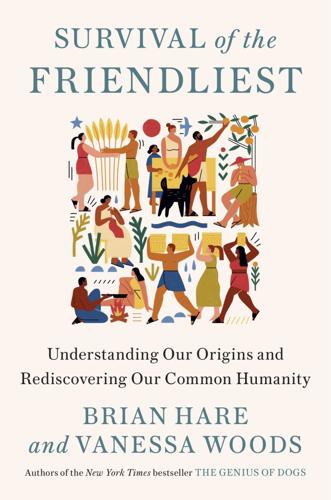
Survival of the Friendliest: Understanding Our Origins and Rediscovering Our Common Humanity
by
Brian Hare
and
Vanessa Woods
Published 13 Jul 2020
Moore, “Social Cognition, Joint Attention, and Communicative Competence from 9 to 15 Months of Age,” Monographs of the Society for Research in Child Development 63, i-174 (1998), 10:2307/1166214. 66. Michael Tomasello, Constructing a Language (Cambridge, MA: Harvard University Press, 2009). 67. N. L. Segal, A. T. Goetz, A. C. Maldonado, “Preferences for Visible White Sclera in Adults, Children, and Autism Spectrum Disorder Children: Implications of the Cooperative Eye Hypothesis,” Evolution and Human Behavior 37, 35–39 (2016). 68. M. Tomasello, B. Hare, H. Lehmann, J. Call, “Reliance on Head Versus Eyes in the Gaze Following of Great Apes and Human Infants: The Cooperative Eye Hypothesis,” Journal of Human Evolution 52, 314–20 (2007). 69.
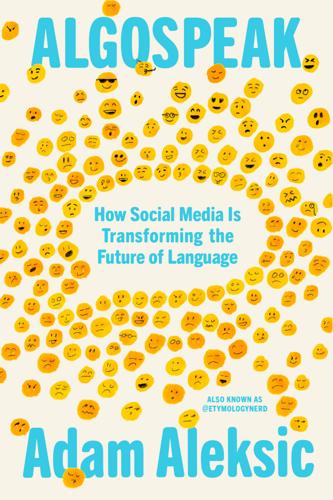
Algospeak: How Social Media Is Transforming the Future of Language
by
Adam Aleksic
Published 15 Jul 2025
A 2023 report published by the National Council on Severe Autism highlighted TikTok’s unique ability to spread reductive or inaccurate self-diagnosis information through algorithmic recommendations.[4] One video with more than a million views claims that “stirring your ice cream into a creamy texture” is a sign of autism, and thousands of similar videos urge people to self-diagnose themselves with autism spectrum disorder. While there is nothing wrong with self-diagnosis, many people who do self-diagnose on TikTok do so through incorrect or simplistic information on what autism actually is. This leads to more people feeling adjacent to the in-group and gives in-group words more opportunities to spread. Meanwhile, people with severe autism end up suffering the consequences of in-group words like “acoustic” and “neurospicy” suddenly being repurposed to insult them.

Home Grown: How Domestic Violence Turns Men Into Terrorists
by
Joan Smith
Published 5 Apr 2019
Bizarrely, Roof claimed that the Martin case had alerted him to the existence of what he called ‘black-on-white crime’, which in turn led him to discover white-supremacist sites. Roof pleaded guilty to nine counts of murder and resisted attempts by defence lawyers to argue that he was suffering from any form of mental impairment. A psychiatric evaluation commissioned by the defence suggested he had autism spectrum disorder, anxiety, depression, paranoia and a long-standing preoccupation with racism. It said he had operated in isolation, not discussing his racist ideas with anyone but searching online for phrases such as ‘Aryan Brotherhood’ as far back as 2008. Roof angrily rejected the evaluation, insisting that a state psychiatrist had said there was nothing wrong with him.
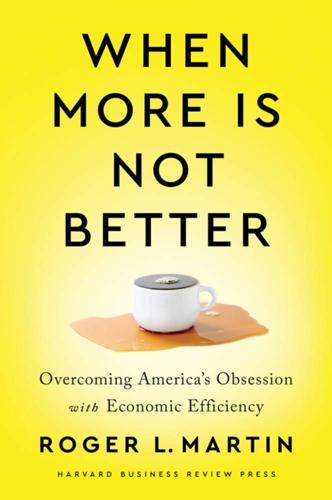
When More Is Not Better: Overcoming America's Obsession With Economic Efficiency
by
Roger L. Martin
Published 28 Sep 2020
But it is not unrealistic to ask designers of systems to pay close attention to unexpected effects when they show themselves, rather than ignore them because they don’t fit the model. I learned an important lesson in this when I studied what helped Dr. Stephen Scherer become one of the world’s preeminent researchers of autism spectrum disorder and genomics. For Scherer, anomalies are a treasure trove: “My belief is that answers to really difficult problems can often be found in the data points that don’t seem to fit existing frameworks. To me, those little variations are like signposts saying: Don’t ignore me!” He believes that all of his research successes stem from paying attention to “the data that everybody else was throwing away.”13 While Dr.

Elon Musk
by
Walter Isaacson
Published 11 Sep 2023
As he poked around amid the wires and cables, Musk glanced at him occasionally, but refrained from intervening. Finally, after X started to climb on a moving spotlight, Musk walked over and picked him up. X squirmed and squealed, unhappy about being restrained. * * * Musk would later talk about—even joke about—having Asperger’s, a common name for a form of autism-spectrum disorder that can affect a person’s social skills, relationships, emotional connectivity, and self-regulation. “He was never actually diagnosed as a kid,” his mother says, “but he says he has Asperger’s, and I’m sure he’s right.” The condition was exacerbated by his childhood traumas. Whenever he would later feel bullied or threatened, his close friend Antonio Gracias says, the PTSD from his childhood would hijack his limbic system, the part of the brain that controls emotional responses.
…
She spent three weeks considering it before concluding that SpaceX had the potential to transform the sclerotic rocket industry into something that was innovative. “I’ve been a fucking idiot,” she told him. “I’ll take the job.” She became the company’s seventh employee. Shotwell has a special insight that helps her when dealing with Musk. Her husband has the autism-spectrum disorder commonly called Asperger’s. “People like Elon with Asperger’s don’t take social cues and don’t naturally think about the impact of what they say on other people,” she says. “Elon understands personalities very well, but as a study, not as an emotion.” Asperger’s can make a person seem to lack empathy.
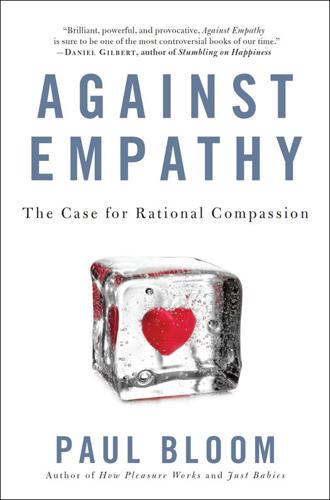
Against Empathy: The Case for Rational Compassion
by
Paul Bloom
Lynam, and Jarrod A. Johnson, “The (Non) Relation Between Empathy and Aggression: Surprising Results from a Meta-Analysis,” Psychological Bulletin 140 (2014): 751–73. People with Asperger’s syndrome Ruth C. M. Philip et al., “A Systematic Review and Meta-Analysis of the fMRI Investigation of Autism Spectrum Disorders,” Neuroscience and Biobehavioral Reviews 36 (2012): 901–42. See also Simon Baron-Cohen, The Science of Evil: On Empathy and the Origins of Cruelty (New York: Basic Books, 2012). Baron-Cohen points out Baron-Cohen, Science of Evil. 202 Some of the most interesting Smith, Less Than Human.
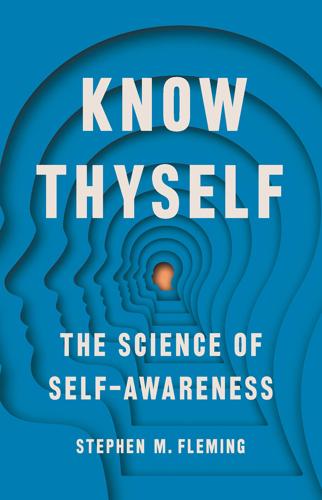
Know Thyself
by
Stephen M Fleming
Published 27 Apr 2021
“Comparison of Human Ventral Frontal Cortex Areas for Cognitive Control and Language with Areas in Monkey Frontal Cortex.” Neuron 81, no. 3 (2014): 700–713. Nicholson, Toby, David M. Williams, Catherine Grainger, Sophie E. Lind, and Peter Carruthers. “Relationships Between Implicit and Explicit Uncertainty Monitoring and Mindreading: Evidence from Autism Spectrum Disorder.” Consciousness and Cognition 70 (2019): 11–24. Nicholson, Toby, David M. Williams, Sophie E. Lind, Catherine Grainger, and Peter Carruthers. “Linking Metacognition and Mindreading: Evidence from Autism and Dual-Task Investigations.” Journal of Experimental Psychology: General, September 10, 2020 (epub ahead of print).
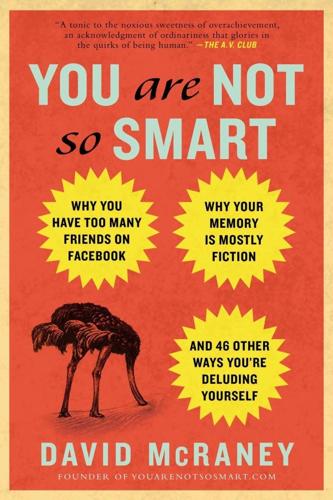
You Are Not So Smart
by
David McRaney
Published 20 Sep 2011
Sometimes you need a bad guy, and the Texas sharpshooter fallacy is one way you can create one. According to the Centers for Disease Control the number of autism cases among eight-year-olds increased 57 percent from 2002 to the 2006. Looking back over the last twenty years, the rate of autism has gone up 200 percent. Today, one in seventy male children has some form of autism spectrum disorder. It seemed absolutely nuts when those numbers were first released. Parents around the world panicked. Something must be causing autism numbers to rise, right? Early on, a bull’s-eye was painted around vaccines because symptoms seemed to show up about the same time as kids were getting vaccinated.
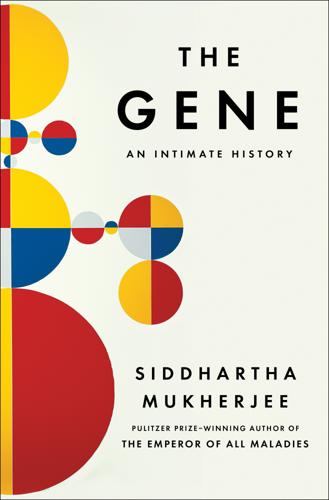
The Gene: An Intimate History
by
Siddhartha Mukherjee
Published 16 May 2016
This method—of comparing the genome of a child with the sporadic or de novo variant of a disease versus the genome of his or her parents—was pioneered by autism researchers in the 2000s, and radically advanced the field of psychiatric genetics. The Simons Simplex Collection identified 2,800 families in which parents were not autistic, but only one child was born with an autism spectrum disorder. Comparison of the parental genome to the child’s genome revealed several de novo mutations found in such children. Notably, several genes mutated in autism are also found to be mutated in schizophrenia, raising the possibility of deeper genetic links between the two diseases. IV. The strongest, and most intriguing, gene linked to schizophrenia is a gene associated with the immune system.
…
Bainbridge et al., “Whole-genome sequencing for optimized patient management,” Science Translational Medicine 3, no. 87 (2011): 87re3. That a mutation in the gene MECP2: Antonio M. Persico and Valerio Napolioni, “Autism genetics,” Behavioural Brain Research 251 (2013): 95–112; and Guillaume Huguet, Elodie Ey, and Thomas Bourgeron, “The genetic landscapes of autism spectrum disorders,” Annual Review of Genomics and Human Genetics 14 (2013): 191–213. the eventual effects of these gene-environment: Albert H. C. Wong, Irving I. Gottesman, and Arturas Petronis, “Phenotypic differences in genetically identical organisms: The epigenetic perspective,” Human Molecular Genetics 14, suppl. 1 (2005): R11–R18.

Thinking in Pictures: And Other Reports From My Life With Autism
by
Temple Grandin
Published 10 Jan 2006
Rogers S. J. S. Hepburn, E. Wehner 2003 Parent reports of sensory symptoms in toddlers with autism and those with other developmental disorders, Journal of Autism and Developmental Disorders, 33: 631–642. O. Sacks 1993 To see and not to see. New Yorker, 59–73. May 10, C. Sicile-Kira 2004 Autism Spectrum Disorders. New York., Perigree Books J. Sinclair 1992 Bridging the gaps on inside view of autism. In. (eds.), E. Schopler Mesibov G. B.. High-functioning individuals with autism. New York, Plenum, 294–302. A. Stehli 1991 Sound of a miracle. New York., Doubleday Tanquay P. E. Edwards R. M. 1991 Sound of a miracle.

How Music Got Free: The End of an Industry, the Turn of the Century, and the Patient Zero of Piracy
by
Stephen Witt
Published 15 Jun 2015
He wore his hair long and his eyebrows thick, his voice came fast and nasal, and he had the hard-geek habit of nervously chuckling at things that weren’t really funny, like the inefficiencies of standard Internet packet switching, or the believability of reported file transfer download speeds. His laugh was startling and staccato, and always felt forced, and when he talked he bounced in his seat and didn’t meet your eyes. These were classic symptoms of Asperger’s syndrome, an autism spectrum disorder that Cohen claimed to have—although, he admitted, this wasn’t a professional diagnosis, merely one he’d assigned to himself. Cohen’s position at MojoNation had given him an intimate look at the mechanics of file-sharing, and what he saw there was appalling. Let’s say you wanted to download an mp3 of the “Thong Song” off a classic peer-to-peer site.

Mindwise: Why We Misunderstand What Others Think, Believe, Feel, and Want
by
Nicholas Epley
Published 11 Feb 2014
Andrzejewski, and K. M. Hill (2012). The effectiveness of training to improve person perception: A meta-analysis. Basic and Applied Social Psychology 34: 483–98. 6. Lopata, C., et al. (2008). Effectiveness of a manualized summer social treatment program for high-functioning children with autism spectrum disorders. Journal of Autism and Developmental Disorders 38: 890–904; McKenzie, K., et al. (2000). Impact of group training on emotion recognition in individuals with a learning disability. British Journal of Learning Disabilities 28: 143–47; Moffatt, C. W., C. Hanley-Maxwell, and A. M. Donnellan (1995).
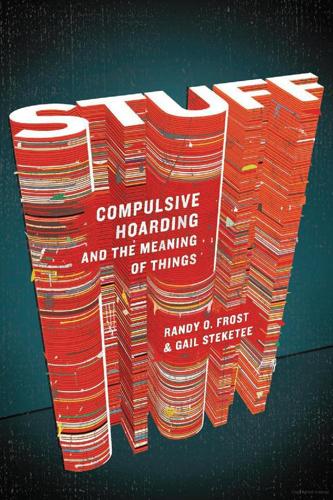
Stuff: Compulsive Hoarding and the Meaning of Things
by
Gail Steketee
and
Randy Frost
Published 19 Apr 2010
Hoarding occurs in more than 50 percent of children with Prader-Willi syndrome, a genetic condition associated with the absence of paternal contribution to chromosome 15. Prader-Willi patients typically suffer from mild mental retardation and problems with satiety, resulting in obesity. A high frequency of hoarding in children with autism spectrum disorders has also been reported. Among the cases we reviewed here, only James may have had a mild form of autism. Whether the causes of hoarding are the same for children with developmental disabilities as for those without such problems remains to be seen. Foster care workers have long been aware of hoarding in the children they serve, but no studies have been done to document hoarding among foster children.
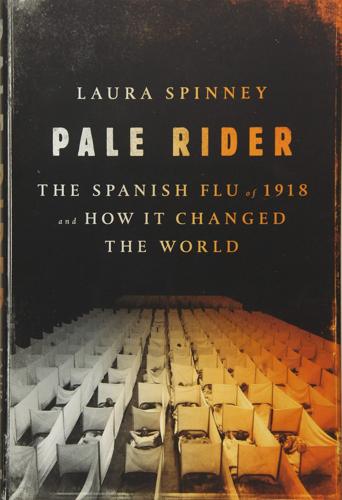
Pale Rider: The Spanish Flu of 1918 and How It Changed the World
by
Laura Spinney
Published 31 May 2017
Understanding that helps us to make sense of the extraordinary variability in its manifestation, that people found so baffling in 1918. They couldn’t see beyond the surface phenomena; now we’re able to look ‘beneath the bonnet’. (One day, science might help us to explain diseases that mystify us today for the same reason, such as autism spectrum disorder.) The revision in how we think about flu seems radical, but perhaps it isn’t as radical as all that. While observing sick silkworms in the nineteenth century, Louis Pasteur made two observations: first, that la flacherie, as the worms’ disease was called (literally, ‘flaccidity’–caused by eating contaminated mulberry leaves, it gave them debilitating diarrhoea) was infectious; and second, that offspring could inherit it from their parents.
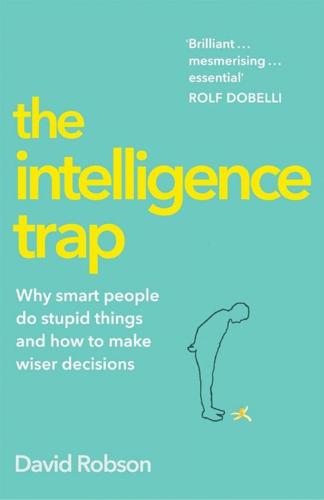
The Intelligence Trap: Revolutionise Your Thinking and Make Wiser Decisions
by
David Robson
Published 7 Mar 2019
Available at https://skepticalscience.com/docs/Debunking_Handbook.pdf. 21 NHS Choices, ‘10 Myths about the Flu and Flu Vaccine’, https://www.nhs.uk/Livewell/winterhealth/Pages/Flu-myths.aspx. 22 Smith, I.M. and MacDonald, N.E. (2017), ‘Countering Evidence Denial and the Promotion of Pseudoscience in Autism Spectrum Disorder’, Autism Research, 10(8), 1334?7. 23 Pennycook, G., Cheyne, J.A., Koehler, D.J., et al. (2016), ‘Is the Cognitive Reflection Test a Measure of Both Reflection and Intuition?’ Behavior Research Methods, 48(1), 341?8. 24 Pennycook, G. (2014), ‘Evidence That Analytic Cognitive Style Influences Religious Belief: Comment on Razmyar and Reeve (2013)’, Intelligence, 43, 21?

Calling Bullshit: The Art of Scepticism in a Data-Driven World
by
Jevin D. West
and
Carl T. Bergstrom
Published 3 Aug 2020
July 13, 2009. https://www.theatlantic.com/daily-dish/archive/2009/07/daily-chart-tax-the-rich-to-pay-for-health-care/198869/. Clinton, Hillary (@hillaryclinton). Instagram, April 12, 2016. http://www.instagram.com/p/BEHAc8vEPjV/. Deisher, T. A., N. V. Doan, K. Koyama, and S. Bwabye. “Epidemiologic and Molecular Relationship between Vaccine Manufacture and Autism Spectrum Disorder Prevalence.” Issues in Law and Medicine 30 (2015): 47–70. Donahoo, Daniel. “The Periodic Table of Periodic Tables.” Wired. March 29, 2010. https://www.wired.com/2010/03/the-periodic-table-of-periodic-tables/. Engel, Pamela. “This Chart Shows an Alarming Rise in Florida Gun Deaths After ‘Stand Your Ground’ Was Enacted.”
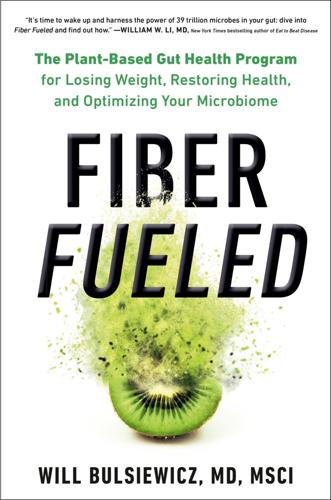
Fiber Fueled: The Plant-Based Gut Health Program for Losing Weight, Restoring Your Health, and Optimizing Your Microbiome
by
Will Bulsiewicz
Published 15 Dec 2020
NEUROPSYCHIATRIC CONDITIONS ASSOCIATED WITH DYSBIOSIS Alzheimer’s disease Parkinson’s disease Schizophrenia ADHD Amyotrophic lateral sclerosis Chronic fatigue syndrome Restless legs syndrome Anxiety Depression Autism spectrum disorders Bipolar disorder Migraine headaches Fibromyalgia Hepatic encephalopathy How the genetic game was turned on its head by microbes Since 1953 when Professors James Watson and Francis Crick described the structure of DNA, it seemed that genetics held the keys to understanding human health and disease.
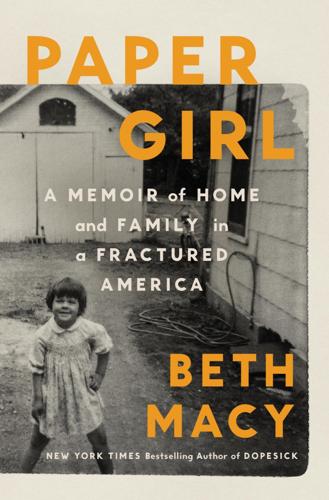
Paper Girl: A Memoir of Home and Family in a Fractured America
by
Beth Macy
Published 6 Oct 2025
Down the row from Mrs. Flowers at the county fair, the Urbana Youth Center program director, Natalie Yoder, was trying to recruit kids for the center’s after-school tutoring, GED, and life skills programs. She loved touting her most recent grad, the one she’d most closely mentored. A young woman with autism spectrum disorder, Grace Slagle had been so beaten down when they met that she typically spent entire school days with her head slumped on her desk. Outside school, Grace escaped into fantasy novels at the youth center and drew made-up creatures on her laptop. Before Grace dropped out of UHS, joining the one in five Urbana students who don’t graduate in four years, she was living with her parents in a cheap motel in Springfield, along with multiple siblings, dogs, and cats.
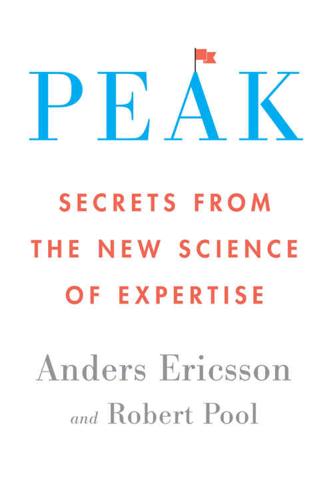
Peak: Secrets From the New Science of Expertise
by
Anders Ericsson
and
Robert Pool
Published 4 Apr 2016
In The Exceptional Brain: Neuropsychology of Talent and Special Abilities, ed. Loraine K. Obler and Deborah Fein (New York: Guilford, 1988), 436–473. [>] More recent case studies: See, for example, G. L. Wallace, F. Happé, and J. N. Giedd, “A case study of a multiply talented savant with an autism spectrum disorder: Neuropsychological functioning and brain morphometry,” Philosophical Transactions of the Royal Society of London Series B, Biological Sciences 364 (2009): 1425–1432; and Richard Cowan and Chris Frith, “Do calendrical savants use calculation to answer date questions? A functional magnetic resonance imaging study,” Philosophical Transactions of the Royal Society of London Series B, Biological Sciences 364 (2009): 1417–1424. [>] adults believe they can’t sing: Lola L.

Brotopia: Breaking Up the Boys' Club of Silicon Valley
by
Emily Chang
Published 6 Feb 2018
Alegria et al., “Sex Difference in Antisocial Personality Disorder: Results from the National Epidemiological Survey on Alcohol and Related Conditions,” Personality Disorders: Theory, Research, and Treatment 4, no. 3 (2013): 214–22, https://doi.org/10.1037/a0031681. And many more boys: Alycia K. Halladay et al., “Sex and Gender Differences in Autism Spectrum Disorder: Summarizing Evidence Gaps and Identifying Emerging Areas of Priority,” Molecular Autism 6, no. 36 (2015), https://doi.org/10.1186/s13229-015-0019-y. “often egocentric, slightly neurotic”: Nathan Ensmenger, “‘Beards, Sandals, and Other Signs of Rugged Individualism’: Masculine Culture within the Computing Professions,” Osiris 30, no. 1 (2015): 38–65, https://doi.org/10.1086/682955.
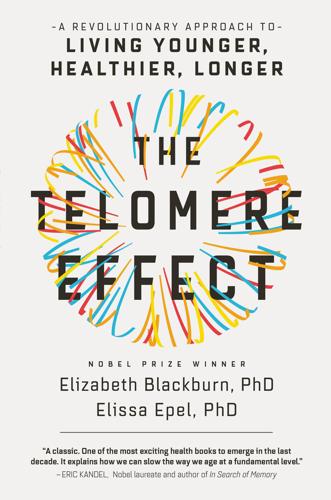
The Telomere Effect: A Revolutionary Approach to Living Younger, Healthier, Longer
by
Dr. Elizabeth Blackburn
and
Dr. Elissa Epel
Published 3 Jan 2017
But as you’ll see in the next chapter, there’s a body of evidence showing that untreated clinical depression is extremely bad for telomeres. In short: Thought suppression is a royal road to chronic stress arousal and depression, both of which shorten your telomeres. THE ANATOMY OF A STRESSFUL DAY In a recent study, we followed mothers caring for a child with an autism spectrum disorder. We wanted to understand the emotional anatomy of their days. Not surprisingly, the caregivers woke with more dread about the day than a control group of mothers with typical children. As the day unfolded, they viewed its stressful events as more threatening. The caregiving mothers ruminated more about the stressful things that had happened.
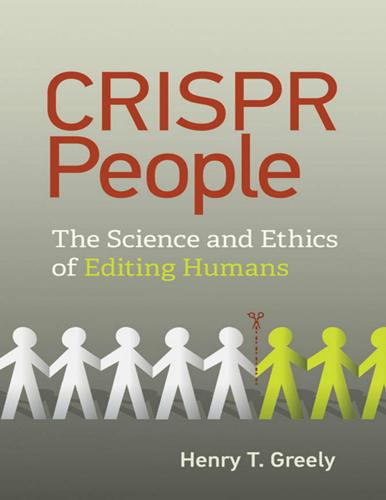
CRISPR People: The Science and Ethics of Editing Humans
by
Henry T. Greely
Published 22 Jan 2021
Food and Drug Administration, 2019, https://www.fda.gov/news-events/press-announcements/statement-fda-commissioner-scott-gottlieb-md-and-peter-marks-md-phd-director-center-biologics. 13. Daniel J. Weiner, Emilie M. Wigdor, Stephan Ripke, et al., “Polygenic Transmission Disequilibrium Confirms That Common and Rare Variation Act Additively to Create Risk for Autism Spectrum Disorders,” Nature Genetics 49, no. 7 (2017): 978–985, https://doi.org/10.1038/ng.3863. 14. “Polygenic Risk Scores,” National Human Genome Research Institute, https://www.genome.gov/Health/Genomics-and-Medicine/Polygenic-risk-scores. 15. Ute V. Solloch, Kathrin Lang, Vinzenz Lange, et al., “Frequencies of Gene Variant CCR5-Δ32 in 87 Countries Based on Next-Generation Sequencing of 1.3 Million Individuals Sampled from 3 National DKMS Donor Centers,” Human Immunology 78, no. 11–12 (2017): 710–717, https://doi.org/10.1016/j.humimm.2017.10.001. 16.
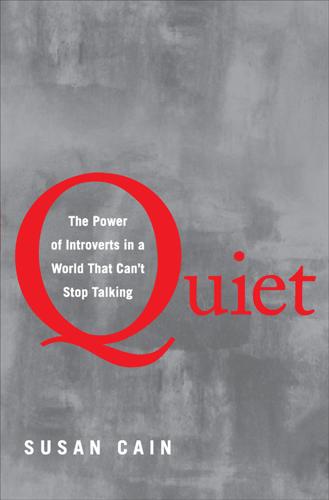
Quiet: The Power of Introverts in a World That Can't Stop Talking
by
Susan Cain
Published 24 Jan 2012
Walling, director, Marketing Communications and Product Marketing, CPP, Inc. 34. introverts and extroverts differ in the level of outside stimulation … Many have a horror of small talk: See Part Two: “Your Biology, Your Self?” 35. introvert is not a synonym for hermit: Introversion is also very different from Asperger’s syndrome, the autism spectrum disorder that involves difficulties with social interactions such as reading facial expressions and body language. Introversion and Asperger’s both can involve feeling overwhelmed in social settings. But unlike people with Asperger’s, introverts often have strong social skills. Compared with the one third to one half of Americans who are introverts, only one in five thousand people has Asperger’s.

Men Who Hate Women: From Incels to Pickup Artists, the Truth About Extreme Misogyny and How It Affects Us All
by
Laura Bates
Published 2 Sep 2020
In 2016, three self-proclaimed PUAs were jailed after a woman they targeted tracked them online and found detailed ‘lay reports’ describing her own rape on pickup websites.11 Two of the men were so-called instructors for a company called Efficient Pickup, the third was their student.12 One of the men, Jason Berlin, later had his sentence reduced by two years, after arguing that ‘a recent autism spectrum disorder diagnosis made him unaware that his actions were wrong’.13 The man, whose psychiatrist argued that he had reduced emotional and social capacity, may be symbolic of the potentially disastrous influence of extremist misogyny on vulnerable targets, but the conviction of his two ‘instructors’ is proof that, for many of the men involved in these communities, their acts of abuse are deliberate and callous.
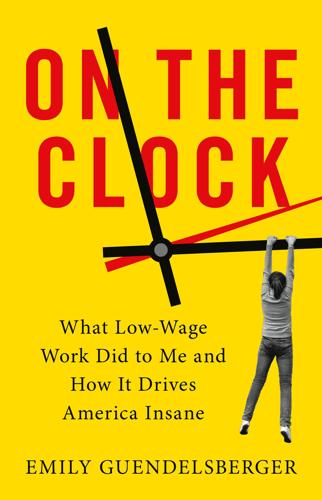
On the Clock: What Low-Wage Work Did to Me and How It Drives America Insane
by
Emily Guendelsberger
Published 15 Jul 2019
Mostly, though, she takes pride in being good at her job. Her numbers, she says, are usually double or triple what other pickers can manage. That doesn’t happen for her at every job—she actually technically qualifies for disability. “Between my Asperger’s, which is technically classified as autism spectrum disorder, and hearing loss and ADHD and PTSD—that lovely storm of me—that’s what qualified me,” Blair says. “But I just couldn’t accept a handout. I love knowing that the government had my back, but I was, like, ‘My mind might be a little special, but my body’s fine. I can physically work.’ “And I love that I’ve found a job that actually utilizes the way that I am.
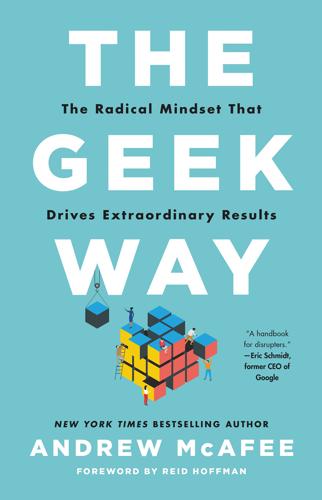
The Geek Way: The Radical Mindset That Drives Extraordinary Results
by
Andrew McAfee
Published 14 Nov 2023
Bennis, Personal and Organizational Change Through Group Methods: The Laboratory Approach (New York: Wiley, 1965). 54 men are generally more assertive than women: Scott Barry Kaufman, “Taking Sex Differences in Personality Seriously,” Scientific American, December 12, 2019, https://blogs.scientificamerican.com/beautiful-minds/taking-sex-differences-in-personality-seriously/. 55 neuroatypical people: Xin Wei, Jennifer W. Yu, Paul Shattuck, Mary McCracken, and Jose Blackorby, “Science, Technology, Engineering, and Mathematics (STEM) Participation Among College Students with an Autism Spectrum Disorder,” Journal of Autism and Developmental Disorders, vol. 43, no. 7 (2012), 1539–46, https://doi.org/10.1007/s10803-012-1700-z. 56 eighty thousand improvements and bug fixes: Noam Cohen, “After Years of Abusive E-mails, the Creator of Linux Steps Aside,” The New Yorker, September 19, 2018, www.newyorker.com/science/elements/after-years-of-abusive-e-mails-the-creator-of-linux-steps-aside. 57 “Just kill yourself now”: Jon Gold, “Torvalds to Bad Security Devs: ‘Kill Yourself Now,’” Network World, March 8, 2012, www.networkworld.com/article/2186639/torvalds-to-bad-security-devs---kill-yourself-now-.html. 58 “Linus, you’re one of the worst offenders”: Sage Sharp, email, July 15, 2013, www.spinics.net/lists/stable/msg14037.html. 59 “I curse when there isn’t any argument”: Linus Torvalds, email, July 15, 2013, https://lkml.org/lkml/2013/7/15/446. 60 would no longer be a Linux kernel developer: Sage Sharp, “Closing a Door,” Sage Sharp (blog), September 14, 2019, https://sage.thesharps.us/2015/10/05/closing-a-door/. 61 confronted by The New Yorker: Cohen, “After Years of Abusive E-mails.” 62 “I had really been ignoring”: Michael Grothaus, “Linux Creator Linus Torvalds Apologizes for Being a Dick All These Years,” Fast Company, September 17, 2018, www.fastcompany.com/90237651/linux-creator-linus-torvalds-apologizes-for-being-a-dick-all-these-years. 63 shareholders of Computer Associates: Ariana Eunjung Cha, “Judge Cuts Execs’ $1-Billion Stock Bonus in Half,” Los Angeles Times, November 10, 1999, www.latimes.com/archives/la-xpm-1999-nov-10-fi-31864-story.html. 64 booked a lot of the revenue: Alex Berenson, “A Software Company Runs out of Tricks; the Past May Haunt Computer Associates,” New York Times, April 29, 2001, www.nytimes.com/2001/04/29/business/a-software-company-runs-out-of-tricks-the-past-may-haunt-computer-associates.html. 65 “thirty-five-day month”: “How Serious Was the Fraud at Computer Associates?

Billionaire, Nerd, Savior, King: Bill Gates and His Quest to Shape Our World
by
Anupreeta Das
Published 12 Aug 2024
This gendered view of autism—and its cousin Asperger’s—that is upheld in popular culture as well as scientific research does a disservice to the understanding of a complex disability that also affects women, she argues. But in an interview, Jack noted the flip side: Pop culture mentions of autism spectrum disorders can bring attention and resources to a poorly understood condition. Many researchers have found that the stereotypical nerd image and the portrayal of nerds in hypermasculine environments can deter adolescent girls and women from entering science, technology, engineering, and math, or STEM, fields.
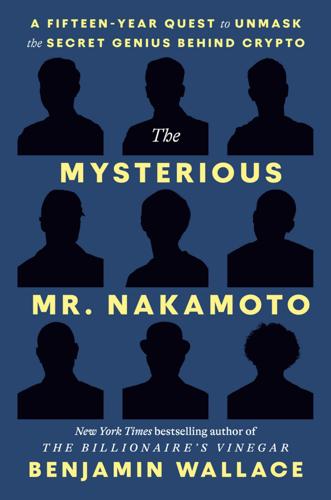
The Mysterious Mr. Nakamoto: A Fifteen-Year Quest to Unmask the Secret Genius Behind Crypto
by
Benjamin Wallace
Published 18 Mar 2025
It was Wright’s communication style that had led five judges in four different courts to question his truthfulness. Wright deserved empathy, not scorn, Ami Klin, head of the Marcus Autism Center at Emory University, testified. When Granath’s lead lawyer, Ørjan Salvesen Haukaas, cross-examined Klin, he asked whether symptoms of autism spectrum disorder and narcissistic personality disorder “might be similar.” “At a superficial level, you can make the case that those things look similar,” Klin answered. “But at a clinical level, they absolutely are not similar.” Wright took a novel and decidedly un-cypherpunk position on how to prove identity.

Machine, Platform, Crowd: Harnessing Our Digital Future
by
Andrew McAfee
and
Erik Brynjolfsson
Published 26 Jun 2017
An inevitable consequence of this trend is that we are acutely attuned to each other, both as individuals and as group members. Virtually all of us care constantly and deeply about how we are relating to others, and about what others think of us (true sociopaths and people with extreme cases of autism spectrum disorder are among the few exceptions). Our MIT colleague and prodigiously talented researcher Deb Roy has pointed out that this social nature gives us a powerful way to predict what jobs and tasks will remain least affected by technological progress: very simply, they’re the ones that tap into our social drives.

The Establishment: And How They Get Away With It
by
Owen Jones
Published 3 Sep 2014
At the same time as the Talha Ahsan case, another extradition case had become a cause célèbre: that of Gary McKinnon, a Glasgow-born Londoner who had hacked into US computers, claiming he was attempting to find information about UFOs. Both McKinnon and Ahsan would be diagnosed with Asperger’s Syndrome, an autism spectrum disorder, and in 2012 McKinnon’s extradition was blocked by the Home Secretary after a ten-year battle in the courts. But Talha’s case received far less attention. It is difficult not to conclude that it would have been far more likely for him to gain a hearing if he had been a non-Muslim white. For six years Talha’s family, backed by the likes of his local MP Sadiq Khan (Labour’s Shadow Justice Secretary from 2010 onwards), battled to have him tried in British courts.
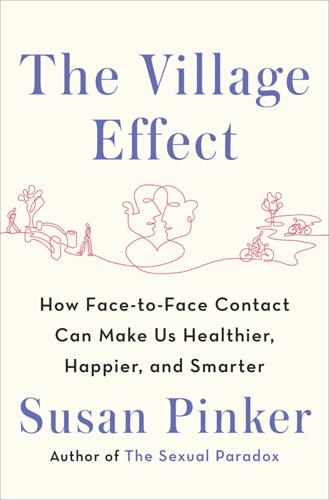
The Village Effect: How Face-To-Face Contact Can Make Us Healthier, Happier, and Smarter
by
Susan Pinker
Published 30 Sep 2013
Stavraky et al., “The Effect of Psychosocial Factors on Lung Cancer Mortality at One Year,” Journal of Clinical Epidemiology 41, no. 1 (1988); Cohen, “Social Relationships and Susceptibility to the Common Cold.” 14. V.P. Goby, “Personality and Online/Offline Choices,” CyberPsychology and Behavior 9 (2006); Q. Tian, “Social Anxiety, Motivation, Self-Disclosure, and Computer-Mediated Friendship,” Communication Research 40, no. 2 (2013). 15. Micah O. Mazurek, “Social Media Use among Adults with Autism Spectrum Disorders,” Computers in Human Behavior 29 (2013). 16. Human Resources and Skills Development Canada, “Indicators of Well-being in Canada: School Drop-Outs,” Employment and Social Development Canada, 2013, http://www4.hrsdc.gc.ca/.3ndic.1t.4r@-eng.jsp?iid=32; Patrice de Broucker, Without a Paddle: What to Do About Canada’s Young Dropouts (Ottawa: Canadian Policy Research Networks, 2005). 17.

What to Think About Machines That Think: Today's Leading Thinkers on the Age of Machine Intelligence
by
John Brockman
Published 5 Oct 2015
Regarding Death, Decline, Disability: TICs and TIMs (toxic industrial chemicals, toxic industrial materials)—from production, use, distribution, and disposition of technology—and electromagnetic exposures (from technology itself, or communication signals therefrom) contribute to the explosion of oxidative stress (OS—cell injury of a type against which antioxidants protect) and associated human afflictions (cancer, neurodegenerative disease, obesity, metabolic syndrome, autoimmune disease, chronic multisymptom illness, autism spectrum disorder). The lattermost conditions seem selectively to attack the best and brightest—the would-be superintelligent?—of our own kind, as others also observe. I suggest that since OS injures mitochondria, the energy powerhouses of cells, and since those whose biology disposes them to greater brain connectivity and activity also demand more cell energy, such potentially superpowered persons have a heightened risk of cell damage and death.
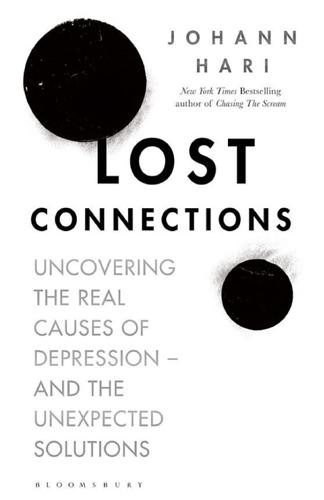
Lost Connections: Uncovering the Real Causes of Depression – and the Unexpected Solutions
by
Johann Hari
Published 1 Jan 2018
Domar, “The risks of selective serotonin reuptake inhibitor use in infertile women: a review of the impact on fertility, pregnancy, neonatal health and beyond,” Human Reproduction 28, no. 1 (2013): 160–171; Dheeraj Rai, “Parental depression, maternal antidepressant use during pregnancy, and risk of autism spectrum disorders: population based case-control study,” BMJ 346 (April 2013); doi: https://doi.org/10.1136/bmj.f2059; André F. Carvalho et al., “The Safety, Tolerability and Risks Associated with the Use of Newer Generation Antidepressant Drugs: A Critical Review of the Literature,” Psychotherapy and Psychosomatics 85 (2016): 270–88, https://doi.org/10.1159/000447034.
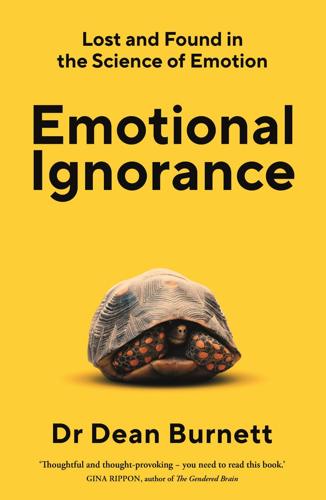
Emotional Ignorance: Lost and Found in the Science of Emotion
by
Dean Burnett
Published 10 Jan 2023
Muncer, ‘The relationship between empathy and Machiavellianism: an alternative to empathizing–systemizing theory’, Personality and Individual Differences, 2008, 44(5): pp. 1203–1211. 68 Baez, S., et al., ‘Men, women … who cares? A population-based study on sex differences and gender roles in empathy and moral cognition’, PLOS One, 2017, 12(6): p. e0179336. 69 Ridley, R., ‘Some difficulties behind the concept of the ‘Extreme male brain’ in autism research. A theoretical review’, Research in Autism Spectrum Disorders, 2019, 57: pp. 19–27. 70 Gould, J. and J. Ashton-Smith, ‘Missed diagnosis or misdiagnosis? Girls and women on the autism spectrum’, Good Autism Practice (GAP), 2011, 12(1): pp. 34–41. 71 Peters, M., ‘Sex differences in human brain size and the general meaning of differences in brain size’, Canadian Journal of Psychology/Revue canadienne de psychologie, 1991, 45(4): p. 507. 72 Rushton, J.P. and C.D.
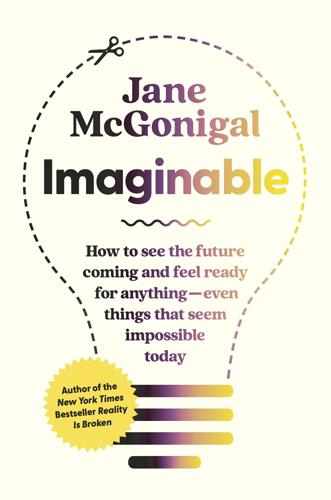
Imaginable: How to See the Future Coming and Feel Ready for Anything―Even Things That Seem Impossible Today
by
Jane McGonigal
Published 22 Mar 2022
Raul, for example, is a father of two young daughters. He lives in Dublin, Ireland, and recently started collecting signals about the future of neurodiversity. Neurodiversity is the wide variation in the human brain regarding sociability, learning, attention, mood, and other mental functions; it includes autism spectrum disorders as part of this normal range, rather than as a pathology or disability. It’s an important topic for Raul, because both of his daughters are autistic. “I always felt like if I wanted the world to be ready for when my daughters were adults, I needed to start now. They are five and seven at the moment,” he told me in an email.
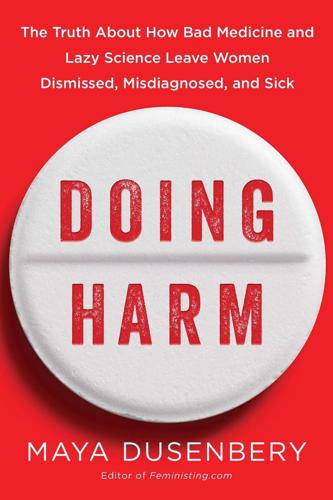
Doing Harm: The Truth About How Bad Medicine and Lazy Science Leave Women Dismissed, Misdiagnosed, and Sick
by
Maya Dusenbery
Published 6 Mar 2018
abortion, 16–17, 23, 26, 63 addiction, 47, 55 Addison’s disease, 148 adverse childhood experiences (ACE), 89 Affordable Care Act (ACA), 13–14, 17 Albee, Robert, Jr., 224 allergies, 297–98 All in My Head (Kamen), 195 Alzheimer’s disease, 3, 20, 27, 47, 243 Ambien (zolpidem), 43–44 American Association of Clinical Endocrinologists, 160 American Autoimmune Related Diseases Association (AARDA), 2, 138, 140, 142, 144, 145, 147, 148 American College of Obstetricians and Gynecologists, 26, 52 American College of Rheumatology, 200 American Gynecological Society, 214 American Heart Association, 110 American Medical Association (AMA), 7, 16, 52, 141; AMA Journal of Ethics article, 77; English’s open letter, 263; JAMA studies on gender pay gap and gender bias, 10 American Psychological Association (APA), Personality Characteristics of Patients with Pain, 195 American Thyroid Association, 159 anesthesia, 43, 53 anti-NMDA receptor encephalitis, 167–69 anxiety, 50, 70, 91; misdiagnosis of other diseases as, 122–24, 146, 151, 154, 159; panic disorder, 124–25, 277; POTS undifferentiated from, 277; somatization and, 78, 82, 89, 92; symptoms attributed to, 61–62, 78, 80–82, 89, 122–24, 126–29, 151, 199 Aronowitz, Robert A., 288 arrhythmias, 110–11 Association of American Medical Colleges, online curriculum database, 54 asthma, 41, 73, 241, 242, 297, 302 Atkins, Chloë, My Imaginary Illness, 102, 103 attention deficit disorder, 117 Aucott, John, 291–92 Authors of Our Own Misfortune? (Kennedy), 87 autism spectrum disorders, 117 autoimmune disease, 1–2, 137–71; ACE and, 89; atypical presentations, 146; autoimmune encephalitis, 168–70; center for, only existing, 146; “chronic complainer” label and, 144–47; death or disability in women and, 138–39; diagnosis of, 2, 79, 144–48; dismissal of symptoms, 146, 147; as epidemic, 163–64; fatigue and, 162–64; gender bias and, 137, 142, 145–46, 148–50, 154, 155, 156; health care costs of, 163; history of, 139–43; as hysteria or psychogenic disorder, 140–43, 268; knowledge gap and, 144, 158; as MUS, 166–67; medical research and, 27, 47, 143; men with, 149; misdiagnosis of, 147, 152, 155–56, 164–66, 167, 192, 314; multiple types in one patient, 146; number of cases, 138; pain and, 178; personality profile for, 143; pregnancy and, 39; prevalence in women, 2, 20, 27, 42, 50, 138; rise in number of cases, 139; sufferers blamed for, 142–43; symptoms, 147; what it is, 138.

There Is No Place for Us: Working and Homeless in America
by
Brian Goldstone
Published 25 Mar 2025
As the kids grew older—Shantel was now eleven and Anthony was eight—he made it a point to carve out time with them. Especially Anthony. He’d been born with alopecia and a pigmentation disorder, and his classmates sometimes mocked him for his pale skin and patchy hair and eyebrows. He had also been diagnosed with autism spectrum disorder, which made his social life at school even more challenging. Anthony seemed to relish these times with his dad—their “adventures,” as he called them. That afternoon, Natalia arrived home to a familiar scene: Anthony and Shantel were watching a movie while Maurice dozed on the couch beside them.
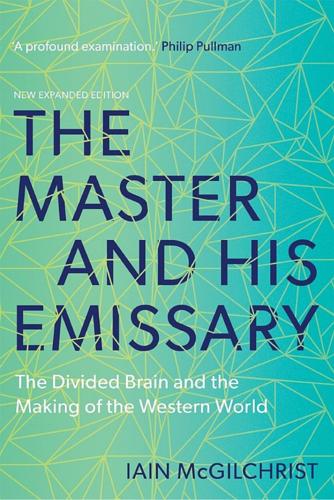
The Master and His Emissary: The Divided Brain and the Making of the Western World
by
Iain McGilchrist
Published 8 Oct 2012
A study by Gallagher and colleagues (2000) suggests both hemispheres contribute, though there is a special role for the right middle frontal gyrus. While most of the above evidence implicates the right frontal region, Saxe and Wexler (2005) demonstrate a role for the right posterior cortex. See also p. 477, n. 380, p. 510, n. 14 & p. 512, n. 76 below; subjects with autism spectrum disorders have problems with ‘theory of mind’ that replicate right hemisphere deficits (Gunter, Ghaziuddin & Ellis, 2002; Ellis & Gunter, 1999). 203. Gallup, 1982; de Waal, 1996, 1998; Povinelli, Nelson & Boysen, 1990, 1992; Povinelli, Parks & Novak, 1991. 204. Gopnik & Meltzoff, 2006; Ritblatt, 2000. 205.
…
E., ‘Changes in our conceptions of localization of certain functions in the brain’, American Journal of Physiology, 1930, 93, pp. 643–7 Dane, S., Ersöz, M., Gümüstekin, K. et al., ‘Handedness differences in widths of right and left craniofacial regions in healthy young adults’, Perceptual and Motor Skills, 2004, 98(2), pp. 1261–4 Dane, S., Gümüstekin, K., Polat, P. et al., ‘Relations among hand preference, craniofacial asymmetry, and ear advantage in young subjects’, Perceptual and Motor Skills, 2002, 95(2), pp. 416–22 Dapretto, M., Davies, M. S., Pfeifer, J. H. et al., ‘Understanding emotions in others: mirror neuron dysfunction in children with autism spectrum disorders’, Nature Neuroscience, 2006, 9(1), pp. 28–30 David, A. S., ‘Tachistoscopic tests of colour naming and matching in schizophrenia: evidence for posterior callosum dysfunction?’, Psychological Medicine, 1987, 17(3), pp. 621–30 ——, ‘The clinical importance of insight: an overview’, in Amador, X. & David, A.

Superintelligence: Paths, Dangers, Strategies
by
Nick Bostrom
Published 3 Jun 2014
A second way to illustrate the concept of quality superintelligence is by noting the domain-specific cognitive deficits that can afflict individual humans, particularly deficits that are not caused by general dementia or other conditions associated with wholesale destruction of the brain’s neurocomputational resources. Consider, for example, individuals with autism spectrum disorders who may have striking deficits in social cognition while functioning well in other cognitive domains; or individuals with congenital amusia, who are unable to hum or recognize simple tunes yet perform normally in most other respects. Many other examples could be adduced from the neuropsychiatric literature, which is replete with case studies of patients suffering narrowly circumscribed deficits caused by genetic abnormalities or brain trauma.
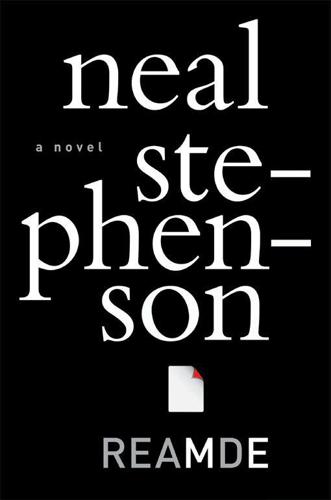
Reamde
by
Neal Stephenson
Published 19 Sep 2011
“What, for your game company?” “Yes, for my Fortune 500 game company.” She was frozen in the watchful sidelong pose, trying to make out if he was just pulling her leg. “The stability of the world currency markets is at stake,” he insisted. She was not going to bite. “We’ll talk later. You know anyone with autism spectrum disorder?” “Yes,” she blurted out, staring at him directly now. “Could you work with someone like that?” Her eyes strayed to her boyfriend. Peter was struggling with the reloading. He was trying to put the rounds into the magazine backward. This had really been bothering Richard for the last half minute or so.
…
But in Pluto’s world, the first bite of the shovel would reveal underlying soil, and the composition of that soil would reflect its provenance in the seasonal growth and decay of vegetation and the saecular erosion of whatever was uphill of it, and once the dwarf dug through the soil he would find bedrock, and the bedrock would be of a particular mineral composition, it would be sedimentary or igneous or metamorphic, and if the dwarf were lucky it might contain usable quantities of gold or silver or iron ore. Reader, they bought his IP. Pluto moved down to Seattle, where he found lodging in a special living facility for people with autism spectrum disorders. He set to work creating a whole planet. TERRAIN, the gigantic mess of computer code that he had single-handedly smashed out in his parents’ cabin in the Brooks Range, gave its name to T’Rain, the imaginary world where Corporation 9592 set its new game. And in time T’Rain became the name of the game as well.
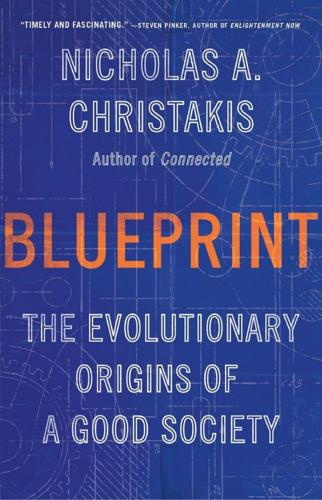
Blueprint: The Evolutionary Origins of a Good Society
by
Nicholas A. Christakis
Published 26 Mar 2019
Mendes, “Cardiovascular Reactivity and the Presence of Pets, Friends, and Spouses: The Truth About Cats and Dogs,” Psychosomatic Medicine 64 (2002): 727–739. 9. K. V. A. Johnson and R. I. M. Dunbar, “Pain Tolerance Predicts Human Social Network Size,” Scientific Reports 6 (2016): 25267. Notably, opioid receptors play a role in both pain relief and social bonding. 10. T. N. Davis et al., “Animal Assisted Interventions for Children with Autism Spectrum Disorder: A Systematic Review,” Education and Training in Autism and Developmental Disabilities 50 (2015): 316–329; R. A. Johnson et al., “Effects of Therapeutic Horseback Riding on Post-Traumatic Stress Disorder in Military Veterans,” Military Medical Research 5 (2018): 3. 11. C. Siebert, “What Does a Parrot Know About PTSD?

Never Bet Against Occam: Mast Cell Activation Disease and the Modern Epidemics of Chronic Illness and Medical Complexity
by
Lawrence B. Afrin M. D.
,
Kendra Neilsen Myles
and
Kristi Posival
Published 15 Jan 2016
Ultimately, though, it of course will require a formal research project with a group of patients with each of these disease, testing them very carefully to see if they do indeed have MCAS and then trying to establish some connection as to how MCAS seems to cause these diseases, before we will be able to say confidently that MCAS indeed is the root cause of these diseases. Acute lymphoid leukemia Acute myeloid leukemia Adenomyosis Allergic rhinitis Anemia of chronic inflammation Anti-phospholipid antibody syndrome Aplastic anemia Asthma Attention-deficit and attention-deficit/hyperactivity disorders Atypical angina Atypical nephrolithiasis Autism spectrum disorders Benign ethnic leukopenia Bipolar affective disorder Blurry vision (episodic) Budd-Chiari syndrome Burning mouth syndrome Burning scalp syndrome Cataplexy Chronic constipation (idiopathic) Chronic cough (idiopathic) Chronic diarrhea (idiopathic) Chronic dyspepsia (idiopathic) Chronic fatigue syndrome Chronic inflammatory demyelinating polyneuropathy Chronic low back pain (idiopathic) Chronic lymphoid leukemia Chronic myeloid leukemia Chronic nausea (idiopathic) Chronic rhabdomyolysis Colon cancer Combined variable immunodeficiency Complex regional pain syndrome (CRPS) Congestive heart failure Conversion disorder Coronary and peripheral artery disease Cronkhite Canada syndrome Delayed-type hypersensitivity drug reaction Depression Dercum’s disease Diabetes insipidus and mellitus (types 1 and 2) Difficult/complicated sickle cell anemia Diverticulitis Dysautonomia Dystonia Ehlers-Danlos syndrome Type III Endometriosis Epilepsy/pseudoepilepsy Erectile dysfunction Essential hypertension Essential tremor Fibromyalgia Fibrous histiocytoma Focal segmental glomerular sclerosis Functional abdominal pain GastroEsophageal Reflux Disease (GERD) Gastroparesis Gilbert’s syndrome Gout (some forms) Granuloma annulare Hemophagocytic syndrome/hemophagocytic lymphohistiocytosis Heparin-induced thrombocytopenia Hidradenitis suppurativa Histiocytosis X and Erdheim-Chester syndrome Hodgkin’s lymphoma Human seminal protein allergy (HSPA) Hyperemesis gravidarum Hypersensitivity vasculitis Hypertriglyceridemia (some cases) Idiopathic adenopathy Idiopathic bradycardia Idiopathic conjunctivitis Idiopathic delayed puberty Idiopathic edema Idiopathic elevated erythrocyte sedimentation rate or C-reactive protein Idiopathic glomerulonephritis Idiopathic hemochromatosis Idiopathic hemorrhagic or embolic stroke or transient ischemic accident Idiopathic hypercoagulability Idiopathic hypereosinophilic syndrome Idiopathic hypokalemia Idiopathic hypomagnesemia Idiopathic hypotension Idiopathic hypothyroidism Idiopathic immunodeficiency Idiopathic nonspecific autoimmunity Idiopathic/“neurogenic”/“pathogenic” pain Idiopathic pancreatitis Idiopathic paresthesias Idiopathic pruritus Idiopathic pulmonary fibrosis Idiopathic splenomegaly Idiopathic tachycardia Idiopathic transaminitis Idiopathic weight gain Idiopathic weight loss Inflammatory bowel disease Interstitial cystitis Irritable bowel syndrome Kidney failure Lactose intolerance Leukocytosis (idiopathic) Leukopenia (idiopathic and “benign ethnic”) Lobular carcinoma in situ Lupus Macrophage activation syndrome Medullary thyroid cancer Merkel cell carcinoma Micronutrient malabsorption Migraine headaches Miscarriage Mixed connective tissue disease Monoclonal gammopathy of undetermined significance Morgellons disease Multiple chemical sensitivity syndrome Multiple sclerosis Myasthenia gravis Myelodysplastic syndrome (especially cases of normal-cytogenetics MDS) Myelofibrosis Myeloma Narcolepsy (idiopathic) Night chills (idiopathic) Night sweats (idiopathic) Nocturnal leg cramps (idiopathic) Non-Hodgkin’s lymphoma Nonspecific arthritis Nonspecific myalgias Nonspecific vasculitis Obesity Obstructive sleep apnea (especially in non-morbidly-obese patients) Panic disorder Periodic hypokalemia Periodic paralysis Polycystic kidney disease Polycythemia (without JAK2 mutation) Polymyalgia rheumatica Post-traumatic stress disorder Postural orthostatic tachycardia syndrome (POTS) Pre-eclampsia/eclampsia Prostate cancer Pseudoxanthoma elasticum Pure red cell aplasia not due to parvovirus B-19 infection Refractory dizziness Relapsing polychondritis Reflex sympathetic dystrophy (RSD) Restless leg syndrome Rheumatoid arthritis Sarcoidosis Schizophrenia Scleroderma Senile purpura Sensory processing disorder (e.g., hyperacusis) Severe postprandial fatigue Sickle cell anemia patients (and, especially, patients with variants of sickle cell anemia) which behave much worse than expected and/or in ways difficult to attribute to sickling Sickle nephropathy Sickle pulmonary hypertension Sjögren’s disease Somatism/psychosomatism Stromal tumor of uncertain malignant potential Substance abuse (IMPORTANT: Note I said in the title to this section, “Some Cases”) Tachy-brady syndrome and perhaps some cases of other cardiac dysrhythmias Temporomandibular joint (TMJ) syndrome Thrombocytopenia (idiopathic/immune) Thrombocytosis (idiopathic and essential) Tics (idiopathic) Tn polyagglutination syndrome Unchelatable sickle transfusional hemosiderosis Unspecified connective tissue disease Unspecified porphyria Unspecified sideroblastic anemia Uveitis Waldenstrom’s macroglobulinemia Author Bio Dr.
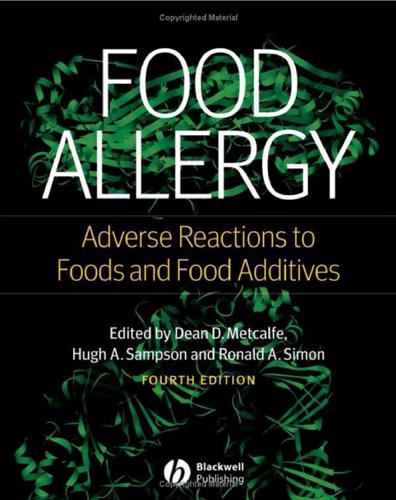
Food Allergy: Adverse Reactions to Foods and Food Additives
by
Dean D. Metcalfe
Published 15 Dec 2008
Double-blind placebo-controlled food challenge (DBPCFC) in an appropriate clinical setting is the gold standard in the diagnosis of food allergy [18] and is the best method to avoid patient and observer bias [19]. 556 Chapter 44 Autism Childhood autism is characterized by significant abnormal or impaired development in social interaction and communication, and restricted repertoire of activity and interests [1]. Immunological abnormalities, gluten sensitivity, and food allergy have been proposed to play a role in the pathogenesis and management of autism [20–22]. However, evidence supporting the beneficial effects of dietary manipulation on behavior and cognition in children with autism spectrum disorder has consisted mainly of anecdotal reports and small trials. Bidet and colleagues [23] reported increased basophil degranulation to food allergens in 10 autistic children and Lucarelli [24] reported improvement in behavioral disturbance in 36 autistic children placed on a cow’s milk elimination diet.
…
J Clin Immunol 2004;24:664–73. 16 Graham DR, Wolf S, Wolff H. Changes in tissue sensitivity associated with varying life situations and emotions: their relevance to allergy. J Allergy 1950;21:478–86. 34 Jyonouchi H, Geng L, Ruby A, Zimmerman-Bier B. Dysregulated innate immune responses in young children with autism spectrum disorders: their relationship to gastrointestinal symptoms and dietary intervention. Neuropsychobiology 2005; 51:77–85. 17 Food intolerance and food aversion. A Joint report of the Royal College of Physicians and the British Nutrition Foundation. J R Coll Physicians Lond. 1984 Apr;18(2):83-123. 35 Dohan FC.
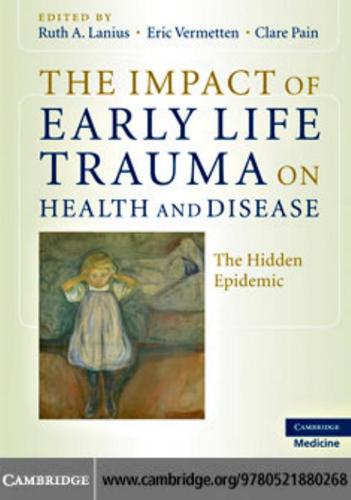
The Impact of Early Life Trauma on Health and Disease
by
Lanius, Ruth A.; Vermetten, Eric; Pain, Clare
Published 11 Jan 2011
Preferential responses in amygdala and insula during presentation of facial contempt and disgust. European Journal of Neuroscience, 24, 2355–2362. 56. Wang, A. T., Lee, S. S., Sigman, M. and Dapretto, M. (2007). Reading affect in the face and voice:€Neural correlates of interpreting communicative intent in children and adolescents with autism spectrum disorders. Archives of General Psychiatry, 64, 698–708. 57. Hubel, D. H. and Wiesel, T. N. (1998). Early exploration of the visual cortex. Neuron, 20, 401–412. 58. American Psychiatric Association. (1994). Diagnostic and statistical manual of mental disorders, 4th edn, Washington, DC:€American Psychiatric Press.